
FISHING • HUNTING • NEWS NWSPORTSMANMAG.COM
Scan for more photos!

Perfect
HISTORIC GRAIN ELEVATOR WITH MODERN CONVENIENCES ON THE COLUMBIA RIVER WITH PRIVATE BOAT DOCK
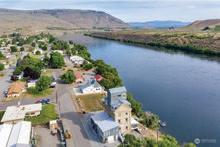
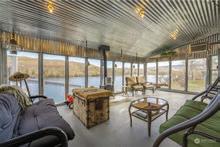

• Featuring over 6,500 sq ft of living space
• 5 Stories all with river views and an elevator
• Expansive master suite with his & her bathrooms and laundry facility
• Guest wing with 2 bedrooms each featuring full baths.
• Additional bedrooms possible
• 2 fully equipped kitchens, penthouse features kitchenette

• Bathroom on every floor
• Shop/garage/man cave 1800+ sq. ft. with ½ bath and laundry facility

• 8 original concrete grain bins/basement with constant temperature for wine storage or additional storage space totaling over 1,000 sq. ft.
• Attached 1 bdrm/1bath apartment with separate entrance
• Close to Award Winning Gamble Sand Golf Resort, Wineries, Casinos and Lake Chelan
OFFERED AT $975,000

WASHINGTON
THE FLOUR TOWER BRIDGEPORT,
for Fishing, Hunting, Boating, Golfing, Exploring and Living Mary Signorelli, Broker 509-670-4972 MarySignorelli@Remax.net









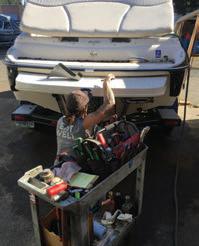




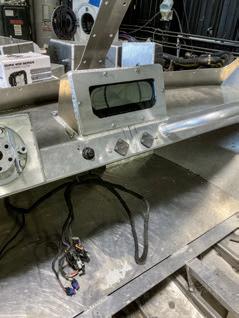

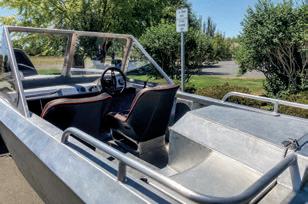

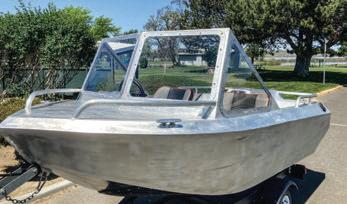
18707 OR-99E, Suite B Hubbard, Oregon 97032 We services all varieties of motors, engines & drive types with particular expertise in early model I/O’s. vulcanmarineservice.com 503-635-3626 FULL SERVICE BOAT & MOTOR REPAIR • MAINTENANCE • QUALITY SERVICE • COMPETITIVE PRICING Only 18 Minutes from Lake Oswego. BAREWEST BUILDS CUSTOM MINI JET BOATS USING JETSTREAM & SITKA ENGINEERING HULLS WE CAN WELD A BASIC HULL OR DELIVER A COMPLETE CUSTOM MINI JET BOAT - WHATEVER YOU CAN DREAM, WE CAN BUILD! CONTACT US FOR OPTIONS & PRICING 503-620-2195 • www.barewestminijetboats.com/mini-jet-boats BAREWEST IS NOW OFFERING CUSTOM BUILT MINI JET BOATS.
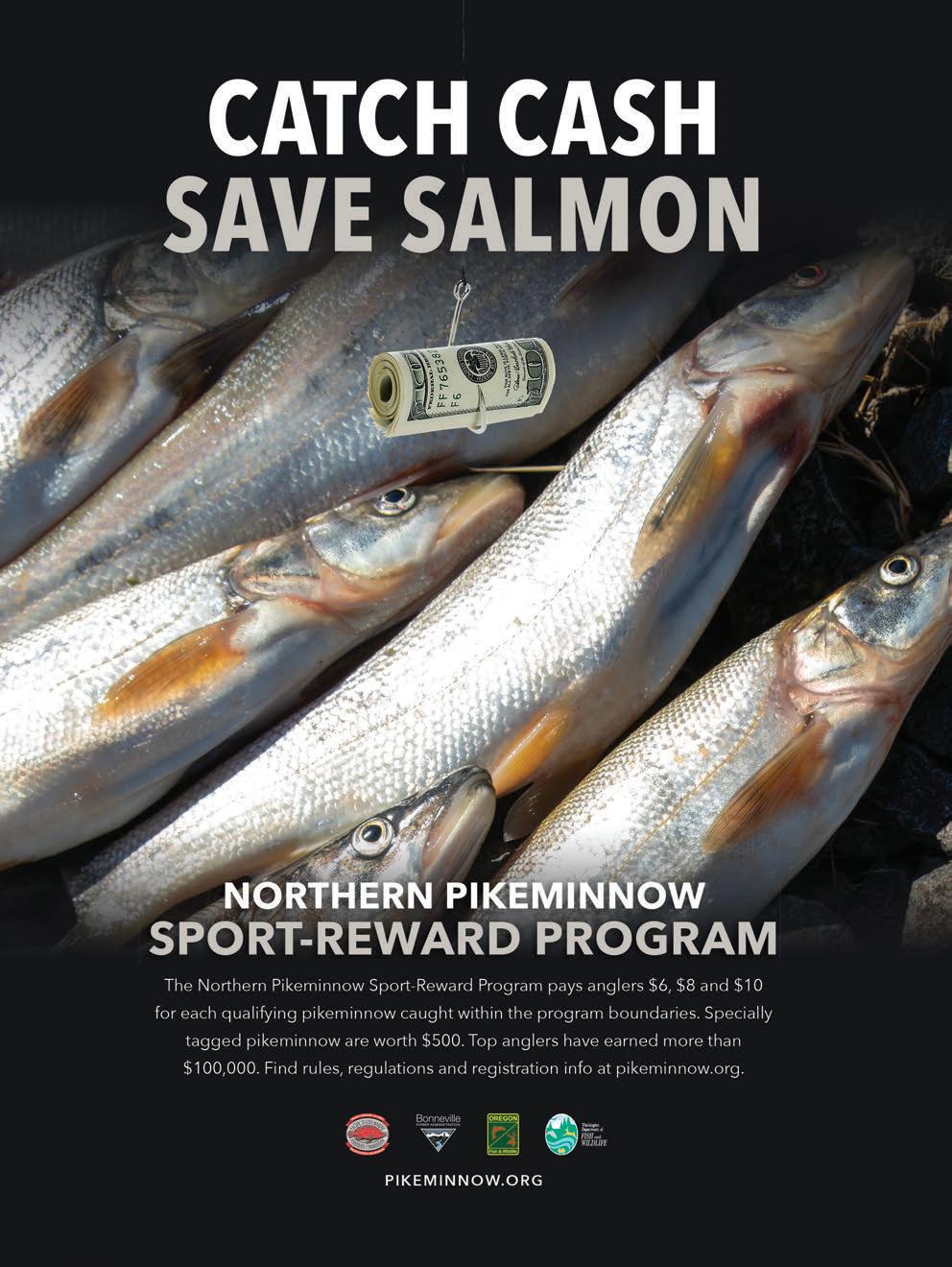








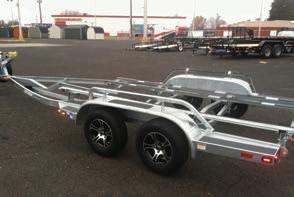
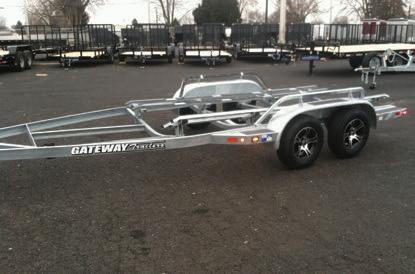
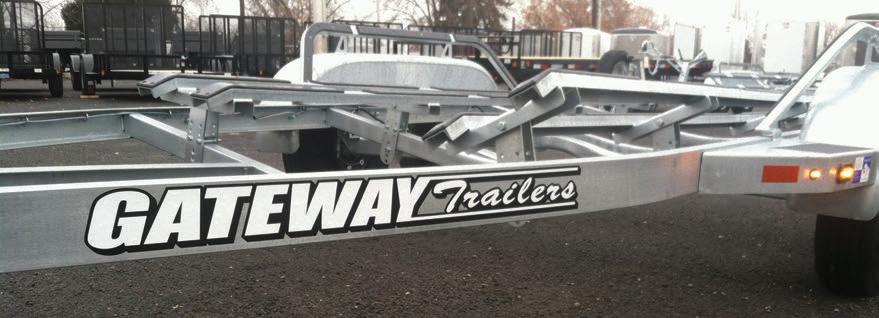

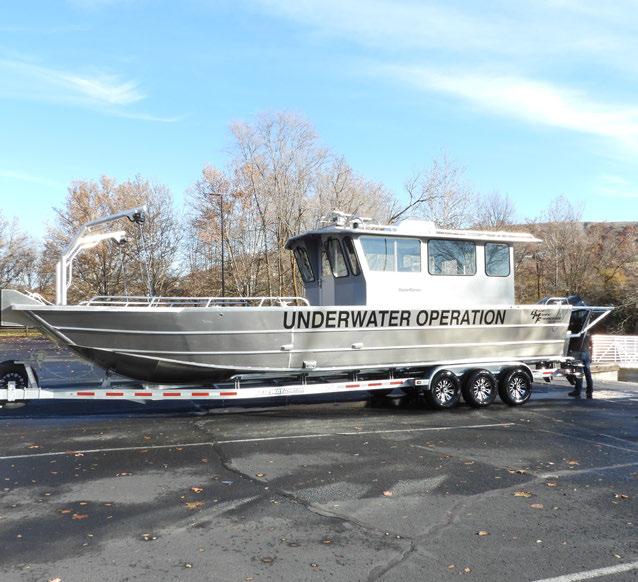
Reliable Quality Service & Craftsmanship For Over 50 Years! Custom Boat Trailers 343 Thain Rd., Lewiston, Idaho www.gateway-materials.com 208-743-0720 • NMMA Certified • All Steel Weld Frame, Fenders & Bunks • 2 YEAR WARRANTY
TIME

Docking and maneuvering your boat in high winds has never been so easy. Let the Joy Stick do it for you.
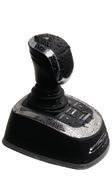
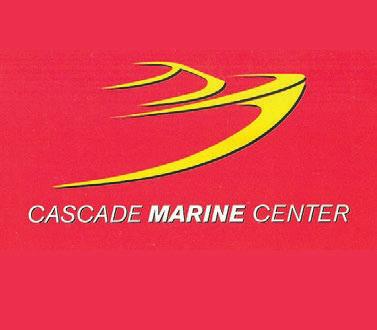


GPS position hold and heading hold is included.
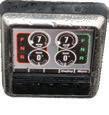
8 and 99 Kicker Motors in stock. Call
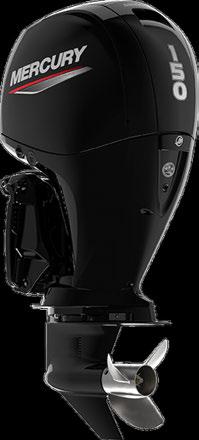
14900 SE STARK ST. • PORTLAND, OR 97233 HOURS: MON-FRI 8AM-6PM • SAT 9AM-3PM MOTORS MUST BE CAPABLE OF ACCEPTING JOYSTICK APPLICATION. CERTAIN LIMITATIONS APPLY. 503-255-8487 • CascadeMarineCenter.com Good Used Boats, Repair Parts, Quality Service, Knowlegeable Staff SALES • SERVICE • ENGINES
now!
Seastar Solutions Optimus EPS steering
YOU THE
Subject to approval by mercury and dealer. Subject to terms. See dealer for details. NO SALES TAX IN OREGON Mercury Marine Outboard Promotion HorespowerConsumer Rebate 9.9 Pro Kicker $100 15 Pro Kicker $150 40 & 40 Jet $200 50 $250 60 & 65 Jet $400 75 & 80 Jet $500 90 $600 115 & 115 ProXS$1,000 150 $1,250 150 ProXS $1,500 350 $2,000 400 $2,250
GETTING
RIGHT PART THE FIRST
Volume 15 • Issue 12
PUBLISHER
James R. Baker
EDITOR
Andy “Who Gave The Kid On The Boat The Northwest Sportsmans Magazine Facebook Login?” Walgamott

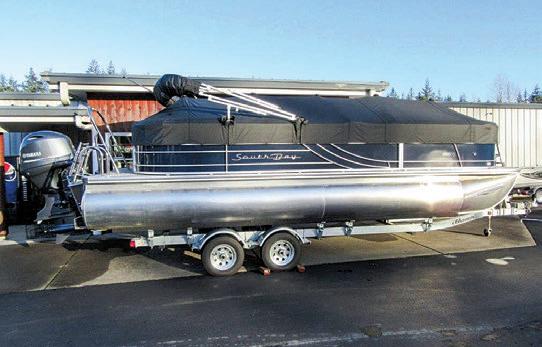
THIS ISSUE’S CONTRIBUTORS






Dave Anderson, Jason Brooks, Scott Haugen, Jeff Holmes, Rick Itami, David F. Johnson, MD Johnson, Randy King, Don McBride, Buzz Ramsey, Troy Rodakowski, Dave Workman, Mark Yuasa
EDITORIAL FIELD SUPPORT
Jason Brooks
GENERAL MANAGER
John Rusnak
SALES MANAGER
Paul Yarnold
ACCOUNT EXECUTIVES
Lucas Hoene, Mike Smith, Zachary Wheeler
DESIGNER

Lesley-Anne Slisko-Cooper
PRODUCTION ASSISTANT
Kelly Baker
OFFICE MANAGER/COPY EDITOR
Katie Aumann
INFORMATION SYSTEMS MANAGER














Lois Sanborn
WEBMASTER/DIGITAL STRATEGIST
Jon Hines
ADVERTISING INQUIRIES ads@nwsportsmanmag.com

CORRESPONDENCE

Email letters, articles/queries, photos, etc., to awalgamott@media-inc.com, or to the mailing address below.


ON THE COVER
Longtime Northwest Sportsman contributor Jason Brooks holds a coho he caught on a coastal river while twitching a jig. (JASON BROOKS)
DEPARTMENT OF SOCIAL SERVICES
Like us on Facebook, follow us on Twitter, and get daily updates at nwsportsmanmag.com.




MEDIA INDEX PUBLISHING GROUP 941 Powell Ave SW, Suite 120 Renton, WA 98057 (206) 382-9220 • (800) 332-1736 Fax (206) 382-9437
media@media-inc.com
mediaindexpublishing.com
14 Northwest Sportsman SEPTEMBER 2023 | nwsportsmanmag.com
Your LOCAL Hunting & Fishing Resource
YOUR
WE OFFER A LARGE INVENTORY OF QUALITY BRANDS 1-877-426-0933 verles.com
COMPLETE HUNTING, BOATING, FISHING AND REPAIR DESTINATION SINCE 1948.
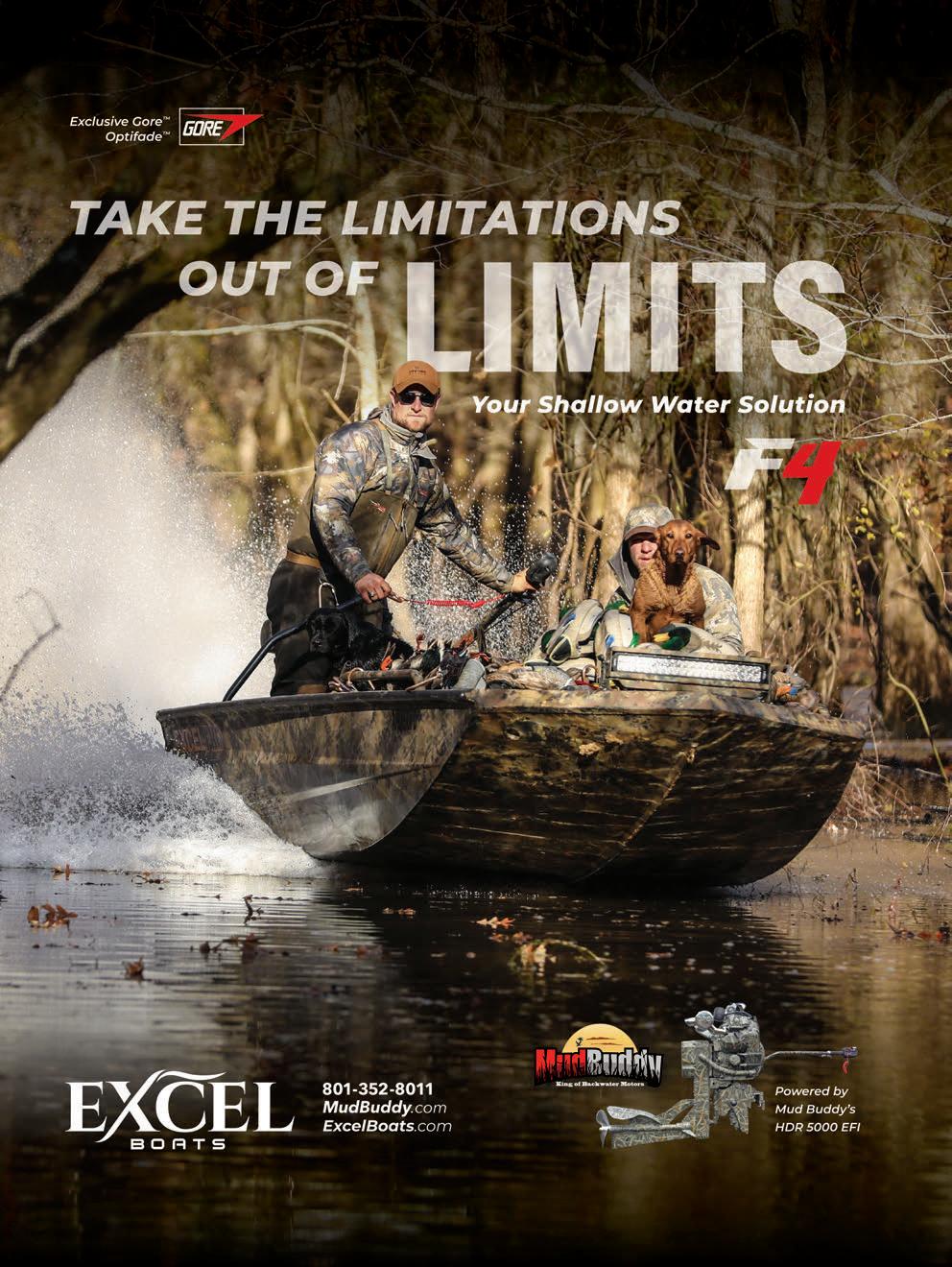
VISIT MOSES LAKE Your Home Base For Adventure

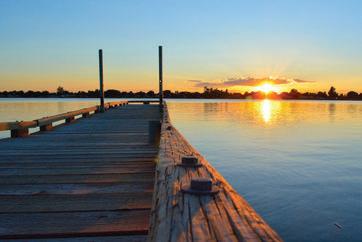
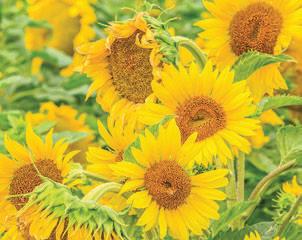
For a list of hotel/motels, restaurants, and other attractions, visit www.tourmoseslake.com.





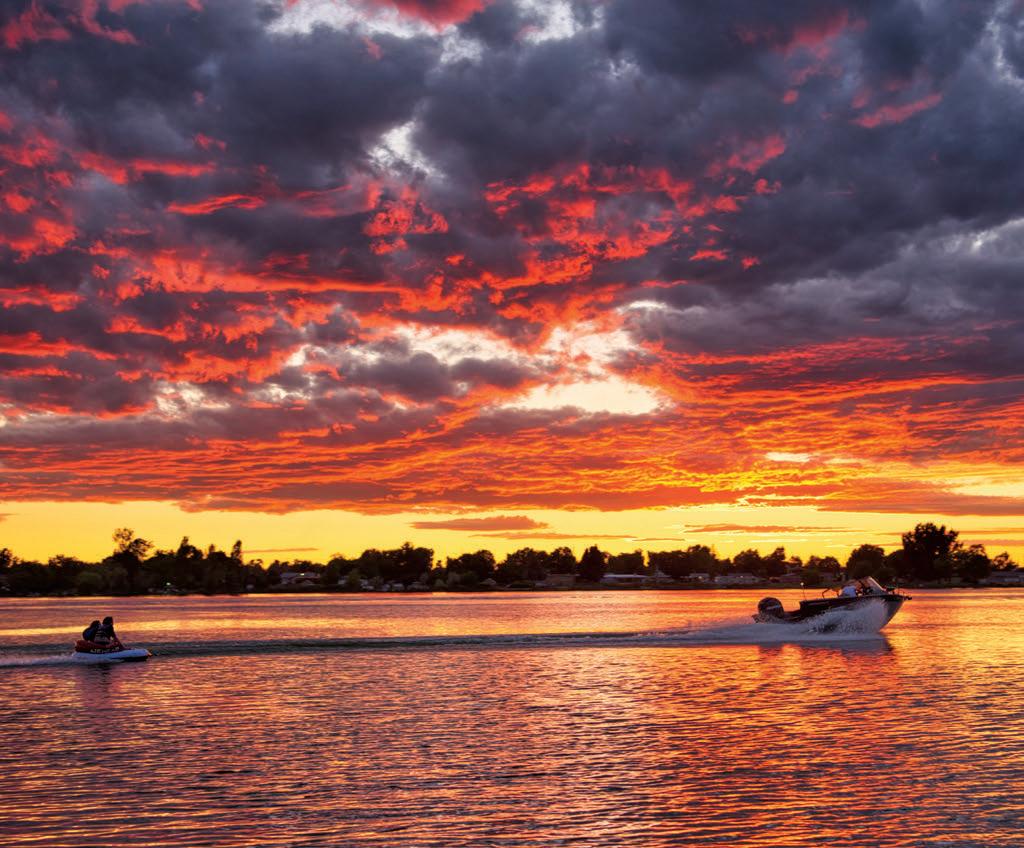
W A S H I N G T O N Tour
Moses Lake
© Breanna Singleton © Sarah Richie
ALSO INSIDE
57 PUGE T SOUND COHO FORECAST LOOKING GOOD
Things are looking bright for Puget Sound coho anglers, thanks to a forecast of nearly three-quarters of a million coho. Mark Yuasa previews top spots and best gear, as well as looks at Grays Harbor and Willapa Bay fall salmon prospects – and shares some worrisome news about the Washington Coast razor clam season and domoic acid levels.
83 WEED THE REACH FOR KINGS
Filamentous algae and milfoil can make for tough September salmon fishing on the Mid-Columbia, but one Hanford Reach sharpie knows how to cut through the schmutz and salad for early upriver brights. Jeff Holmes shares his secrets.

92 SNAKE-CLEARWATER STEELHEADERS BACK IN BIZ
After seeing lighted lure purveyors, er, pull the plug over the years, there are new local offerings on the market for Lewiston-Clarkston steelheaders. Rick Itami shares the fishery’s history, the rise of Night Strike lures and how to run blinking plugs for A- and B-runs.
123 TO THE FIELDS, OREGON WINGSHOOTERS!
Fall bird hunting seasons begin to open up in the Beaver State this month, and Troy Rodakowski has prospects and tips for doves, quail, bandtail pigeons and more.

135 DOUBLE UP ON FALL TURKEY, GROUSE
Overlapping seasons and habitats in Oregon and Washington can make for great turkey and grouse combo hunting opportunities. David F. Johnson details how to make it happen and some of the better areas to try your luck.
SUBSCRIBE TODAY!
THE BLACKTAIL WHISPERER’S WORDS OF WISDOM
Yes, the gray ghosts west of the Cascades actually do exist, and Scott Haugen should know – he wrote the book on hunting ’em. MD Johnson hit him up for advice on arrowing a September buck.
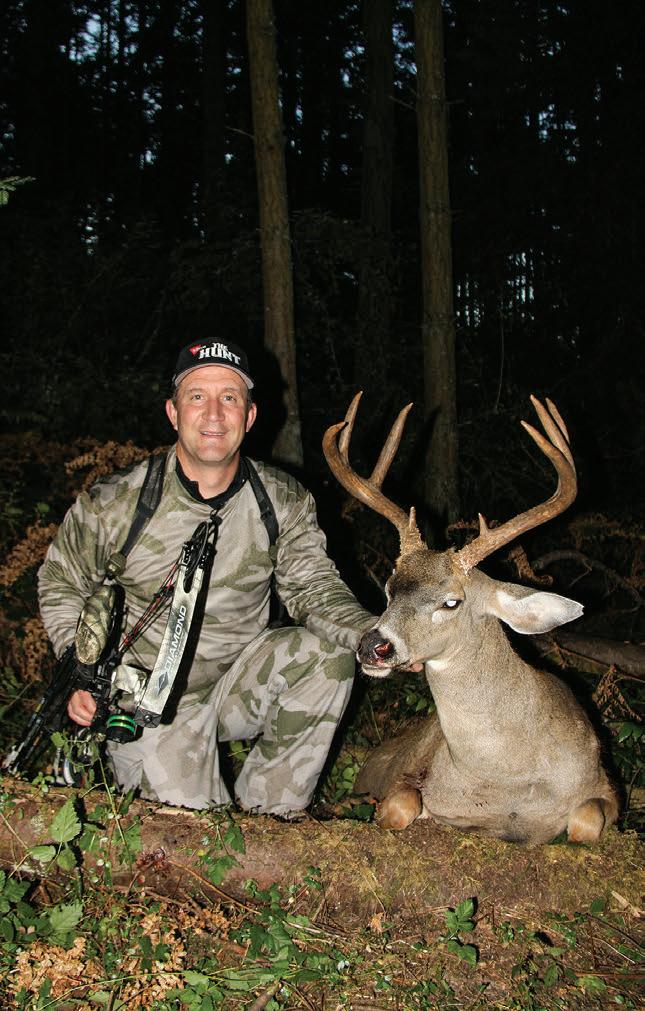
nwsportsmanmag.com | SEPTEMBER 2023 Northwest Sportsman 17 NORTHWEST SPORTSMAN is published monthly by Media Index Publishing Group, 941 Powell Ave SW, Suite 120, Renton, WA 98057. Periodical Postage Paid at Portland, OR and at additional mail offices. (USPS 025-251) POSTMASTER: Send address changes to Northwest Sportsman, 941 Powell Ave SW, Suite 120, Renton, WA 98057. Annual subscriptions are $39.95 (12 issues), 2-year subscription are $59.95 (24 issues). Send check or money order to Media Index Publishing Group, or call (206) 382-9220 with VISA or M/C. Back issues may be ordered at Media Index Publishing Group offices at the cost of $5 plus shipping. Display Advertising. Call Media Index Publishing Group for a current rate card. Discounts for frequency advertising. All submitted materials become the property of Media Index Publishing Group and will not be returned. Copyright © 2023 Media Index Publishing Group. All Rights Reserved. No part of this publication may be copied by any means, electronic or mechanical, including photocopying or recording by any information storage or retrieval system, without the express written permission of the publisher. Printed in U.S.A.
Go to nwsportsmanmag.com for details. 107
CONTENTS VOLUME 15 • ISSUE 12
(SCOTT HAUGEN)

COLUMNS
48 NORTHWEST PURSUITS
September’s For Salmon Fishing
As summer fades into early fall, salmon fishing opportunities take off across Western Washington. Jason spotlights some of the better waters to hit for coho and more, and how to catch them.
73 BUZZ RAMSEY Slammin’ Chinook Above Bonneville
Buoy 10 and the Hanford
Reach get the lion’s share of attention when it comes to Columbia fall Chinook, but the gorge fisheries between them are no slouch. Buzz shares what works off the mouth of Drano Lake, one of several tribs that will light up this month.
117 BECOMING A HUNTER The Secret To A Successful Hunt
Dave A. admits that when he was younger he was a little too intense in his hunting, and it eventually rubbed family members the wrong way. Learn how he figured out how to make deer and elk hunting fun again – and boosted his success in the woods.
129 GUN DOG On Skunks, Seeds And E-bikes
Hunting season is here, but your four-legged partner faces on-the-job hazards that you need to be prepared to handle. Scott shares how to destink and deburr your gun dog, and a great new training aid he’s discovered.
152 CHEF IN THE WILD Barren Of Bears, But Not Blues
It was black bears that were on Chef Randy’s mind while hunting high in an Idaho national forest, but it was blue grouse that ended up on his menu – just don’t call them wings!
ON TARGET Grouse Season Is Upon Us
Make no mistake, Dave W. knows his way around guns, loads and chokes for grouse – his favorite bird to hunt –but he switched things up this month by asking the guys on HuntingWashington what theirs were, and he got some interesting takes.
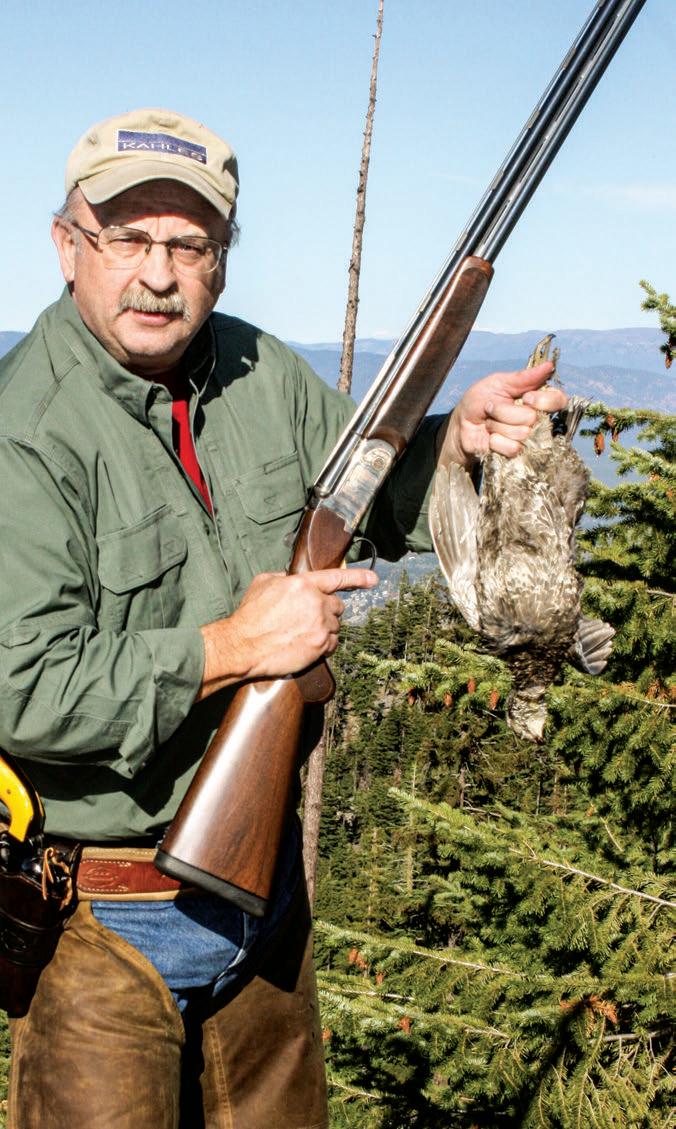
nwsportsmanmag.com | SEPTEMBER 2023 Northwest Sportsman 19
145
(DAVE WORKMAN)

THE BIG PIC The Truth About King Of The Reach
With misinformation rife about the fall live-capture Chinook derby on the Mid-Columbia, cofounder Don McBride sets the record straight.
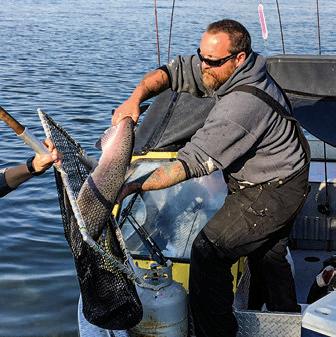
DEPARTMENTS
25 THE EDITOR’S NOTE
The heavy thumb that’s pressing down on Washington wolf management decisions
37 READER PHOTOS
Scores of sockeye, Chinook, shrimp, brine spiders and more!
37 PHOTO CONTEST WINNER
Monthly Coast and Kershaw prize-winning pic
41 THE DISHONOR ROLL
New website spreads the word about Oregon poachers’ toll; Kudos; Jackass of the Month
43 DERBY WATCH
Everett Coho Derby coming up Sept. 23-24; Coos Basin derby benefits fisheries; More upcoming/ ongoing events
45 OUTDOOR CALENDAR
Upcoming fishing and hunting openers, events, deadlines, more

nwsportsmanmag.com | SEPTEMBER 2023 Northwest Sportsman 21
30
(WDFW)
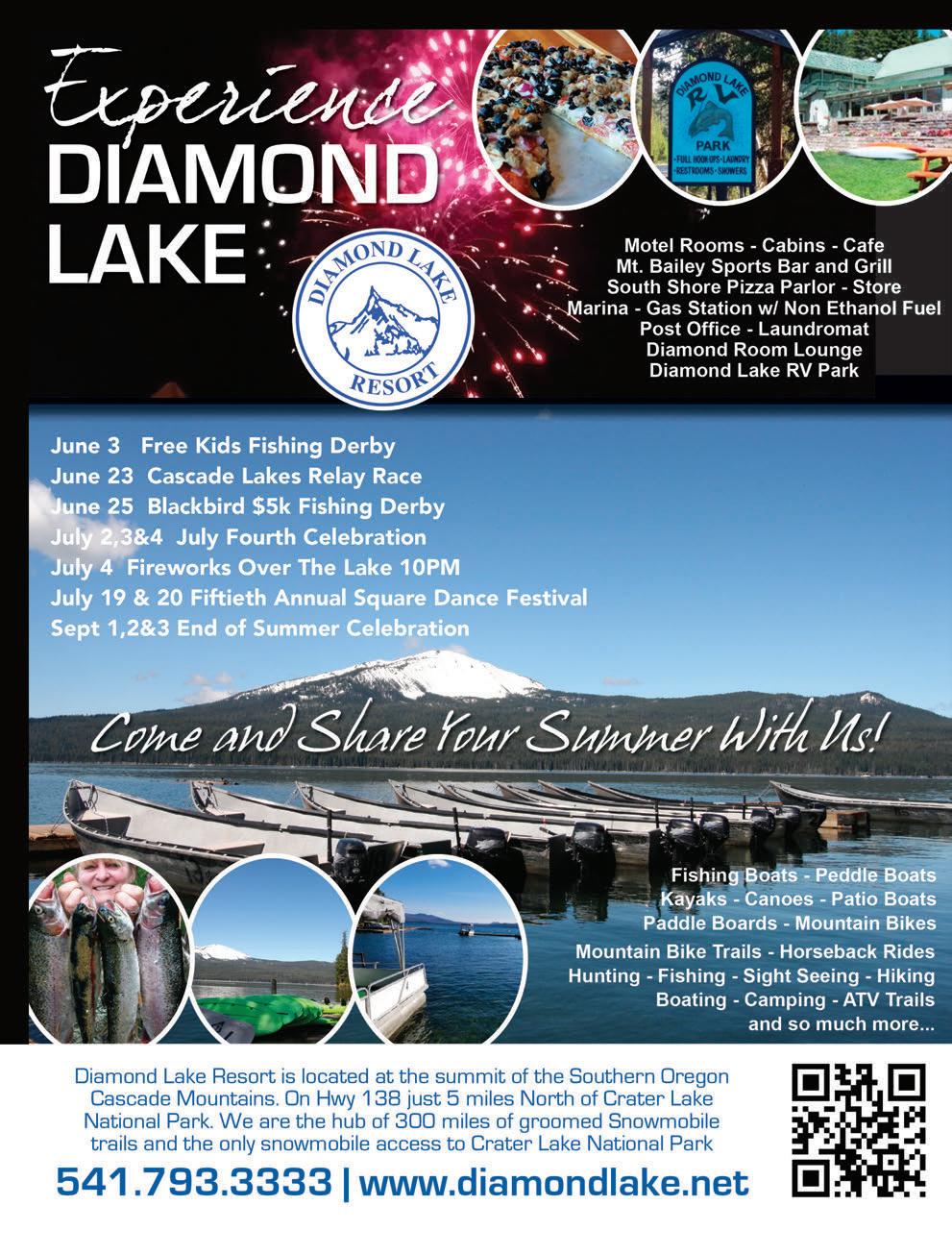




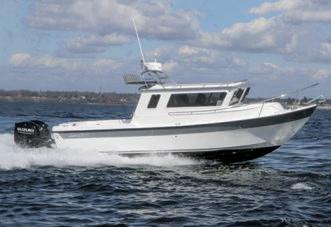


WWW.SEASPORTBOATS.COM 26’ KENAI 26’ KODIAK 24’ EXPLORER ALASKA MINING & DIVING Anchorage, AK 907-277-1741 ALBERNI POWER & MARINE Port Alberni, BC 250-724-5722 MASTER MARINE Mt. Vernon, WA 360-336-2176 Y MARINA, INC. Coos Bay, OR 541-888-5501 Y MARINA, INC. Florence, OR 541-590-3313 WWW.SEASPORTBOATS.COM/DEALERS FIND YOUR NEAREST PACIFIC NORTHWEST DEALER 28’ COMMANDER BUILT DIFFERENT HANDMADE IN THE PACIFIC NORTHWEST CUSTOM BUILT TO FISH ANY CONDITIONS
THE EDITOR’S NOTE
You’ll never guess who pressed their thumb on the scale of Washington wolf management. Well, I assume you will, given one of the mugshots accompanying this Editor’s Note. The other pic is of the gent who called him on that and the potentially disastrous legal repercussions.

Last month, Governor Jay Inslee made a bold “request” to the Fish and Wildlife Commission to not adopt the Department of Fish and Wildlife’s proposed recommendation to downlist the state’s packs from endangered to protected-sensitive status via the agency’s periodic species review. It drew a strong rebuke a few days later from WDFW Director Kelly Susewind, who wrote that making that request to the “decision makers you appoint even before the Department completes its recommendation is premature and undermines the process.”




It’s a microcosm of the nationwide, never-ending tug of war over managing wolves, one of the country’s true wildlife success stories, including in Washington, where their numbers have done nothing but increase every year since 2008 and confirmation of the first modern-day pack. But having appointed or reappointed a supermajority of the nine-member commission, and apparently in the pockets of donors and/or preservationist groups, Inslee is making a pretty bald power move with state critter management.
IN HIS LETTER, the governor claimed wolf downlisting “doesn’t fully follow” and would “contradict” WDFW regulations around wildlife classifications, but Susewind rebutted that that “legal conclusion … is inconsistent with the Department’s long-standing interpretation of the administrative rule that the Department drafted and adopted.”
According to WDFW, wolves have “made significant progress toward recovery” goals – especially in the state’s long-since-federallydelisted northeastern corner, where they’re tribally hunted and lethally removed for livestock depredations – and overall no longer meet the definition of endangered, e.g., “seriously threatened with extinction throughout all or a significant portion” of their range. But just beginning to establish themselves in the third of the state’s three management regions, the agency wants to downlist instead of delist. continued on page 26
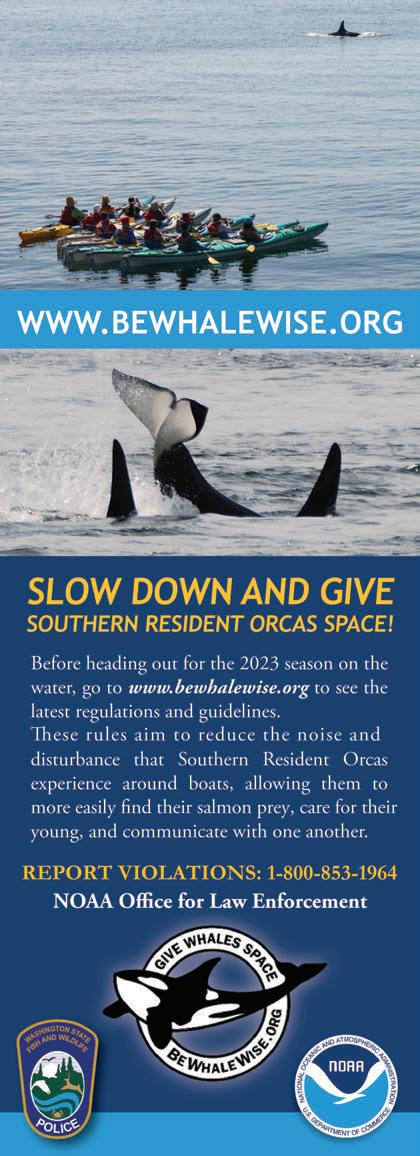
nwsportsmanmag.com | SEPTEMBER 2023 Northwest Sportsman 25
Washington Governor Jay Inslee and Department of Fish and Wildlife Director Kelly Susewind. (GOVERNOR’S OFFICE; WDFW)
That means hunting isn’t on the agenda – the commission would also need to designate wolves as a game species. But downlisting would demonstrate clear progress has been made toward recovery goals and reward the patience of those who’ve bought into wolf recovery – grudgingly or otherwise – and have worked towards that and some semblance of coexistence.
BUT OTHERS WANT wolves to be listed forever, and you might count Inslee among them. He speculates that Idaho’s plans to reduce wolf numbers will impact emigration to Washington, dropping the odds of state recovery over 50 years to “27 percent.”That seems far-fetched, especially given how hard wolves are to hunt, but not so far-fetched is that his letter incautiously provides fodder for suing the commission and WDFW over the wording of a Washington Administrative Code related to state and federal ESA designation overlays. That is “particularly troublesome in such a litigious atmosphere,” responded Susewind. “Further, an indictment written from your office in this manner fuels distrust of the Department and undermines our critical mission to conserve fish and wildlife in the state.”
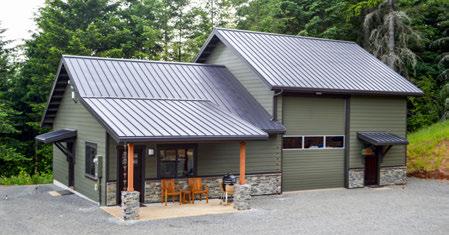
This isn’t the first carnivore species Inslee has waded into the commission’s wheelhouse on, nor will it be the last. As it stands, next up is for WDFW and Susewind to finalize the recommendation and send it to the commission for a decision. That had been scheduled for October but appears to be a bit further down the road now. Still, with how predator-friendly the WDFW policy oversight panel has become and how into the “precautionary principle” some members are, this is shaping up to be a landmark decision.
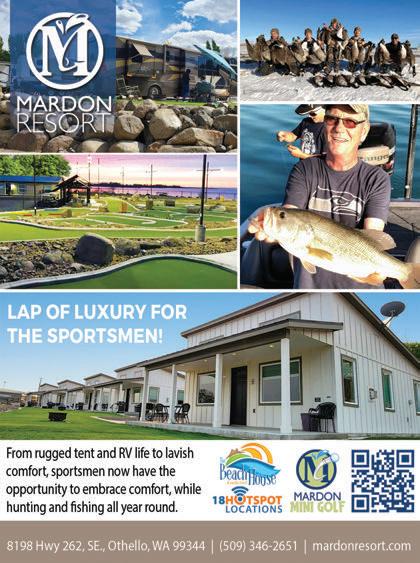 –Andy Walgamott
–Andy Walgamott





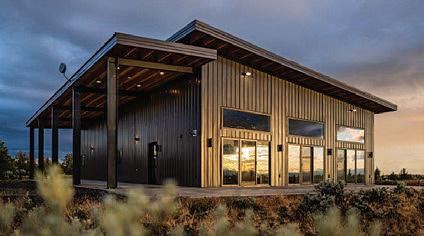


26 Northwest Sportsman SEPTEMBER 2023 | nwsportsmanmag.com
503.668.7211 Toll-free: 855.668.7211 www.wsbnw.com Manufactured in Sandy, Oregon More than a building...it’s a solution! PRE-ENGINEERED STEEL FRAME STRUCTURES COST COMPETITIVE | MAINTENANCE FRIENDLY Editor’s Note, continued from page 25
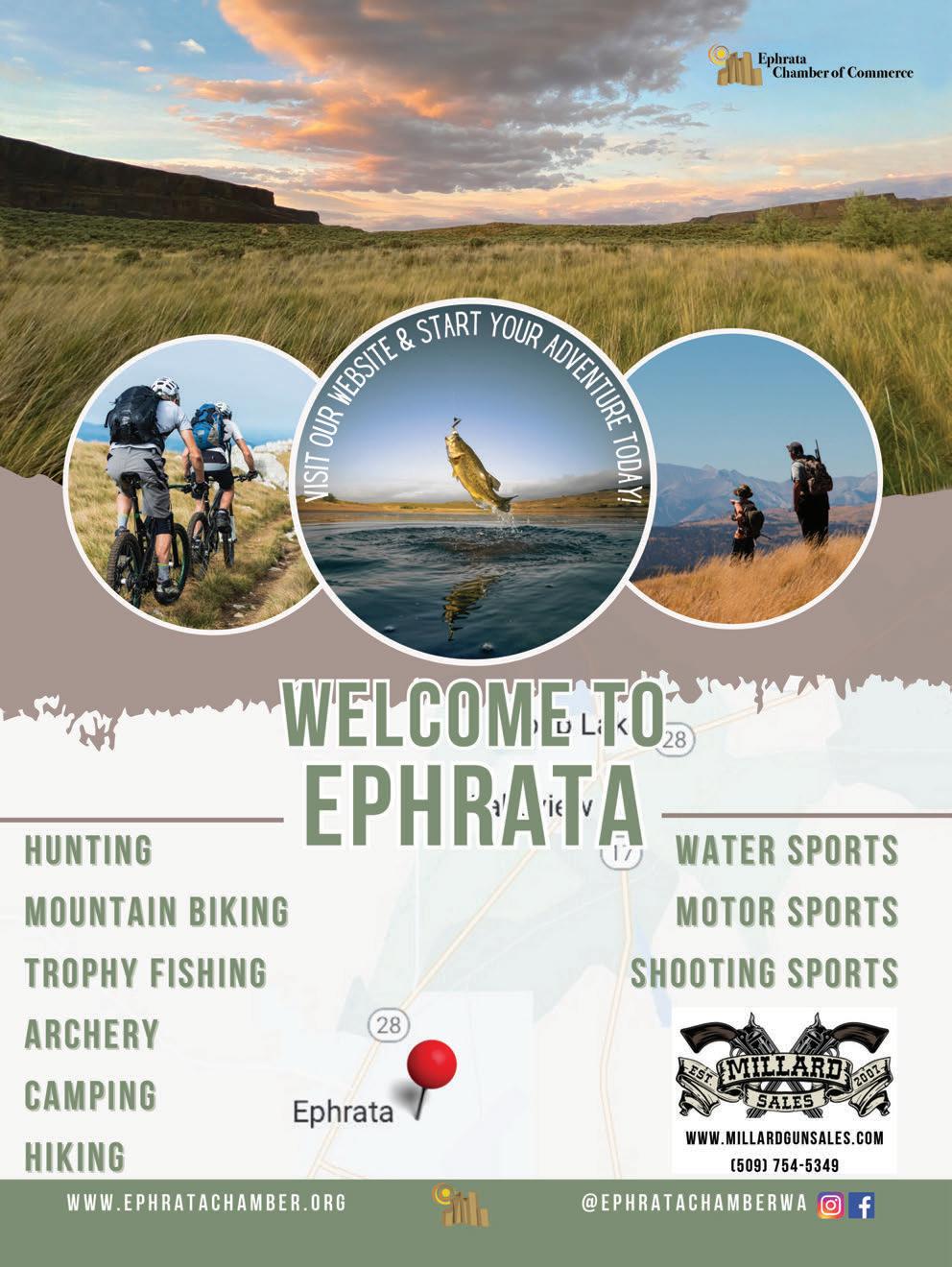
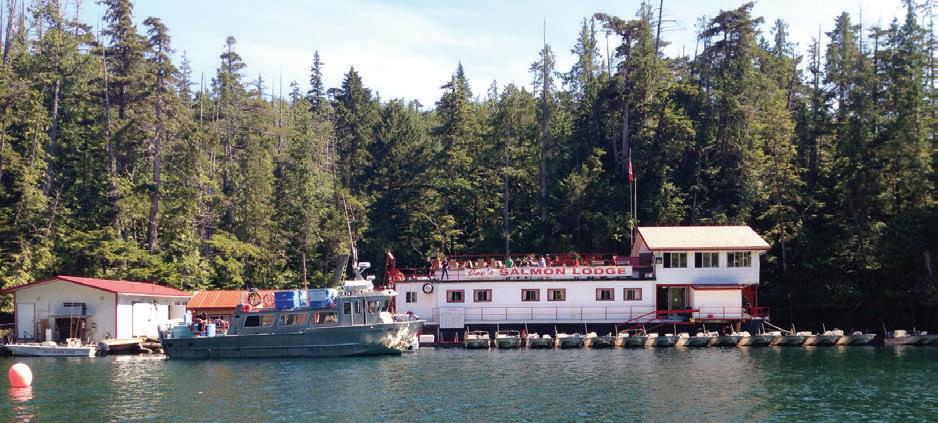
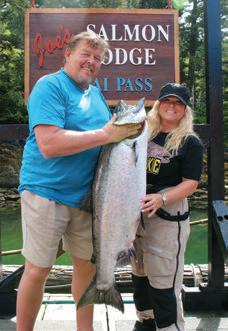



28 Northwest Sportsman SEPTEMBER 2023 | nwsportsmanmag.com Help Us Celebrate Our 38th Season in Hakai Pass, BC! JOE’S “CENTRAL COAST FISHING ADVENTURES” INCLUDE: • Round-trip airfare from Vancouver, BC • Unlimited use of 17-foot Boston Whalers and unlimited fishing time • Delicious home cooked meals • Box lunches, beverages and bait • A beautiful lounge and sun deck • Heavy-duty Wetskin raingear and boots • Complete fish care: filleted, vacuum sealed, flash frozen and boxed to be flown back with you • Rods and reels all in A-1 condition • Complete boat care: boats are cleaned and fueled every time you come in • Bait and tackle for both salmon and bottom fishing CALL TOLL FREE 1-888-452-8822 email: doug@joessalmonlodge.com 49 pound spring! 2 FOR 1 SPECIAL! $3,500 Sept. 3-7, 2023 (Mention this ad. Tax is not included. Prices are in U.S. Funds.) NOW BOOKING FOR 2024! DESTINATION CANADA HUNT • FISH • TRAVEL


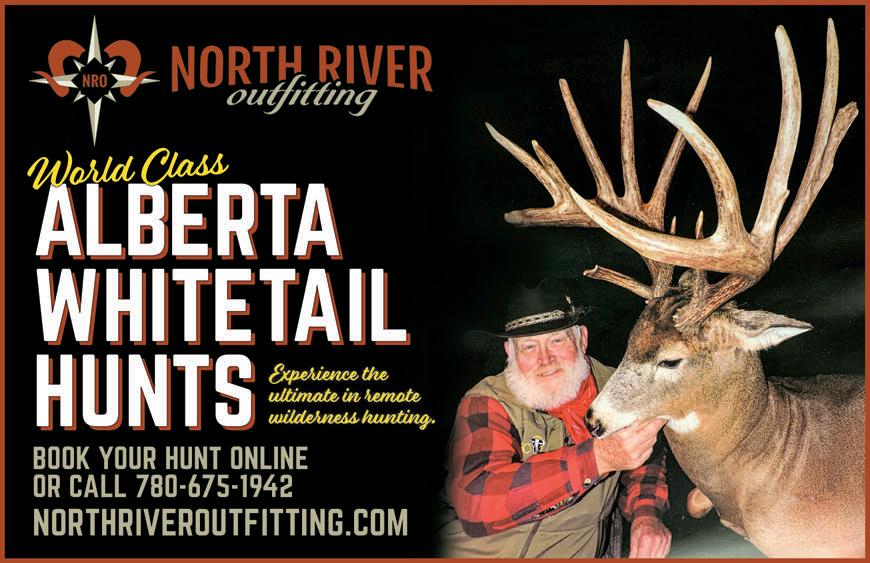
nwsportsmanmag.com | SEPTEMBER 2023 Northwest Sportsman 29 DESTINATION CANADA HUNT • FISH • TRAVEL
The Truth About King Of The Reach
With misinformation rife about the fall live-capture Chinook derby on the Mid-Columbia, a cofounder sets the record straight.
By Jeff Holmes and Don McBride
“Don’t argue on Facebook, Jeff. Delete it.”
This is advice I often give myself these days in the swamp that is outdoor social media. And these were the exact words that audibly escaped my lips as I deleted a combative Facebook post in defense of my friend Don McBride and the wildly successful and cool King of the Reach fishing derby.
Cohosted by Coastal Conservation Association Tri-Cities Chapter and the Washington Department of Wildlife, King of the Reach is a stellar example of citizen science where anglers have helped to transform the genetic diversity of Priest Rapids Hatchery’s fall Chinook stock, ensuring the continued operation of the production program. Despite the presence of wild spawning fish in the Mid-Columbia’s Hanford Reach, Priest Rapids Hatchery and its millions of smolts released annually have a major impact on Alaskan commercial fisheries, so much so that the Alaska Department of Fish and Game serves on the board for the hatchery. Federal law mandates diversifying genetics of hatchery fish to reduce or ideally eliminate impacts on wild spawners and to ensure the health of the hatchery stock. It is this absolute need to infuse wild genetics into the hatchery program at Priest Rapids that drives the King of the Reach derby. Without anglers’ contributions, hatchery operators at the Grant County Public Utility District would still need to hire contractors to catch and provide the salmon.
Despite the awesome success story that King of the Reach is, a group of guides and recreational anglers is bemoaning their previous involvement in the derby, asserting in some cases that the event has “ruined” fishing on the Reach. Bluntly, this is ridiculous. While the total number of wild fish caught at the derby fluctuates from year to year in response to the total run size, consistently the derby removes approximately .6 percent – 500 to 1,000 fall Chinook – per year. Meanwhile, the average recreational take on the Reach is 12,000 fish.
A few tougher seasons on the Reach has led a small group of dissenting anglers to believe the derby is for sure why they’re having a hard time catching fish. Rather than continue writing my deleted Facebook post in this fine magazine in the form of an article, I will stand down. Here, framing the big picture and grounding us in reality and facts, McBride explains why the derby exists, why he’s proud to help lead the event, and why those linking tough fishing to the King of the Reach derby are not correct in these criticisms.
Imagine having no limit on how many fish you could bring to the boat. Now imagine that it’s not only legal, it’s helping the fishery. Does it sound too good to be true? It gets even better. All this happens in one
of the most beautiful ecological treasures in the Northwest, and it’s just around the corner. The 11th Annual King of the Reach live-capture salmon derby is October 27-29 on the Hanford Reach, a nearly pristine, free-

30 Northwest Sportsman SEPTEMBER 2023 | nwsportsmanmag.com
A fall Chinook is collected from participants at the King of the Reach live-capture derby, which helps ensure that the genetics of salmon raised at a hatchery on the last free-flowing stretch of the Columbia River stay as close to wild fish as possible. (WDFW)
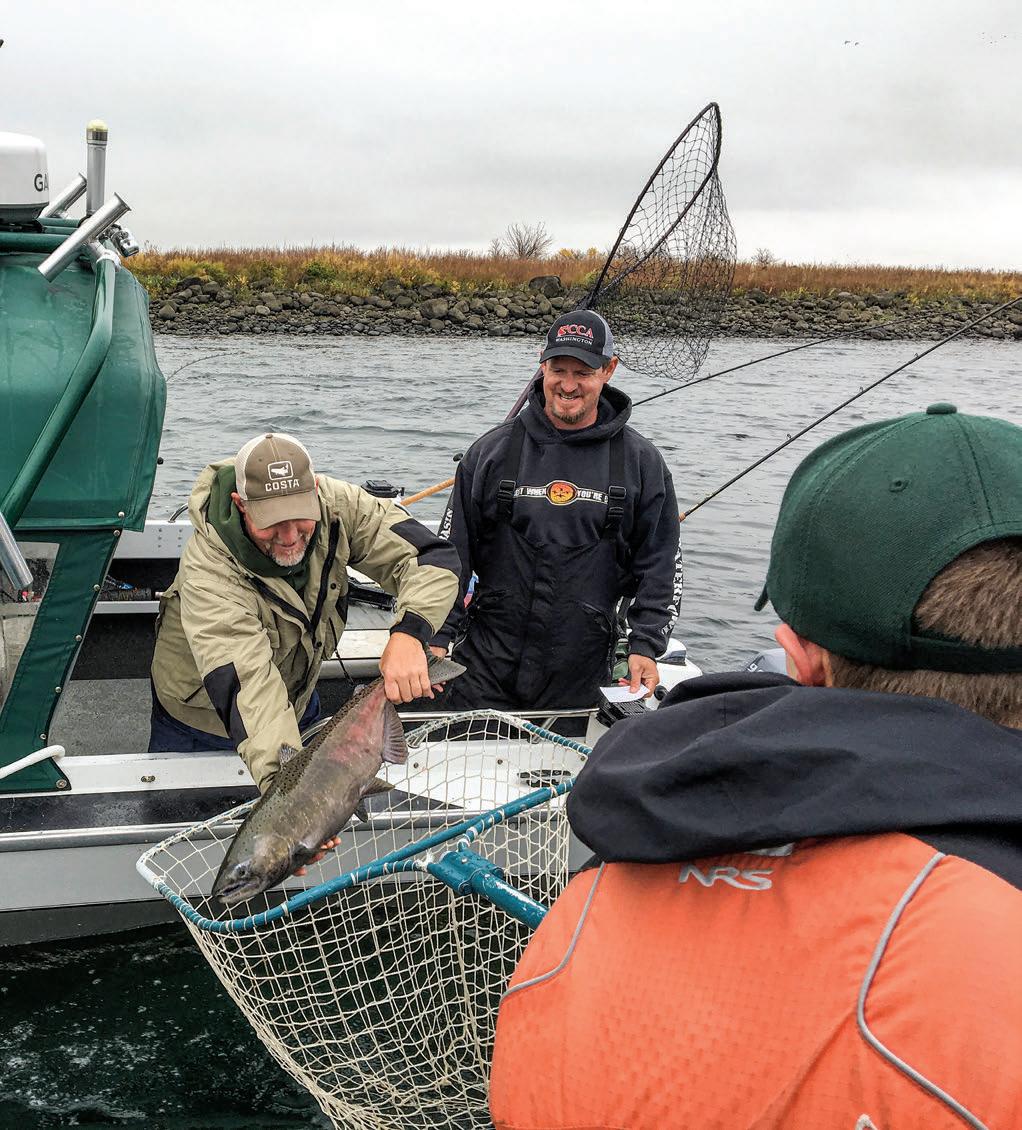
nwsportsmanmag.com | SEPTEMBER 2023 Northwest Sportsman 31
flowing stretch of the Columbia River below Priest Rapids Dam.
The derby is the brainchild of WDFW biologist Paul Hoffarth, who approached Coastal Conservation Association Tri-Cities leadership in 2012 with an idea to have sport anglers help collect wild broodstock for the Grant County Public Utility District’s Priest Rapids Hatchery, and CCA members Nate Grimm and Don McBride, who thought a derby format could increase the number of volunteers willing to help with the collection. Beginning with a pilot fishery in 2012 with a handful of volunteers collecting 69 salmon and expanding to a derby format in 2013, the derby has provided hundreds of salmon each fall and enabled the hatchery to annually release millions of salmon smolts that each have at least one wild parent.
Why is this important? Hatchery operations are required to minimize their potential adverse impact on naturally spawning fish populations in case some of the hatchery fish spawn in the wild instead of returning to the hatchery. This
can be done by ensuring the hatchery fish maintain healthy genetics. If GCPUD becomes unable to meet the genetic requirements, they might have to curtail the hatchery operations that release smolts that fuel fisheries from the Gulf of Alaska to Astoria and all the way up to the Reach. Last year, the hatchery released 7.1 million of these young salmon. Maintaining that level of production is dependent on having a way to collect wild broodstock – and the derby has proven to be a fantastic way to do it and is a model for cooperation between CCA, WDFW and GCPUD.
ANGLERS ENTER THE derby online at the CCA Tri-Cities website (ccawashington.org/ tri-cities). The derby is limited to 80 boats at the request of WDFW, to ensure adequate fish-handling capabilities to minimize mortality on the collected fish. There is not a limit on the maximum number of anglers per boat (minimum of two anglers, including the captain), but considering each person can use two poles, there’s
not an advantage to load up a large crew. The nonprofit derby costs $25 per angler and the proceeds are used for prizes and expenses. Prizes? Oh, yeah – the top ten boats receive gift cards and merchandise prizes, and each angler gets a chance at random prizes, with extra chances for each fish that is turned in. The total prizes typically exceed $10,000 in value.
How does a live-capture derby work? The first part is just like any derby – you need to get bit! Anglers launch at Vernita or White Bluffs and typically troll Super Baits, spinners or Kwikfish to hook and land a wild adult Chinook. Then things get interesting: The netted fish is brought aboard and released into a livewell. The derby provides aerator pumps that can be used to turn a large cooler into an effective livewell, or boats equipped with a sufficiently large livewell can use that. A “fish ticket” is filled out, and the fish is taken to either a shuttle boat or to a hatchery truck located at Vernita Bridge, White Bluffs or the Punch Bowl midway between.
It sounds complicated, but the reality is that mortality rates for the derby have been incredibly low – consistently less than 2 percent from river to hatchery. Total collection during the derby has ranged from 306 to 1,597 fish. The derby-winning boat each year has averaged over 50 fish –that’s some fun fishing right there – earning its captain the title “King of the Reach.”
Dry camping is available at Vernita (no campfires allowed). Four-wheel drive is necessary for launching at Vernita. Rapid fluctuations in river flow make it necessary to put the boat on the trailer each night; local anglers have all learned that boats tied up on the shoreline can quickly end up high and dry.
While I am very proud of the derby and confident in the work we are doing for the fishery, I am dismayed about some of the dialog I hear about the derby being implicated in negatively affecting fishing on the Reach, my home waters. Here is my response to the concerns I’ve heard.
I’VE BEEN FISHING the Reach for 37 years and have been doing everything I can to help the resource for over 30 years. Decades ago, I ran a catch-and-kill charity derby for many years, and eventually
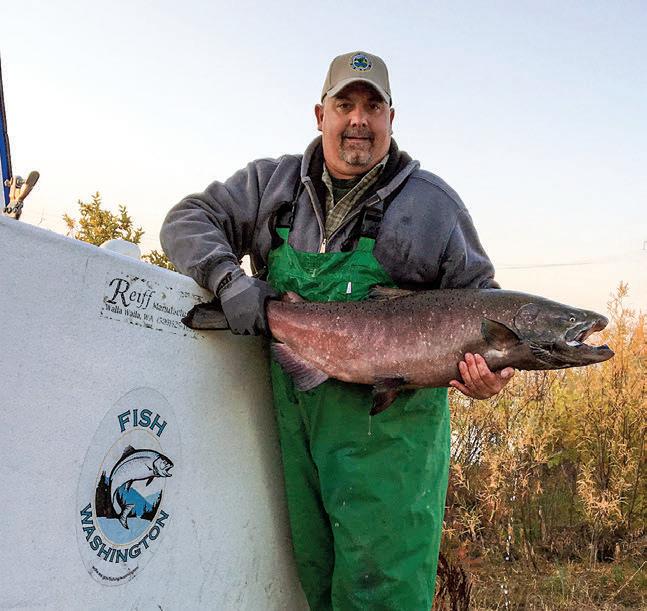
32 Northwest Sportsman SEPTEMBER 2023 | nwsportsmanmag.com
A collaboration between the Washington Department of Fish and Wildlife, Coastal Conservation Association Tri-Cities Chapter and Grant County Public Utility District and going on its 11th year next month, King of the Reach is held over three days a couple weeks after the end of salmon fishing season on these waters. (WDFW)
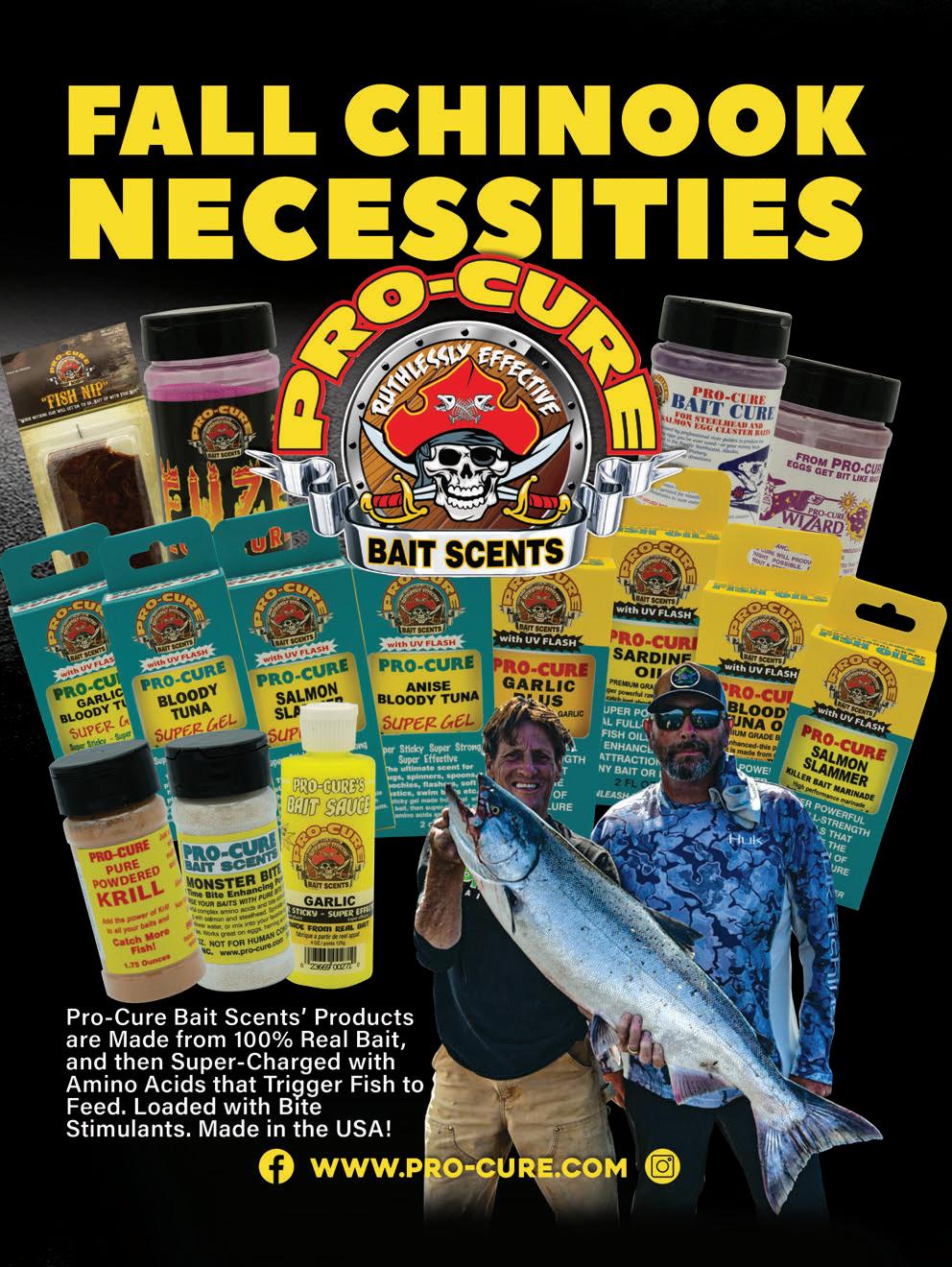
stopped doing it when I saw the decline of runs, which reached a critical point for a few years in the 1990s. What I saw then is a lot like what I’m seeing now – everyone pointing fingers and drawing cause-andeffect conclusions that have nothing to do with the real causes of the problems.
Is the fishing today as good as it was a decade ago? Nope. (It’s better than in part of the 1990s, but that’s irrelevant.) This year’s run is particularly frustrating because we are getting only a one-fish limit for harvest in the Reach on what should otherwise be an ample return of fish.

Some critics of the derby cite a change in the historical fishing season closure from October 22 to October 15 and seem to blame it on the derby. That change had nothing to do with the derby; it was a statewide WDFW initiative to standardize seasons to start/ end at the beginning, middle or end of the month whenever possible. Considering fish quality in the upper Reach, it makes more sense to me to close it midmonth than at the end of month. Whatever you think of this change in the season, it had absolutely nothing to do with the derby.
Other critics have tried to link the derby to a decline in Chinook size. The size of returning fish are shrinking across every salmon run on the West Coast. There are lots of theories about why, including: reduced forage fish due to overharvest or because of the overstocking of pink and sockeye salmon impacting the food chain; trawler impacts on juvenile salmon; and the exposure of ocean cohorts of salmon to huge exploitation percentage rates each year such that it’s nearly impossible for them to survive 5 or 6 years without being harvested. Long story short, it’s not just happening here, and it’s not being caused by the hatchery operations or by the derby.
ONE THING THAT is happening here is that the percentage of natural-origin Hanford Reach spawners as a total percentage of the run has changed with time. The improved runs on the Snake River and the Upper Columbia started this trend in the last few decades, and the success of the
Priest Rapids Hatchery over the decades (both before and after the derby started) means that a smaller percentage of the fish crossing McNary Dam are natural Reach spawners. This is a problem because they set downriver and ocean harvest targets under an assumption that as long as escapement targets for McNary and the Snake River are met, anything else is “surplus,” so the fish get overharvested in the ocean, lower river commercial and Zone 6 tribal fisheries. If you look at the total number of wild upriver brights forecast to return this year, there are plenty, but most won’t make it to the Reach. So as the last salmon anglers in line at the feeding trough, Reach anglers will locally be limited to a one-fish harvest limit. We need to fight to get the McNary target increased to account for current (and future)
changes in run composition when they are setting downriver and ocean harvest limits, and that’s challenging because it’s a multiagency agreement that includes the tribes and states.
I mentioned the success of the hatchery program. That hatchery is going to keep producing fish with or without the derby. Our initiative with King of the Reach has been to improve the genetics of the run so that if any of the hatchery fish spawn in the wild, they won’t damage the genetics of the natural spawners. The indications from WDFW and GCPUD are that this has been successful to the point that if we were to stop having the derby, they would find another way to obtain the necessary wild broodstock, whether it be contracting a commercial operation or conducting
34 Northwest Sportsman SEPTEMBER 2023 | nwsportsmanmag.com
The program has been pretty successful, but is seeing pushback from some quarters. Don McBride, who is one of the cofounders of the derby after WDFW biologist Paul Hoffarth floated the idea, vows that “if I ever discover that the King of the Reach derby is hurting the Reach, I’ll stop supporting it. But right now, I’m very proud of our efforts and look forward to continuing to seek informed input on how to make it even better.” (WDFW)
netting or trapping operations.
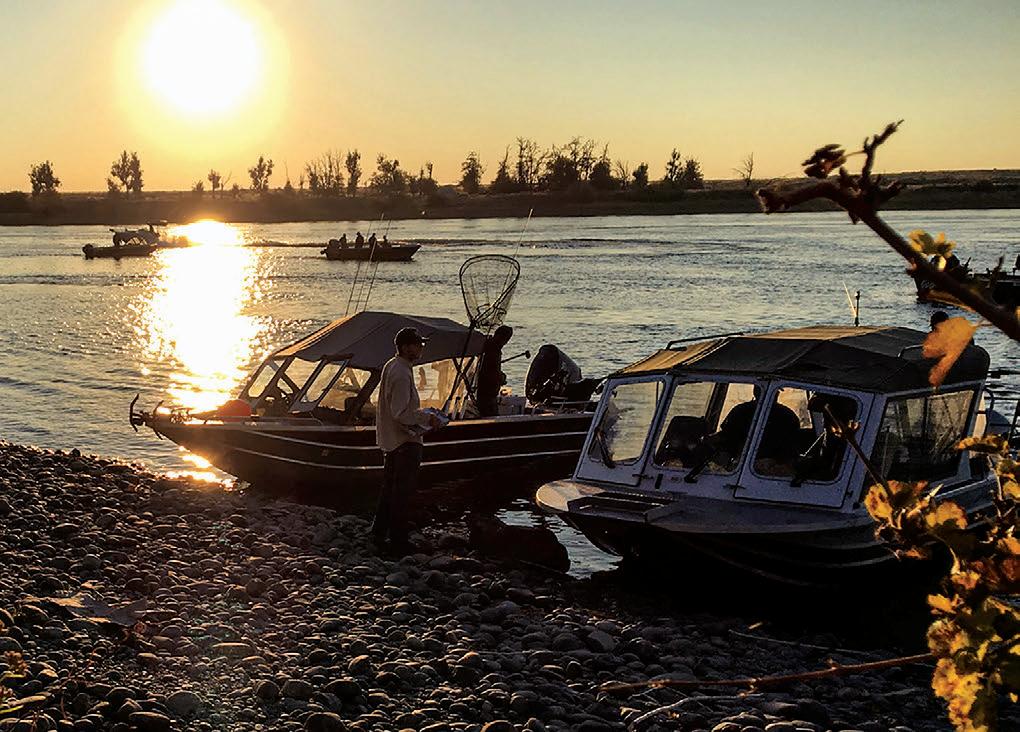
Some derby critics have argued about the hatchery getting plenty of wild fish already, but like the other rumors about the derby, that’s not true either. The volunteer returns to the Priest Rapids Hatchery trap are a low percentage and not sufficient for their needs. But rest assured, if we were to stop having King of the Reach, they would find another way to collect those fish.
Blaming the derby for harvesting 500 to 1,000 spawners doesn’t make sense compared to sport harvest of an average of 12,000 fish a year in the Reach, tens of thousands harvested downriver, or well over a hundred thousand harvested in Zone 6 last year. I just can’t see a logical connection that would cause people to assume this is “killing the Reach.”
I also don’t agree with demonizing guides as being “the problem.” They do account for a large percentage of the sport harvest, but that sport harvest is managed to a level that maintains a wild spawner escapement target, and whether they are caught in a guide boat or a private recreational fishing boat like mine, they are being caught by licensed sport anglers. We all need to pull together to support conservation of our runs and a sportfishing priority, not fight each other.
I GET VERY tired of people criticizing the volunteer efforts of CCA and other organizations that are working hard to make things better. Our chapter efforts are driven locally, not from Texas, as has been alleged from behind keyboards on
social media. For those who care about the fishery, if CCA is not working on the right issues, get involved and help steer the local efforts.
By the way, the King of the Reach derby is not run for profit at all; the proceeds are used for prizes and derby expenses. Our chapter was recognized by WDFW’s Region 3 in 2022 as a Volunteer Organization of the Year for our efforts. It’s discouraging when people throw rocks online at people who are volunteering our personal time and resources. I’ll make a personal promise that if I ever discover that the King of The Reach derby is hurting the Reach, I’ll stop supporting it. But right now, I’m very proud of our efforts and look forward to continuing to seek informed input on how to make it even better. NS
nwsportsmanmag.com | SEPTEMBER 2023 Northwest Sportsman 35

Hanni Hunderfund and Cherish McAbee smile over spot shrimp hauled out of the productive waters on the northeastern side of the Olympic Peninsula.

(KNIFE PHOTO CONTEST)
PHOTO
CONTEST MONTHLY Winner!
Opening day in the eastern San Juan Islands served up a nice Chinook for Corrin Campion. (KNIFE PHOTO CONTEST)
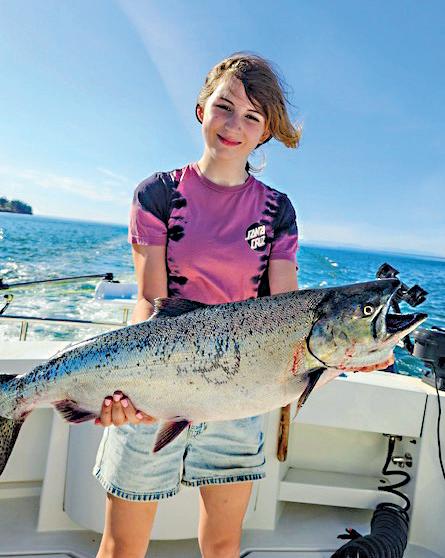

Tyler Van got into some screamingfast action at the Tulalip Bubble near Everett, landing this Chinook and another within 20 minutes of each other. He was using a Grim Reefer Jig enhanced with Hyper Vis tape.
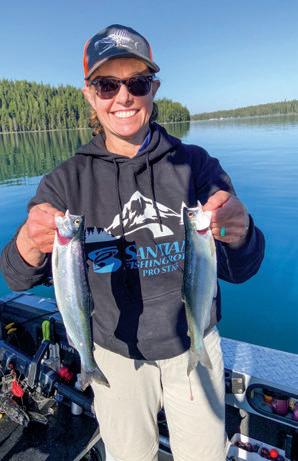
(KNIFE PHOTO CONTEST)
Chad Smith and his boys Logan and Zac did pretty well on Dungeness while crabbing in Puget Sound’s Marine Area 8-2. (KNIFE PHOTO CONTEST)
For your shot at winning great fishing and hunting knives from Coast and Kershaw in our Knife Photo Contest, send your full-resolution, original images with all the pertinent details – who’s in the pic; when and where they were; what they caught their fish on/weapon they used to bag the game; and any other details you’d like to reveal (the more, the merrier!) – to awalgamott@media-inc.com or Northwest Sportsman, 941 Powell Ave SW, Suite 120, Renton, WA 98057. By sending us photos, you affirm you have the right to distribute them for use in our print and Internet publications.

nwsportsmanmag.com | SEPTEMBER 2023 Northwest Sportsman 37
Kokanee catcher Rhonna Schnell was back at it in Central Oregon over the Fourth of July, putting this pair and more aboard. (KNIFE PHOTO CONTEST)
READER PHOTOS

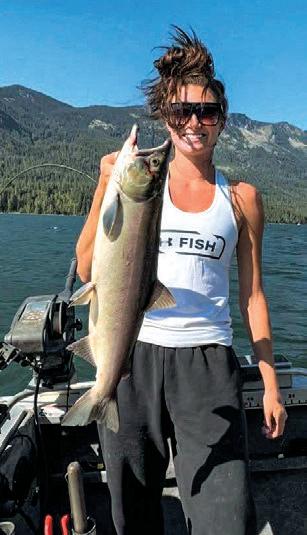


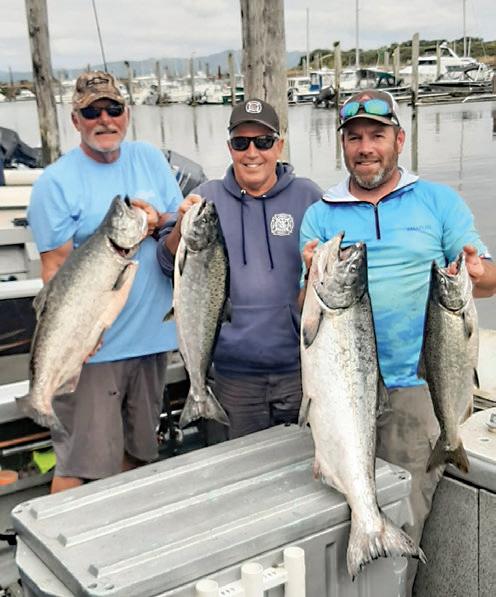
38 Northwest Sportsman SEPTEMBER 2023 | nwsportsmanmag.com
READER PHOTOS
The ocean was a tiny bit stingy with its bounty of bottomfish and salmon, but Buoy 10 was another story for Mike Bolt (right) and buddies, who limited early last month. (KNIFE PHOTO CONTEST)
There were a lot of whoops of joy on Lake Wenatchee this summer, thanks to a pretty good sockeye return. Among the lucky anglers getting out on local sharpie Don Talbot’s boat were Madison Martin, Axel Guerra, and Maria and Zyan Guerra. (KNIFE PHOTO CONTEST)
A trip to Alaska’s Kenai River yielded a pretty stout stringer of sockeye for Linda Smith. (KNIFE PHOTO CONTEST)


Spreading The Word
By Andy Walgamott
Anew website launched last month is enumerating poachers’ toll on Oregon’s fish and wildlife as it works to expand help from the public to protect the state’s natural resources. Protectoregonswildlife.com is the latest platform in the Beaver State’s bipartisan legislatively funded campaign that began in 2019 to combat the illegal take of deer, elk, salmon, shellfish and more. It’s a collaboration between the Oregon Department of Fish and Wildlife, State Police Fish & Wildlife Division and Department of Justice, along with organizations such as Oregon Hunters Association, Traditional Archers of Oregon and others.
The site reports that 2,779 clams, 666 crabs, 249 other shellfish and invertebrates, 196 salmon/steelhead, 153 deer,136 bottomfish and 134 elk were poached last year alone – and that’s just the known tally.
“Only 5 percent of poaching crimes are identified and prosecuted,” the site states.

While Oregon hunters and anglers will be familiar with how to report incidents via the Turn In Poaching, or TIP, program’s three contact points (call 800-452-7888, text *677 or email TIP@osp.oregon.gov) and the cash or preference point rewards available, the campaign spreads that word, as well as how to recognize poaching, to a wider audience and features a series of ready-made messages that can be shared on Facebook and Instagram. Every little bit helps.
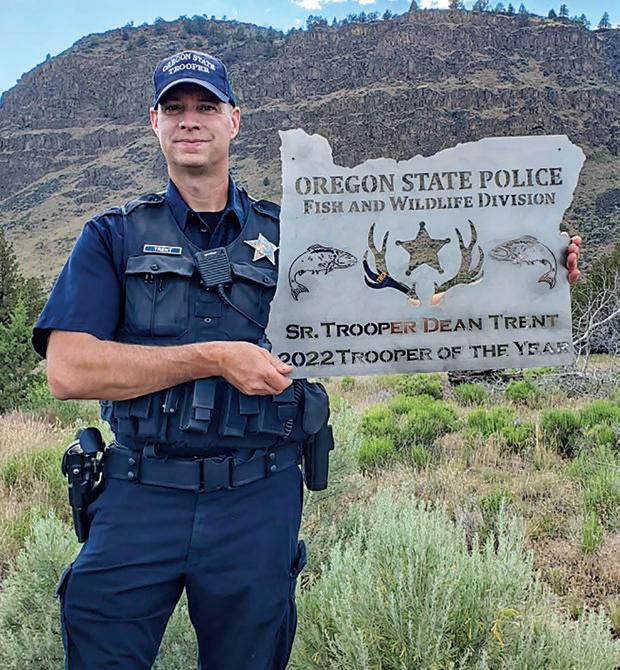
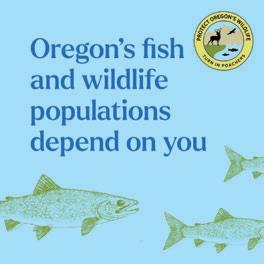
An example of the anti-poaching social media messages available for download on the new website, part of a three-pronged effort by Oregon officials to increase reporting of illegal take, enforcement and prosecution.
(PROTECT OREGON’S WILDLIFE)
KUDOS
JACKASS OF THE MONTH
Remember last summer and those two Lake Erie walleye tournament anglers who got caught after stuffing their catches with weights and other fish and found themselves in the Jackass of the Month? They have competition.
In late July, the director of a New York tourney discovered that two walleye brought in by a top-five team had been packed with smaller fish, including a 12inch bugeye that had had its tail cut off to fit inside a larger one.
Cash prizes and a $14,000-plus trip to Panama had been on the line.
At this particular event, the Bart’s Cove Walleye Duel, held out of a Lake Erie port near Buffalo, the rules reportedly have long called for fish turned in by the top teams to be cut open for inspection, which makes it curious why prime suspect, one Peter Smith, 57, would have tried the trick.
Even more curious is that apparently he didn’t have to do it. According to a widely cited Outdoor Life article, Smith’s boat’s 22-plus-pound bag was 3 pounds better than the next closest competitors, but adding the extra weight only gained them an estimated 10 to 12 ounces.
“It’s just stupid what he did, especially after last year,” said the director about Smith in the wake of the Ohio walleye tournament scandal. “I still can’t believe it.”
Oh, Jackass of the Month can.
nwsportsmanmag.com | SEPTEMBER 2023 Northwest Sportsman 41
MIXED BAG
(OSP)
Senior Trooper Dean Trent has been named the Oregon State Police Fish and Wildlife Division’s 2022 Trooper of the Year. Working out of the Burns office in the southeast corner of the state, Trent was lauded as a trooper who “exemplifies the values and mission” of his division and “sets a positive example of teamwork and leadership while conducting joint patrols or operations with other members of his team, and while assisting agency partners with injured wildlife, search and rescue operations, traffic crashes and other calls for service,” stated OSP. “These attributes, in combination with his humility and acknowledgment of others make him a truly worthy recipient of this award.” Trent is a 10-year OSP vet and has served the past seven years as a fish and wildlife trooper.
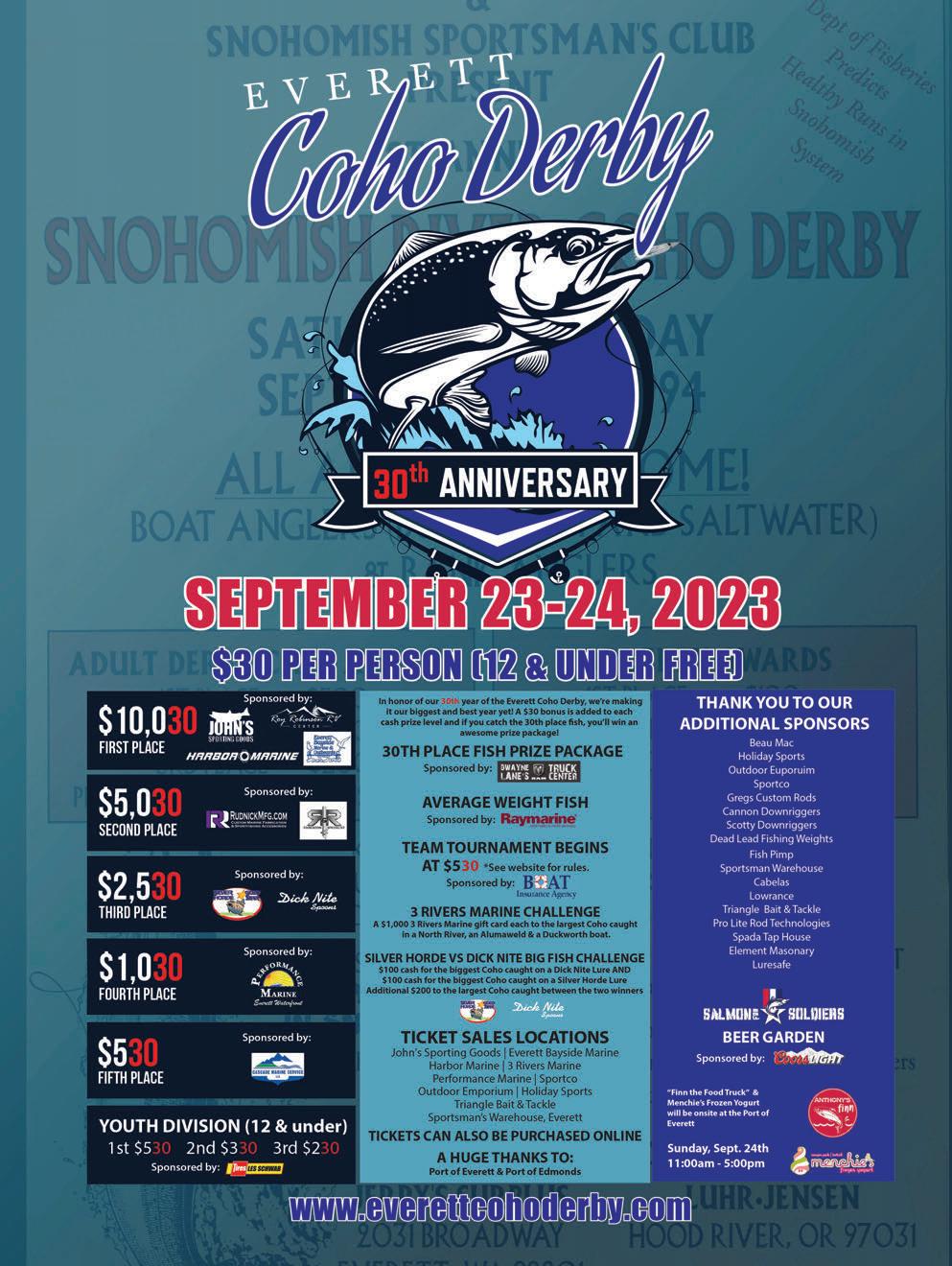
Everett Coho Derby Coming Up Sept. 23-24
What began in 1993 during a period of low returns is still going strong, and this month the Everett Coho Derby is celebrating 30 years with $30 bonus bucks tacked onto cash prizes for stoutest silvers, plus a special 30th place package in both the adult and kids divisions.
The event, which proudly bills itself as “the biggest derby in the West” and has averaged 1,950 total participants the past two Septembers, is one of the last Northwest salmon derbies with a five-figure payout and this year will feature a $10,030 first-place prize, $5,030 for second and $2,530 for third.
Winning coho have largely been coming from the salt in recent years and for the first time in several seasons, all of Marine Area 8-2 – the waters off Everett and the mouths of the Snohomish and Stillaguamish Rivers – will be in play. (The 2016 derby was canceled due to low expected returns, while the need to rebuild Snohomish stocks led to other fishery restrictions.)
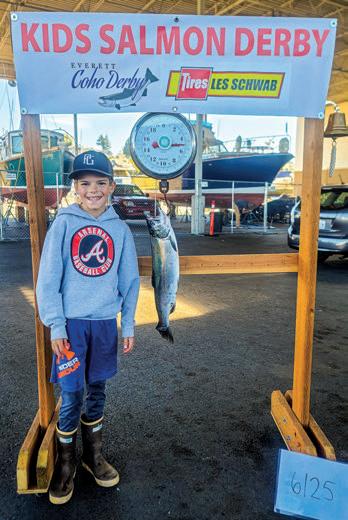
Tickets are $30 (free for youths 12 and under) and proceeds support local fish and fisheries enhancement projects such as stocking lakes, rearing salmon, carcass drops and kids activities that are put on by the Everett Steelhead and Salmon Club and Snohomish Sportsmen’s Club.
For more information, see everettcohoderby.com.
Tune up for Everett at the Edmonds Coho Derby, held September 9. Top prize at the Puget Sound Anglers’ Sno-King Chapter event is $5,000. See edmondscohoderby.com.
By Andy Walgamott
MORE ONGOING/ UPCOMING EVENTS
Now through Sept. 10: 2nd Annual Small Mouth Bass Derby, Coquille River; thepocrd.com
Now through Sept. 10: Bandon Crab Derby, Coquille estuary; tonyscrabshack.com/crab-derby
Now through end of fishing seasons: Westport Charterboat Association Lingcod, Halibut, Chinook, Coho, Albacore Derbies, Pacific off Westport; charterwestport.com/fishing.html
Now through Oct. 31: WDFW 2023 Trout Derby, select lakes across Washington; wdfw.wa.gov/fishing/ contests/trout-derby
Sept. 2-4: Gardiner, Reedsport, Winchester Bay STEP Salmon Derby, Umpqua River estuary and Pacific; 541-662-5505, grwbstep@gmail.com, Facebook.com/LowerUmpquaSTEP.org
Sept. 9: Edmonds Coho Derby, Puget Sound; edmondscohoderby.com
Sept. 9-10: Coos Basin Salmon Derby; morgancreekfishhatchery.org
Sept. 23-24: Everett Coho Derby, Puget Sound and open rivers; everettcohoderby.com
Oct. 7-8: Alsea Bay Salmon Derby; facebook.com/AlseaSportsmansAssn
Oct. 27-29: King of the Reach Derby, Mid-Columbia’s Hanford Reach; ccawashington.org/kingofthereach
Coos Derby Benefits Fisheries
The conservation ethic is strong with Northwest derbies, and a September 9-10 shindig on Coos Bay is no exception. All proceeds from the 2023 Coos Basin Salmon Derby will be plowed right back into salmon fisheries and the area’s Morgan Creek Hatchery and its Tom Rumreich Education Center, according to organizers.
The weekend derby runs a day and a half and features over $1,200 in cash prizes. Tickets are $30 and there’s a pair of auctions on the Friday evening before fishing begins. Open waters run from the Empire Boat Ramp around North Bend and upstream into tidewater. Shirley Messerle of Springfield won 2022’s edition with a 20.88-pound Chinook.
For more info, see morgancreekfishhatchery.org and Coos Basin Salmon Derby on Facebook.
nwsportsmanmag.com | SEPTEMBER 2023 Northwest Sportsman 43
Logan Smith smiles next to his 2022 Everett Coho Derby fish. For the 30th anniversary of the big event, top prize for biggest kiddo coho is $530. (KNIFE PHOTO CONTEST)

44 Northwest Sportsman SEPTEMBER 2023 | nwsportsmanmag.com
SEPTEMBER
1 Washington cougar and bow deer openers; Fall turkey opener in many Eastern Washington units; Oregon grouse and mourning dove openers; Fall turkey opener in Western Oregon and select Northeast Oregon units; Steelhead closures begin on mainstem Columbia from The Dalles Dam to Highway 395 bridge
1-4 Buoy 10 fishery open, hatchery Chinook and hatchery coho only
1-30 Oregon Central Coast ocean any-coho dates (or 25,000-fish quota met)
2 Oregon general and controlled deer and elk bow openers
2-3/-7/-10 Washington September goose season dates (varies by area)
5 Buoy 10 switches to hatchery coho only, daily limit three
9 Washington bow elk opener; CAST For Kids event on Henry Hagg Lake – info: castforkids.org; Nehalem, Tillamook and Nestucca Basins wild coho openers (select dates)
9-10 ODFW Adult Dove Hunting Workshop ($, register), La Grande – info: myodfw.com/workshops-and-events
9-13/-17 Oregon September Canada goose season dates (varies by zone)
11 Opening of fee pheasant hunting at Fern Ridge Wildlife Area
12 ODFW Intro to Hunting Workshop ($, register), The Dalles – info above
14 ODFW Intro to Hunting Workshop ($, register), Newport – info above
14-16 Oregon Central Coast summer all-depth halibut dates
14-17 Portland Fall RV & Van Show, Portland Expo Center – info: otshows.com

15 Washington grouse opener; Siletz, Yaquina, Alsea, Siuslaw, Coos and Coquille Basins wild coho openers
15-23 Oregon bandtail pigeon season dates
Calendar, continued on page 46
Youths will have chances to pursue pheasants, ducks and other birds at special hunting events or weekends held in Oregon and Washington this month. John Ludwig and Easton Fox bagged a nice passel of ringnecks in the Blue Mountains foothills last September. (KNIFE PHOTO CONTEST)

nwsportsmanmag.com | SEPTEMBER 2023 Northwest Sportsman 45
CALENDAR OUTDOOR
THE LEELOCK MAGNUM SKEG
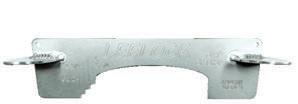
Drastically improve performance and steering of bow-mounted electric trolling motors with the LeeLock Magnum Skeg. The use of bow-mounted electric trolling motors for salmon trolling is a game changer. Not only does this skeg improve performance, it makes bow-mounted electric trolling motors much more efficient. Your batteries will run longer on a charge. The LeeLock Magnum Skeg can be a vital part of your trolling motor system!
The skeg is made of anodized 5052 aluminum. The size is 8 3/4 inches high by 10 inches wide and it’s 3/16 inch thick. The anodization keeps the aluminum from corroding in fresh- and saltwater. The LeeLock Magnum Skeg is available to fit most Minn Kota and MotorGuide (pictured) motors. It comes with clear PVC-coated stainless steel hose clamps. Call 360-380-1864 or write info@ leelock.com if you have any questions about fit.
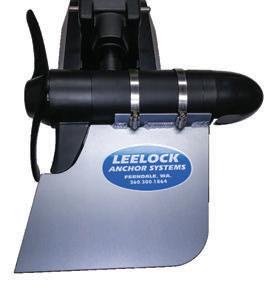

LEELOCK CRAB CRACKER
This new tool from Leelock will allow you to measure your Dungeness crabs to determine which ones are legal to keep. Then use the Crab Cracker to crack them in half, separating the two clusters from the shell and guts.
The Crab Cracker has been designed so that it sits nicely on top of a 5-gallon bucket, perfect for when you clean crabs. The bucket gives you a stable base, which makes it easier to clean – the guts and shell go into the bucket, making cleanup a snap.
Crabs cleaned this way take up half as much space as whole crabs, so you can cook twice as many in your kettle.
The Crab Cracker is a unique tool made from solid aluminum, and comes in handy for cleaning Dungeness crabs.
15-25 High Buck Hunt dates in several Washington Cascades and Olympics wilderness areas, and Lake Chelan National Recreation Area
16-17 Oregon youth upland bird hunting weekend at Denman, Klamath, Ladd Marsh, Sauvie Island and White River Wildlife Areas, and Madras and John Day locations; Washington pheasant, quail and partridge youth hunting weekend
16-24 Washington bandtail pigeon season dates
18 Opening of fee pheasant hunting at Denman and Sauvie Island Wildlife Areas
18-22 Washington senior and disabled hunter pheasant hunting week
23 52nd Annual National Hunting & Fishing Day – info: nhfday.org; Western Washington youth waterfowl hunting day; Take a Warrior Fishing event on Lake Washington – info: castforkids.org/event/twflakewashington
23-24 Coquille Valley and EE Wilson Wildlife Areas youth upland bird hunting weekend
25 Opening of fee pheasant hunting at EE Wilson Wildlife Area
28-30 Oregon Central Coast summer all-depth halibut dates
28-Oct. 1 Tacoma Fall RV & Van Show, Tacoma Dome – info above

30 Washington early muzzleloader deer opener; Eastern Washington youth waterfowl hunting day; Last scheduled day of 2023 Northern Pikeminnow Sport-Reward Program season – info: pikeminnow.org
30-Oct. 1 Oregon youth waterfowl hunting weekend
OCTOBER
1 Salmon and steelhead openers on numerous Oregon streams; Coho opener on Oregon Coast’s Siltcoos, Tahkenitch and Tenmile Lakes; Scheduled Oregon razor clam opener on Clatsop County beaches north of Tillamook Head; Western Oregon and most Oregon controlled rifle (any legal weapon) deer openers
7 Washington muzzleloader elk opener; Eastern Washington quail and partridge openers
10 Deer and elk rifle openers in many Idaho units
13 ODFW Intro to Hunting Workshop ($, register), Newport – info above
14 Oregon quail, pheasant and partridge openers; Oregon Zone 2 duck and snipe, and Southwest, High Desert and Blue Mountains, and Mid-Columbia Zones Canada goose openers; Washington general rifle deer season opener; Washington Goose Management Areas 1-5 opener
14-22 Washington early duck season dates
14-30 Oregon Zone 1 early duck season dates
15 Last day of Oregon recreational ocean crab season (bays open year-round)

21 Last day of bottomfish retention off Washington Coast; Eastern Washington pheasant opener
21-29 Northwest Oregon Permit Goose Zone early season dates
25 Washington duck season resumes
28 Eastern Washington rifle elk opener
31 Last day to fish many Washington lowland lakes listed in regulations
1
NOVEMBER
2 Oregon Zone 1 duck season resumes
4 Oregon Zone 1 snipe and scaup openers; Western Washington rifle elk opener; Washington Goose Management Areas 3, 5 reopener
7 Oregon Southwest and Mid-Columbia Zones goose season resumes
10 Last day to hunt deer with any legal weapon Western Oregon tag
11 Oregon West Cascade and Rocky Mountain elk second season openers
11-12 Extended Western Oregon youth deer season
11-19 Northeast Washington late rifle whitetail season dates
15 Last day to hunt black bears in Washington; Start of Oregon Zone 1 second mourning dove season
16-19 Western Washington late rifle blacktail season dates in select units
18
Late bow deer opener in select Southwest Oregon units
18-21 Oregon Coast bull elk first season dates
22 Washington late bow and muzzleloader deer and elk openers in many units
24 Washington “Black Friday” trout stocking, select lake openers
24-25 Oregon Free Fishing Weekend
25
Late bow deer opener in select Northwest Oregon units; Oregon Northwest Permit Zone goose season resumes
25-Dec. 1 Oregon Coast bull elk second season dates
46 Northwest Sportsman SEPTEMBER 2023 | nwsportsmanmag.com
Mussel harvesting opens on Washington Coast beaches outside of Olympic National Park; Various trapping seasons open in Washington
360-380-1864 www.leelock.com
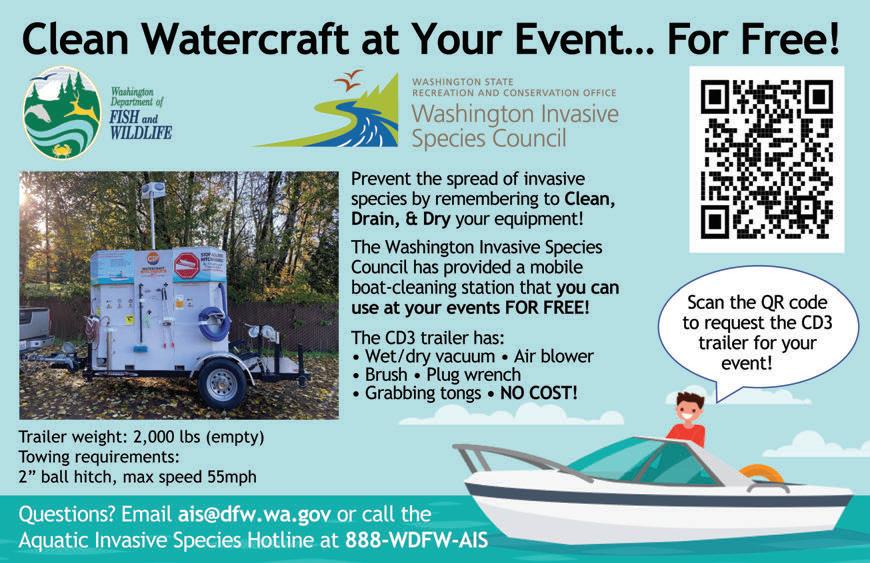
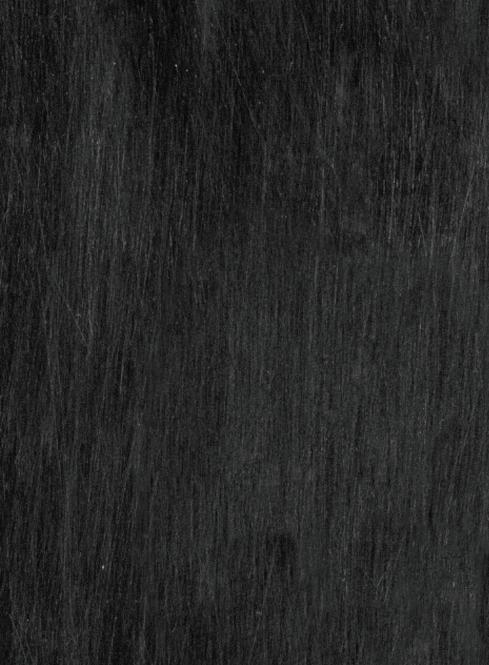
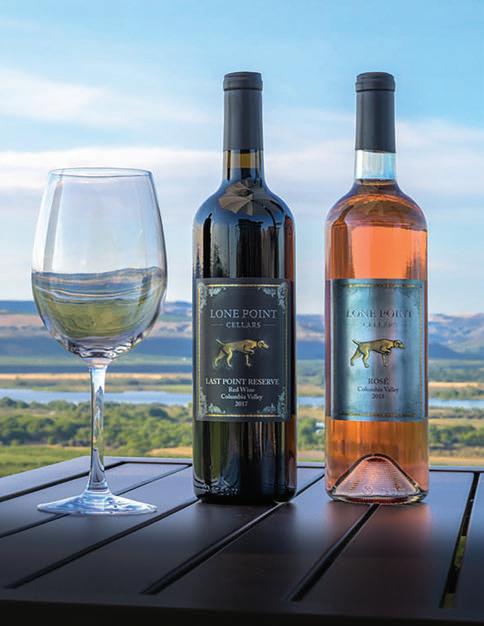










nwsportsmanmag.com | SEPTEMBER 2023 Northwest Sportsman 47
September’s For Salmon Fishing

48 Northwest Sportsman SEPTEMBER 2023 | nwsportsmanmag.com
NW PURSUITS
 By Jason Brooks
By Jason Brooks
September is a month full of excitement for Northwest sportsmen. Not only is it the beginning of hunting seasons, but it is also the height of salmon fishing. For those anglers who have been trying to decipher all of Washington’s emergency closures and reopenings and wonder if they should drag the boat out or keep it put away, fall is when the rivers start to open and Chinook, pinks and coho arrive, providing a chance to spread out across the Westside. Indeed, it is time to put the saltwater gear away and break out the float and jigging rods, strap on the wader boots and hit a stream.
This past summer on Puget Sound we saw good returns of salmon, but “encounters” with juvenile and unclipped fish put a damper on several fisheries. But in the rivers, all returning salmon are adults or jacks, and this means no juvenile impacts! It is not all good news, though, as some rivers will be closely watched. And the popular-for-pinks Skykomish, which saw only a minimal summer fishing season due to a low return of Endangered Species Act-listed wild Chinook, isn’t scheduled to open at all. But at least there’s more to salmon fishing in Western Washington than the Sky and large marine areas, giving us plenty of angling options.
LOOKING WEST TO the Forks area, there are several salmon rivers to choose from, with some of the best on tribal reservations. While a native guide is required to fish on some sections, the Queets and Quinault come to mind, but the Salmon and a few others can be great options if we get rain and you can hire a guide, who are often booked months in advance.
For anglers wanting to fish public rivers, be sure to check the Olympic National Park regulations (nps.gov/olym/planyourvisit/ fishing.htm) for the rivers that flow out of the park, such as the upper ends of the Sol Duc, Bogachiel, Hoh and Queets. While the stretches that are inside the park are mostly known for steelhead fishing, some see decent coho returns.

nwsportsmanmag.com | SEPTEMBER 2023 Northwest Sportsman 49 COLUMN
As summer fades into early fall, salmon fishing opportunities abound on Western Washington streams stretching from the Nooksack and Skagit to the Humptulips and Chehalis, and beyond. (JASON BROOKS)
Outside of the national park and reservations, the salmon fishing can be exceptionally good on certain waters. The Quillayute system, made up of the Sol Duc, Bogachiel and Calawah, among others, usually offers good fall salmon-catching opportunities. (Note that at press time the entire Quillayute had been closed in July due to a low summer Chinook return.) These rivers are a long way from most anglers’ homes, and they make for a good vacation. There are plenty of places to stay in Forks and several guides who offer trips, which is a good idea so that you can maximize your time on the water. Camping is another option, thanks to a lot of national forest and national park lands in the area, and early fall is one of the best times of year to explore this part of the state. Once fall
rains begin, the rivers will fill full of fish, but also it can be a bit unpleasant if you do not like to camp in a rain forest.
TO THE SOUTH are the famed Grays Harbor fisheries, including the bay itself. The Humptulips River receives a lot of attention in early fall, and for good reason, as it gets a lot of salmon back. Keep an eye on the regulations and the tribal net schedule. The lower Hump gets most of the action first, and it is tide dependent. With each high tide, a flood of fish will enter the river.
Last year, early fall was extremely dry and restrictions were put into place to protect the fish that were stuck in the lower holes. When river levels drop so low that fish cannot get up the river, it is best to try another place. But when a rainstorm

occurs, drop everything and head to the Humptulips, as it will fill with fish quickly. With plenty of bank access and good floats for drift boats and rafts, this river is popular. Floating eggs is the top producer in early fall, as Chinook will be the first fish to arrive and the water will be low and clear. If rain does occur, switch up to pulling wrapped plugs or back-bouncing eggs.
The Chehalis system, which includes tribs such as the Wynoochee, Satsop and Skookumchuck, has staggered salmon openers starting this month, so be sure to give these rivers a try. For shorebound coho anglers, the tiny Skookumchuck is a fun stream to fish and has a lot of access. There are several Washington Department of Fish and Wildlife access locations on all these rivers, but most
50 Northwest Sportsman SEPTEMBER 2023 | nwsportsmanmag.com COLUMN
Anglers west of the Cascades need to be aware of the increasing restrictions being placed on river fisheries to protect Chinook, which in large part are protected under the Endangered Species Act. It means keeping a close eye on the emergency rules change page. (JASON BROOKS)

have no Chinook retention, so be sure to take some spinners and twitching jigs for when the coho show up.

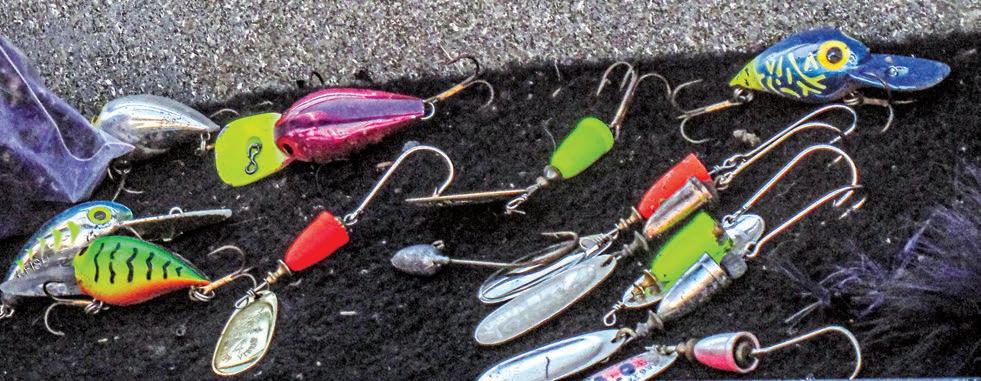
Further afield from the metro region are several other salmon rivers, such as the Willapa, Naselle and Klickitat. These are more for those who like to explore and spend a few days learning about new waters and regions.
The Klickitat is popular and has great access, including some good holes and runs for bank anglers or those who know how to row a drift boat. It can be a bit technical, and the water is off-color due to it being glacierfed. Blue Fox spinners are popular here, as they will entice Chinook, coho and even late-arriving summer steelhead. If you are drifting the river, pulling wrapped plugs is ideal in the low-visibility water. Try Mag Lip 3.5s and 4.0s in mad clown, double trouble or other bright colors.

PUGET SOUND RIVERS are ground central for most Washington fall salmon anglers, and this year it will be a bit crazy on the banks of your favorite stream, since pink salmon will be flooding in and there are good coho return projections. Northern rivers like the Skagit and Nooksack provide good opportunities for fishermen, but with ESA-listed Chinook in some of the rivers, be sure to check the emergency rule changes page (wdfw.wa.gov/fishing/ regulations/emergency-rules).
For example, the lower Snohomish opens September 1 for pinks and coho, but
to protect Chinook, state salmon managers prohibited using eggs as bait. It wasn’t clear why they didn’t outlaw all bait, as Chinook will gobble up tuna balls, sand shrimp and cured coonstripe shrimp just as readily as coho will. When anglers see these kinds of rules put into place, maybe make the commonsense decision to just leave the bait at home and help protect Chinook and keep the rest of the salmon fishery open.
The Duwamish-Green is one of the most underrated rivers in Western Washington. Sure, it gets attention, but for the numbers of pinks (821,681) and coho (110,756) projected to return this year, some anglers will still literally drive past thousands upon thousands of salmon to fish far-away watersheds. Instead of spending those extra hours on the road, drive up the Green River Valley and look for a spot to fish close to home now, and then come back later this fall when the chums show up. Chums are one of my favorite fish to catch, as they are so aggressive and put up a good fight. Most anglers release this species, as they are pretty close to spawning.
South Sound’s famed Puyallup is one of the most popular rivers in the region. This is because of the miles and miles of bank access. Add in 397,255 pink salmon due back this year, along with 37,023 coho and 20,071 Chinook, and let the craziness begin. Unfortunately, this fishery has turned from a family-friendly crowd into an adult party atmosphere, and I use that term lightly. The past few pink runs have
seen recreational drug use, foul language, and then you return to your truck to find a broken window and items stolen. As much as I like to fish 15 minutes from my home, I rarely head to the Puyallup now, instead driving those extra hours and miles to find like-minded anglers and fewer worries. With that, though, if enough anglers who prefer to fish ethically and honestly all stand on the same gravel bar, the Puyallup can be a fun time. It is also closed three days a week now to prevent conflicts with tribal netters, allowing both user groups to harvest fish, many of which are raised in the Muckleshoot Tribe’s hatchery.
The Nisqually does not get as much attention as it used to and that is due to the lack of public fishing access. There is a state access site, but it can become very crowded. Joint Base Lewis-McChord does allow some river access if you obtain a range pass and follow the rules to enter. There is also an estuary fishery, but it has a short window, as it is highly tidally influenced. Be sure to do some research; when you do find that spot on the Nisqually, it can be good fishing.
Minter Creek is another place that is popular with anglers. This tiny stream, which is about a mile long when the tide is out and even shorter during the flood, gets good returns of hatchery Chinook, coho and chums. Be sure to bring waders for when the tide starts to come in, as it is much easier to hose off a set of muddy waders than it is to wash it out of tennis shoes.
52 Northwest Sportsman SEPTEMBER 2023 | nwsportsmanmag.com
COLUMN
Plugs and spinners are among the best lures for fall coho, but twitching jigs can also be deadly. (JASON BROOKS)





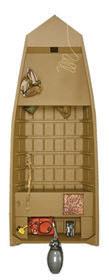

Float fishing jigs or eggs will keep anglers honest at Minter, but drift fishing is popular, and rules have been put into place to protect the fish. Anti-snagging and a night closure are in place for a reason. Also be aware of private property, especially at low tide, when anglers head to the bay for fresh fish trying to enter the stream.

THERE ARE MANY more rivers to fish and all it takes is a day or two to go out and find them. Hood Canal has several fisheries, in salt- and freshwater. Same with the North Sound, Strait of Juan de Fuca and coast. Just about every river gets salmon; some are closed, others are open, and some will even be one or the other, depending on runs and emergency rules. If we learned anything this summer, it is how to navigate the emergency rules tab at the WDFW website. Take advantage of the open rivers, even if it means giving a new fishery a try. Most of all, be courteous to other anglers, as we are all in the same boat or standing on the same bank. NS
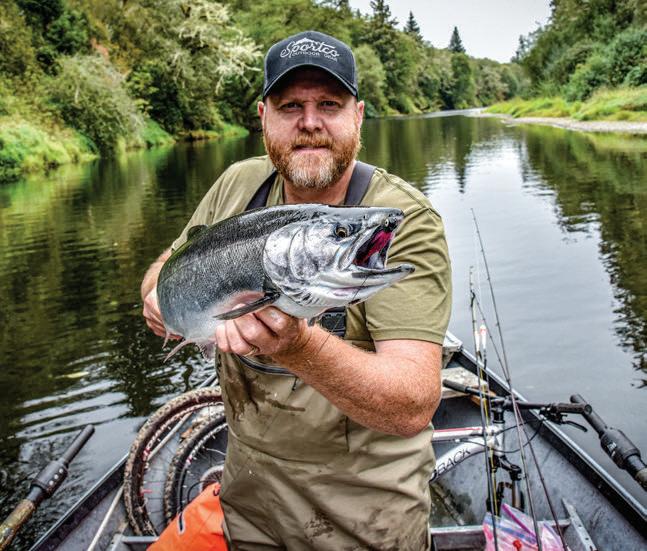
54 Northwest Sportsman SEPTEMBER 2023 | nwsportsmanmag.com
It may not be the glory years, but this fall’s forecasts don’t look half bad for anglers looking to get on their favorite river or try out new waters. Author Jason Brooks holds a nice coho from a coastal fishery.
(JASON BROOKS)
COLUMN
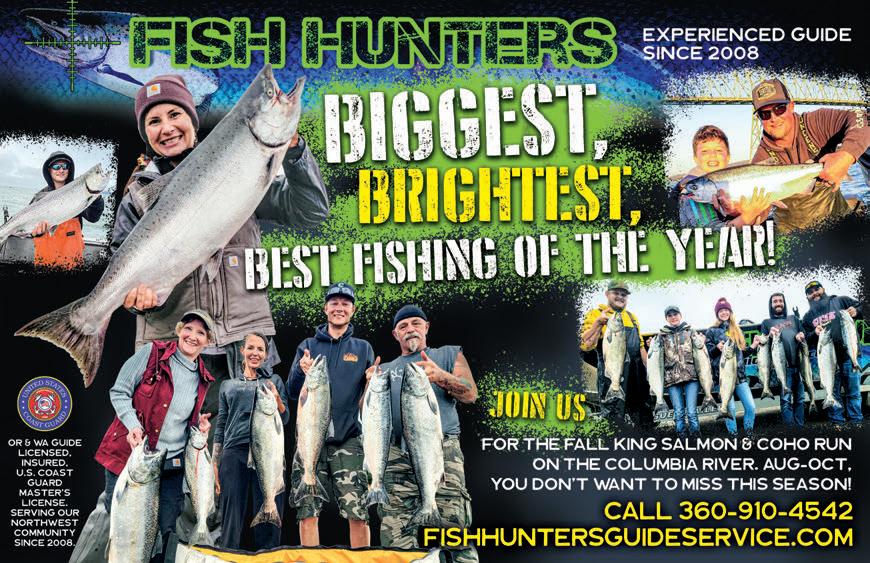

nwsportsmanmag.com | SEPTEMBER 2023 Northwest Sportsman 55

Coho Forecast Looking Good
By Mark Yuasa
When it comes to Washington salmon fishing, your best “coho-rt” in September will be a gaggle of coho filtering into the Strait of Juan de Fuca and Puget Sound. Coho – commonly known by anglers as silvers for their silvery-bright body – started to see a resurgence several years ago following low points in 2014, 2015 and 2016.

During those three years, drought and warm water conditions in rivers and the Pacific Ocean labeled as “the Blob” wreaked havoc on salmon populations, creating poor survival rates for their returning offspring in 2017, 2018 and 2019.
By 2020, 2021 and 2022, the situation had gradually improved, and the Puget Sound wild and hatchery silver forecast inched upward to 504,604, 614,948 and 666,317, respectively.
As for 2023, the respectable forecast of 760,029 silvers could surpass the five-year average and possibly mirror the decent fishing action that occurred in 2022 around Puget Sound.
Other good signs that ocean conditions have turned around for the fish include what was seen earlier
nwsportsmanmag.com | SEPTEMBER 2023 Northwest Sportsman 57 FISHING
With three-quarters of a million heading into Puget Sound tribs, here’s how to intercept your share on the salt.
Things are looking bright for Puget Sound coho anglers, thanks to a forecast of nearly three-quarters of a million shiny coho that will mostly return through these sheltered inside waters in September. Chef Taichi Kitamura, owner of Sushi Kappo in Eastlake in Seattle, shows off a nice one from the inland sea. (MARK YUASA)
in spring and summer with various other salmon returns around the state exceeding expectations. Those included a modest surge of Columbia River spring Chinook, a good number of resident coho caught in June and July around central Puget Sound (Marine Area 10), a respectable summer Chinook catch in open areas of Puget Sound, robust sockeye returns to the Upper Columbia and Baker Lake, and the millions of pink salmon jamming into Puget Sound in August.
While not large – silvers average 4 to 15 pounds, with some exceeding 20-plus pounds – they are known to draw long lines at boat ramps for anglers who enjoy catching them for their leaping abilities and erratic behavior by zipping across the water’s surface when hooked, not to mention quality on the grill.

Traditionally, a large wave of migrating silvers will show up during autumn’s first low pressure weather system, although many arrived in
COAST SALMON OPTIONS
You can also find some ideal fall coho options on the Washington Coast, and one that stands out is the Grays Harbor (Marine Area 2-2) salmon fishery east of the Buoy 13 line.
It is broken into two distinct seasons. The Humptulips North Bay – north of a line running from the south end of the eastern jetty at the Ocean Shores Marina east to the Brackenridge Bluff Tripod – is open daily through September 15 with a one-salmon daily limit, release wild Chinook and wild coho. The East Grays Harbor Fishery is open September 16-November 30 with a two-salmon daily limit, release all Chinook.
WDFW is forecasting a relatively decent Grays Harbor basin coho return of 214,271 in 2023, up from 198,719 in 2022 and 76,518 in 2021. The forecast is based on ocean abundance of 3-year-old adult fish prior to the start of any fisheries.
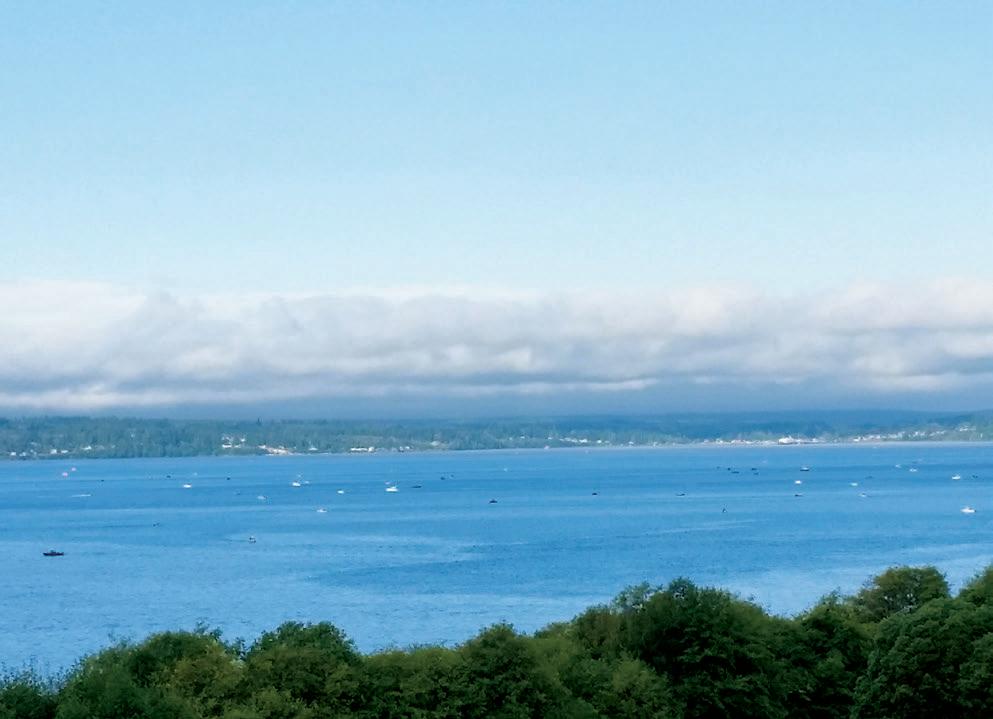
Anglers who don’t have access to a watercraft can give the Westport Boat Basin a try. It is open daily through January 31, but the peak time is from September through October, which is when coho raised in the marina’s hatchery net pens mostly return. The daily limit is six salmon, and no more than four may be adults. Release Chinook, no night fishing and an anti-snagging rule is in effect. Only single barbless hooks may be used. South of Grays Harbor is the Willapa Bay (Area 2-1) salmon fishery, open daily through January 31. The height of this fishery occurs from early to mid-September. The Chinook forecast is 30,320 (33,142 in 2022) and the coho forecast is 153,617 (110,483 in 2022).
Most action in Willapa Bay happens between Channel Markers 13 and 19 on an incoming tide. The daily limit is six salmon and up to two adult salmon may be retained (release wild Chinook).
On the outer coast, Neah Bay, La Push, Westport and Ilwaco (Areas 4, 3, 2, and 1) are scheduled to be open for salmon fishing through September 30. While many sportsmen switch gears to fall hunting, it isn’t unusual to catch a late Chinook or hatchery coho. Be sure to check the WDFW website for any emergency closures. –MY
58 Northwest Sportsman SEPTEMBER 2023 | nwsportsmanmag.com
FISHING
The coho fleet works the waters of Shoreline’s Richmond Beach during a past September. Trolling spoons, hoochies, or hoochies and herring strips are top methods. Work high in the water column early in the morning, dropping deeper as daylight brightens. (ANDY WALGAMOTT)

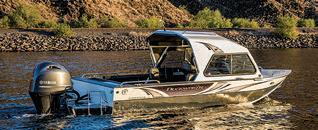





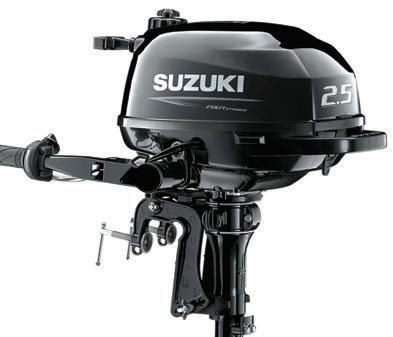
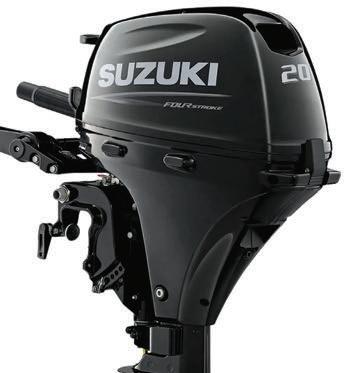


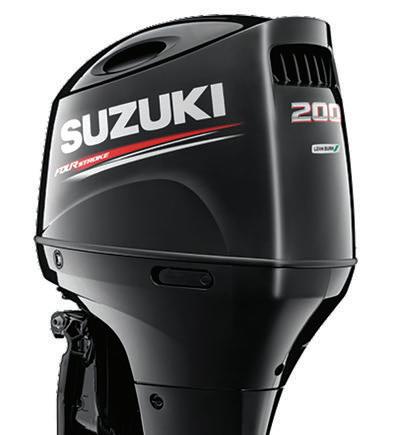
SALES & SERVICE LOCATED RIGHT ON THE WATER — 8141 WALNUT ROAD NE • OLYMPIA, WA 98516 360-491-7388 • PUGETMARINA.COM QUALITY BOAT SALES AND SERVICE EXCELLENCE FOR OVER 50 YEARS! SERVING OLYMPIA, LACEY, TUMWATER, SHELTON, TACOMA, SEATTLE AND BEYOND ALL MODELS ON SALE NOW! SUZUKI REPOWER SALE MANY ENGINES IN STOCK 2.5 TO 200 HP CALL FOR PRICING ON YOUR BOAT. Winner of Suzuki’s Top Service Award 7 Years In A Row!
late summer right on the heels of the pink salmon run. It isn’t uncommon to see an early silver surge, especially during odd-numbered years when pinks return. The peak of the silver return happens by the second and third weeks of September.
THE FRONT END of the silver steam train has already made its way into the Strait of Juan de Fuca between Sekiu (Area 5) and Port Angeles (Area 6). Both areas are open daily through September 30 for hatchery-marked coho, with a two-fish daily limit, and then all coho are allowed to be retained October 1-15. There is also a Dungeness Bay hatchery-marked coho fishery from October 1-31. The 2023 forecast for the Dungeness River is 14,654, up from 9,133 in 2022.
In the Strait, you’ll see most anglers zipping out to the shipping lanes –about 2 to 8 miles away from the docks and marinas – where the hottest coho action often occurs. As you leave the docks, keep a sharp eye out for coho jumping and skimming along the surface as they actively feed on baitfish.
Another good coho location is the San Juan Islands (Area 7) and fishing is open September 1-30 with a twosalmon daily limit and up to one coho may be retained (release all Chinook and chum). Often the best spots are the outer island areas off the west side of San Juan Island itself.
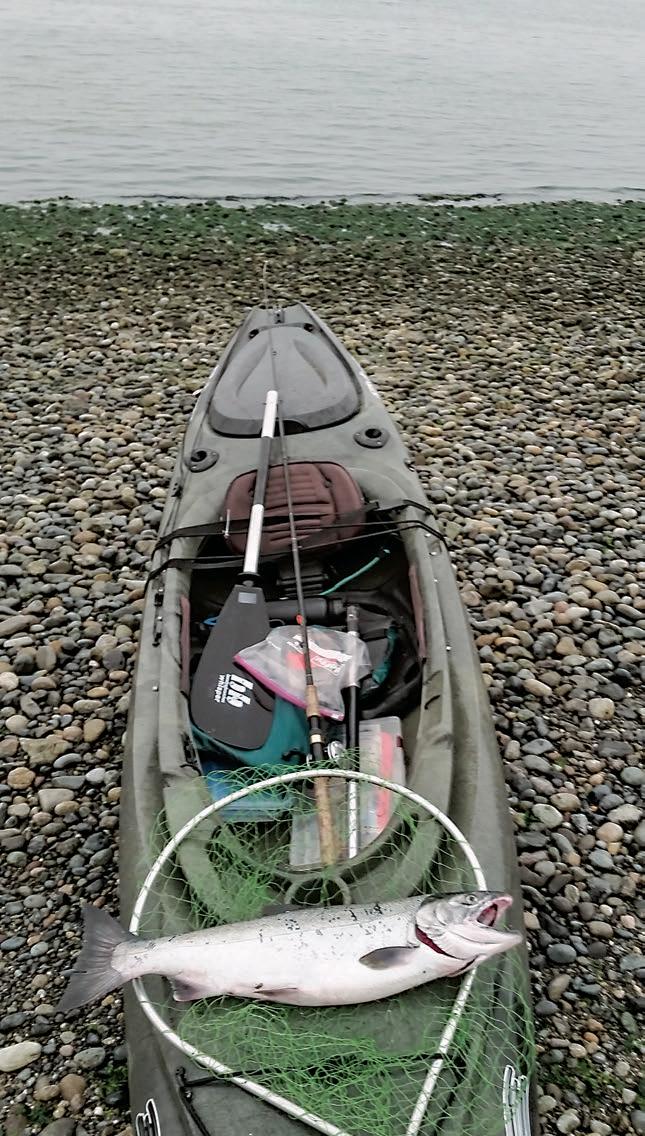
The northeastern region of Whidbey Island (Area 8-1) is open through September 30 for coho with a two-salmon daily limit (release all Chinook and chum). Look for coho off Camano Island at Rocky Point, East Point and outside of Holmes Harbor.
In 2022, only a bottom portion of Area 8-2 along the southeastern side of Whidbey was open, but this season the entire area is fair game through September 24, with a twosalmon daily limit and only one coho may be retained (release all Chinook and chum).
In early September, anglers should be able to find late pinks and
60 Northwest Sportsman SEPTEMBER 2023 | nwsportsmanmag.com
FISHING
Casting off the beach with chrome and other Buzz Bombs, as well as Clouser Minnows, spinners and other lures is another great method for coho, and don’t overlook launching a kayak to target these salmon in nearshore waters as they close in on their natal river system. (ANDY WALGAMOTT)
LIGHTWEIGHT.
The lightest 200-hp four stroke on the market
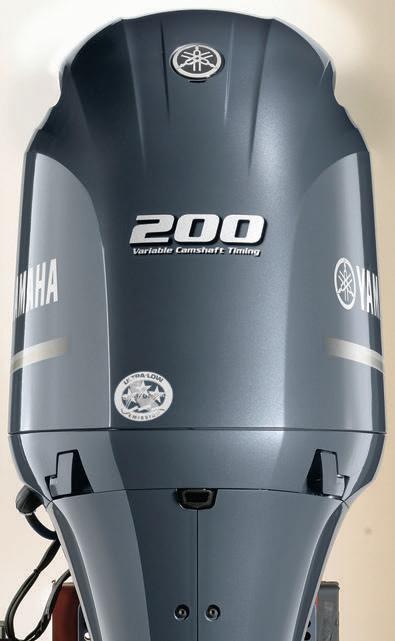
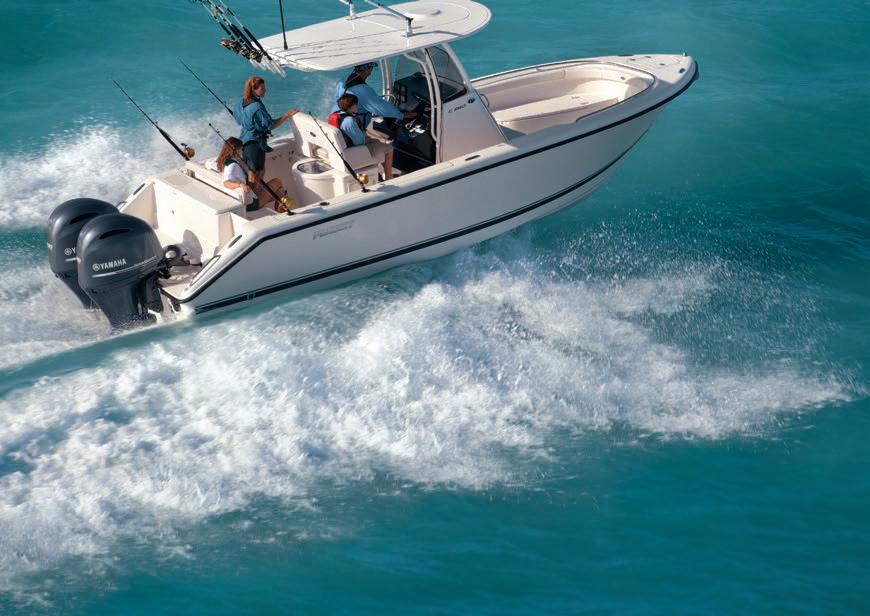

POWERFUL.
2.8L displacement and Variable Camshaft Timing give it the best power-to-weight ratio of any 200-hp four stroke
COMPACT.
Nearly 120 pounds lighter than our four-stroke V6 F200
Nearly 120 pounds lighter than our four-stroke V6 F200
THE F200 IN-LINE FOUR. FORWARD THINKIN
Show the water who’s boss with the F200 In-Line Four. Incredibly light, responsive and fuel efficient, it serves up plenty of muscle to handily propel a variety of boats. On top of that, its 50-amp alternator offers the power to add a range of electronics, and its 26-inch mounting centers and compatibility with either mechanical or digital controls give you the flexibility to easily upgrade your outboard or rigging. Experience legendary Yamaha reliability and the freedom of forward thinking, with the F200 In-Line Four.
Show the water who’s boss with the F200 In-Line Four. Incredibly light, responsive and fuel efficient, it serves up plenty of muscle to handily propel a variety of boats. On top of that, its 50-amp alternator offers the power to add a range of electronics, and its 26-inch mounting centers and compatibility with either mechanical or digital controls give you the flexibility to easily upgrade your outboard or rigging. Experience legendary Yamaha reliability and the freedom of forward thinking, with the F200 In-Line Four.
CHINOOK Chinook Marine Repair, Inc.

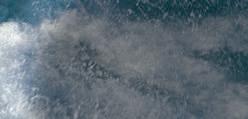
457-9459
www.chinookmarinerepair.com
EDMONDS Jacobsen’s Marine
789-7474
www.jacobsensmarine.com
EVERETT Everett Bayside Marine (425) 252-3088
www.baysidemarine.com
MOUNT VERNON
Master Marine Boat Center, Inc. (360) 336-2176

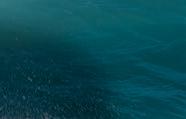



www.mastermarine.com
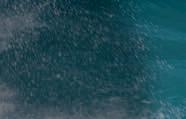
MOUNT VERNON
Tom-n-Jerry’s Boat Center, Inc. (360) 466-9955
www.tomnjerrys.net
OLYMPIA
US Marine Sales & Service (800) 455-0818
www.usmarinesales.com
SHELTON Verle’s Sports Center (877) 426-0933
www.verles.com

nwsportsmanmag.com | SEPTEMBER 2023 Northwest Sportsman 61
REMEMBER to always observe all applicable boating laws. Never drink and drive. Dress properly with a USCG-approved personal intended to be an endorsement. © 2013 Yamaha Motor Corporation, U.S.A. All rights reserved. Follow Yamaha on Facebook® and Twitter™ YamahaOutboards.com/F200InLine
THE F200 IN-LINE FOUR. FORWARD THINKING. REMEMBER to always observe all applicable boating laws. Never drink and drive. Dress properly with a USCG-approved personal intended to be an endorsement. © 2013 Yamaha Motor Corporation, U.S.A. All rights reserved. Follow Yamaha on Facebook® and Twitter™ YamahaOutboards.com/F200InLine
BAY Y Marina (541) 888-5501
Maxxum Marine (541)
COOS
www.ymarinaboats.com EUGENE
686-3572 www.maxxummarine.com
(800)
(206)
WASHINGTON OREGON
migrating coho by focusing time in Area 8-2’s Shipwreck/Humpy Hollow area, which is the shoreline that runs from the Mukilteo Ferry Landing south to Browns Bay in Area 9.
Other coho hangouts in Area 8-2 include from Sandy Point to Langley, Camano Head, the north and south sides of Hat Island and off the Clinton Ferry Landing. Columbia Beach south of Clinton and the Possession Bait Box provide ideal shoreline fishing.
In northern Puget Sound (Area 9), fishing is open for hatchery-marked
coho only through September 17, but unlike 2022, it then switches to all coho – wild and hatchery – September 1830, just in time for the popular Everett Coho Derby.
Central Puget Sound (Area 10) is a favorite area and open for all coho now through October 31 with a twosalmon daily limit (release Chinook and chum September 1-30 and release Chinook October 1-31).

Southcentral Puget Sound (Area 11) in the Tacoma-Vashon Island region will reopen September 1-30 to
fishing for pinks and coho only. The daily limit is two salmon, with no minimum size. Anglers must release all Chinook and chum. It remains open October 1-31 for a fishery targeting coho and chum only.
There are a bounty of shoreline and boat fishing locations in Puget Sound across Areas 9, 10 and 11 to target silvers. Those on boats should concentrate their efforts around Port Townsend at Midchannel Bank south to Marrowstone Island; along the west side of Whidbey Island near Fort Casey and Bush and Lagoon Points; Useless Bay off Double Bluff; Scatchet Head; both sides of Possession Bar; Point No Point; Pilot Point; Edmonds Marina south to Richmond Beach; Kingston to Jefferson Head; Meadow Point to West Point near Shilshole Bay; Blake Island at Allen Bank and Southworth; and Alki Point in West Seattle south to the northern tip of Vashon Island.
Shore-bound anglers can catch coho along Whidbey’s west side at Fort Casey, and Bush and Lagoon Points; Lincoln Park in West Seattle; Point No Point; public access points along the east side of the Kitsap Peninsula; Possession Point; Marrowstone Island; Point Wilson near Port Townsend; and various piers, docks, and shorelines from Mukilteo to Edmonds and Seattle south to Tacoma.
Two highly popular derbies are synched up with the arrival of migrating coho in Puget Sound. First up is the Edmonds Coho Derby on September 9 and based out of the Edmonds Marina. For details, go to edmondscohoderby.com.
That will be followed by the 30th anniversary of the Everett Coho Derby on September 23-24 at the Everett Marina. This derby – dubbed the largest along the West Coast –draws thousands of anglers looking for a chance to win the $10,000 firstplace prize for the largest coho. For details, go to everettcohoderby.com.
In Southern Puget Sound (Area 13), which is open for hatcherymarked coho, try around Anderson Island, Hale Pass/Fox Island, Gibson
62 Northwest Sportsman SEPTEMBER 2023 | nwsportsmanmag.com
FISHING
Coho fishing can be good into October on the saltwater before fall storms start refilling rivers with water, sucking the fish inland. (MARK YUASA)

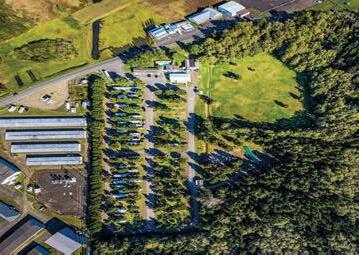



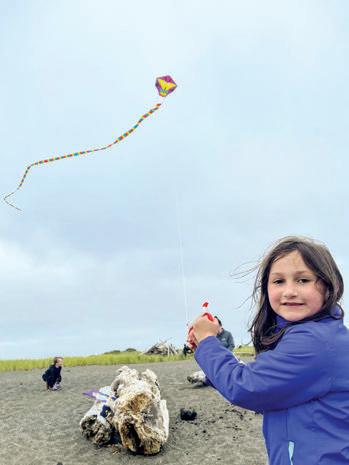
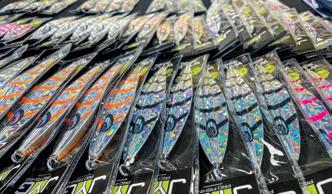

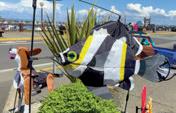
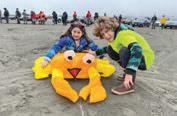


WELCOME TO AMERICAN SUNSET RV & TENT RESORT MENTION THIS AD TO RECEIVE 10% OFF 360-268-0207 • americansunsetrvresort@gmail.com Make your reservations online. Go to www.americansunsetrv.com • 120 Full Hookup RV Sites • 60 Tent Sites • Cabin Rentals • Fish Cleaning Station • Heated Pool • Large Clubhouse • Bathrooms w/showers • Laundry • Cable/Wifi • Playground • Located in the heart of Westport, a mile from the beach and marina • Open 365 days a year westporthookersandblow.com westporthookersandblow@gmail.com We specialize in slow pitch jigging and of course kites. The only tackle and kite shop in Westport DESTINATION Grays HArbor, WA Gateway to the pacific ocean & the Olympic Peninsula
Just weeks before the start of the fall season, Washington Coast razor clam diggers received some bad news in the form of rising domoic acid levels at several beaches. (KNIFE PHOTO CONTEST)
WASHINGTON RAZOR CLAM UPDATE
The Washington Coast recreational razor clam season that usually opens by late September or early October largely depends on marine toxin levels, and those saw a big increase in early August on two beaches.

Test results on razor clams indicate domoic acid levels appeared to be trending upward or, on most beaches, have exceeded the health guideline of 20 parts per million set by Washington Department of Health officials for safe consumption. The four beaches managed by the Washington Department of Fish and Wildlife for recreational razor clam digging are Long Beach, Mocrocks, Copalis and Twin Harbors.
Domoic acid, a natural toxin produced by certain types of marine algae, can be harmful or fatal if consumed in sufficient quantities. More information about domoic acid, as well as current levels at ocean beaches, can be found at wdfw.wa.gov/fishing/ basics/domoic-acid.
WDFW will continue to work closely with partners at DOH to closely monitor toxin levels in razor clams and will get harvest reopened as soon as clams are safe to eat.
State shellfish biologists regularly dig test samples of razor clams to monitor the situation. DOH requires that two samples taken 10 days apart fall under the 20 ppm health guideline level before a beach can reopen for razor clam digging. WDFW will announce future digging opportunities when marine toxin tests show it is safe to do so.
For updates on the 2023-24 season, visit wdfw.wa.gov/fishing/shellfishingregulations/razor-clams and DOH’s website (doh.wa.gov/community-and-environment/ shellfish/recreational-shellfish). Meanwhile, WDFW’s updated 2023-24 Razor Clam Management Plan will be available at wdfw.wa.gov/fishing/shellfishing-regulations/ razor-clams#management. To be notified of inseason rule changes as they are announced, sign up for email notifications at wdfw.wa.gov/about/lists. –MY
Point, Fox Point south to the Concrete Pier, Johnson Point and around the Squaxin Island net pens, where the 2023 forecast is for 45,417 coho, down somewhat from 51,433 in 2022.
Another location that doesn’t tend to get much love and is often overlooked by silver chasers is Hood Canal (Area 12), where the predicted return in 2023 is 112,710, up a good notch from 81,614 in 2022. Fishing is open daily through November 30 with a liberal four-fish daily limit. Bag limits do vary north and south of Ayock Point, so check the Washington Department of Fish and Wildlife regulation pamphlet for details.
Hood Canal was good for a mix of coho and pinks during mid-August and should remain that way as the coho return builds heading into September.
NO MATTER WHAT marine area you choose to try your luck for silvers in over the coming weeks, keep in mind that the fish tend to move from place to place, can be lockjawed at times and will migrate quickly into rivers or streams as fall rain systems arrive.
There are numerous ways to catch silvers and while most anglers prefer to troll to cover a lot of ground, nothing says that mooching or jigging can’t get the job done.
When you troll, be sure to ramp up your speed, as coho like a fast-moving presentation. Increasing engine speed to between 2.8 to 3.5 or even 4.0 miles per hour will equate to more hookups. Trolling with downriggers and a 12-pound ball will get your bait or lure to the right depth, but early mornings you can troll with surface flies or spoon.
One key to locating silvers is keeping a close eye on your fishfinder, as schools of fish will constantly move around, especially when they’re chasing baitfish. Tidal fluctuations will also affect their movement patterns.
Usually, the best fishing can be found in the deep-water shipping lanes around rip tides and along the edge of a current. Be on the lookout for silvers rolling and jumping on the
64 Northwest Sportsman SEPTEMBER 2023 | nwsportsmanmag.com FISHING
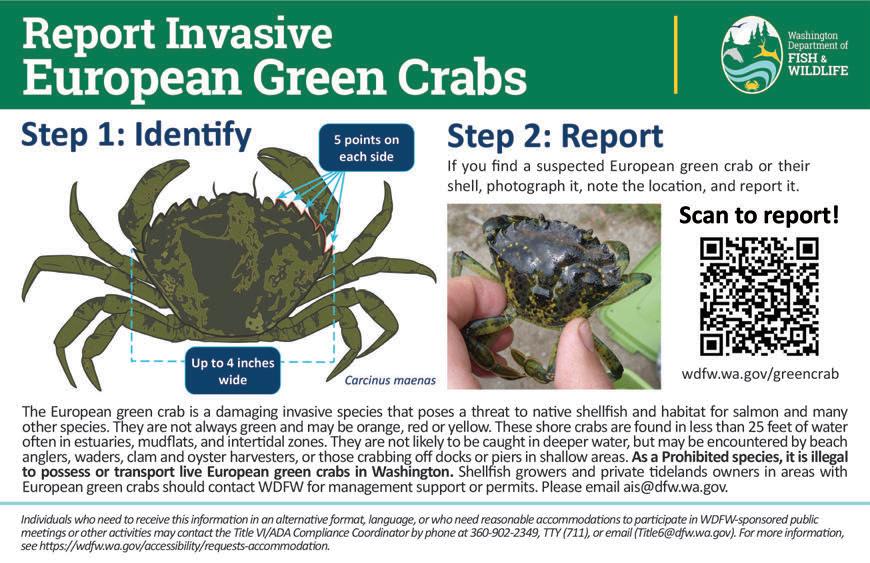

nwsportsmanmag.com | SEPTEMBER 2023 Northwest Sportsman 65
surface. Birds feeding on krill and baitfish schools is another sign of hungry silvers swimming nearby.
The best coho fishing periods are early morning hours or just before sunset, when fish can be found right on the surface and down 15 to 75 feet. As the day progresses, get your presentation as deep as 100 to 150 feet, but as mentioned above, keep close tabs on your fish-finder to see where the fish are milling.
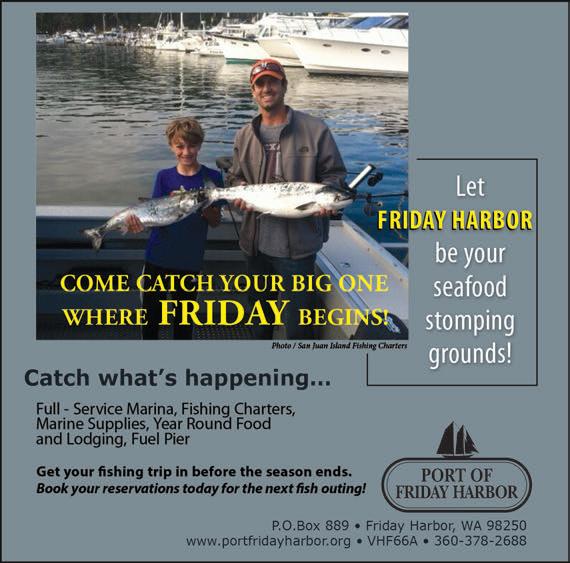

When you first get out on the water, set your gear at a variety of depths, with a couple at 25 to 50 feet and others between 60 to 100 feet. Once you catch a fish, get the other rods at the same depth and go back over the area where you caught it.
A downrigger is the best way to keep your presentation at a specific depth, but not having them doesn’t mean you won’t have success. You can use a banana-shaped lead weight of 2 to 8 ounces (current and wind will dictate the weight size to use) and count out the line so you can get the bait to the precise depth. I’ve even caught coho using a diver attached to a whole or cut-plug herring.
Popular lures include Silver Horde Coho Killers and Kingfisher Lites, and Luhr Jensen Coyote Spoons; plastic hoochies (2- to 4-inch squid imitations); and Silver Horde Ace Hi Flies in purple haze or green splatterback.
The Yakima Bait SpinFish is another lure garnering attention and it is available in a variety of sizes and colors. The SpinFish has a chamber where you can also add scent and comes with two pretied hooks on a 30-pound-test leader.
When drift or motor-mooching, use a small cut-plug or whole herring, or cast and retrieve a Beau Mac- or Point Wilson-style jig. Your leader length on a bait or jig should be 6 to 8 feet. Make sure to add anise or herring scent to your bait, jig or lure. NS
Editor’s note: Mark Yuasa is a Washington Department of Fish and Wildlife communications manager and longtime local fishing and outdoor writer.
66 Northwest Sportsman SEPTEMBER 2023 | nwsportsmanmag.com

BEST OF CHARTERS




Cook

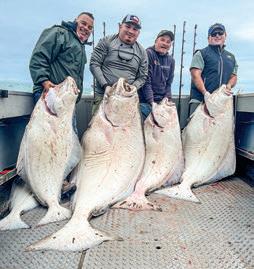
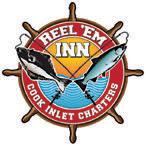

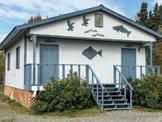
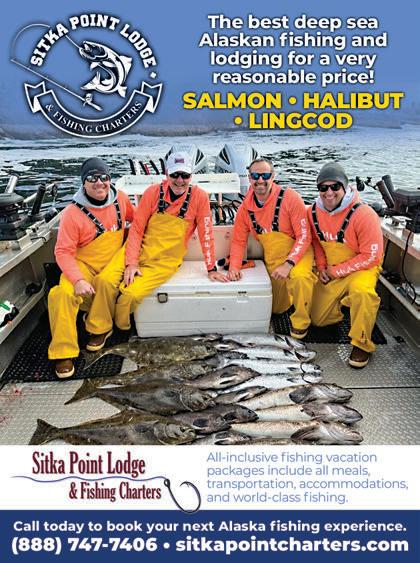

OF CHARTERS TO BOOK YOUR NEXT NINILCHIK FISHING CHARTER CALL REEL’EM INN AT 800-447-7335 cookinletcharters.com WE OFFER A COMPLETE ALASKAN FISHING PACKAGE • World-class halibut & salmon fishing • Clean and comfortable lodging • Full-service fish processing and packaging • RV park with full hook-ups
BEST
Inlet
Located in Ninilchik on the Kenai Peninsula
Fishing and Ninilchik Fishing Charters


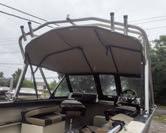


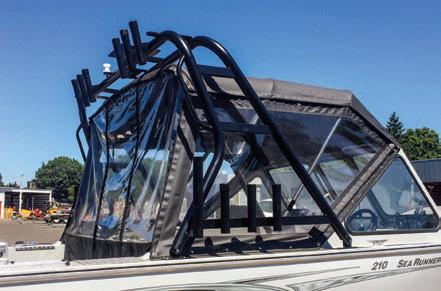
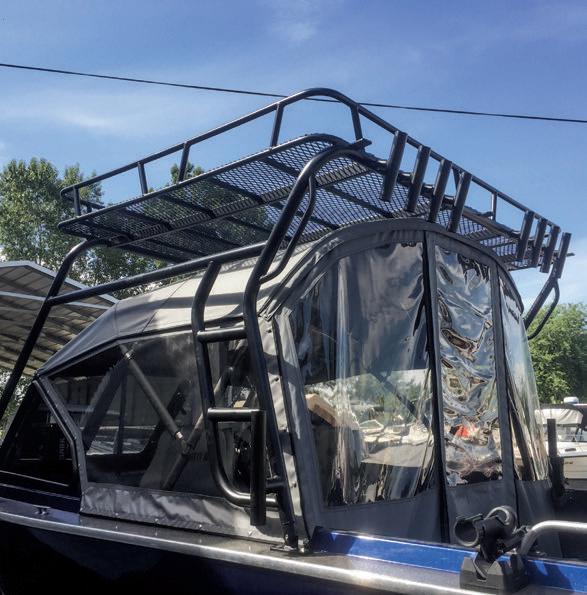
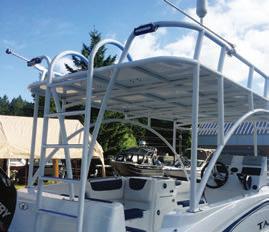
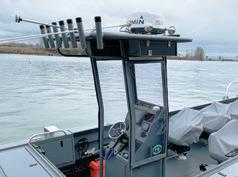

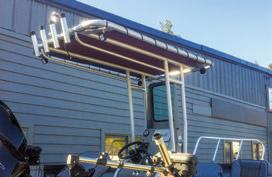
Transform your boat. T8 UTILITY TOWER T6 FISH & WAKE TOWER T7 FISH & WAKE TOWER BAREWEST HAS EXPANDED OUR CUSTOM PROJECT CAPACITY WWW.BAREWEST.COM (503) 620-2195 18707 HWY 99E, HUBBARD, OR 97032
Slammin’ Chinook Above Bonneville

It was 9 a.m. last September 7 when fishing guide Chris Turvey sent a text inviting me to fish that afternoon/evening with him at Drano Lake. The advantage of being retired is that you can stop whatever you are doing – even if it’s a project you’ve put off for years – and go fishing. I instantly messaged him back: “Yes. Count me in.”

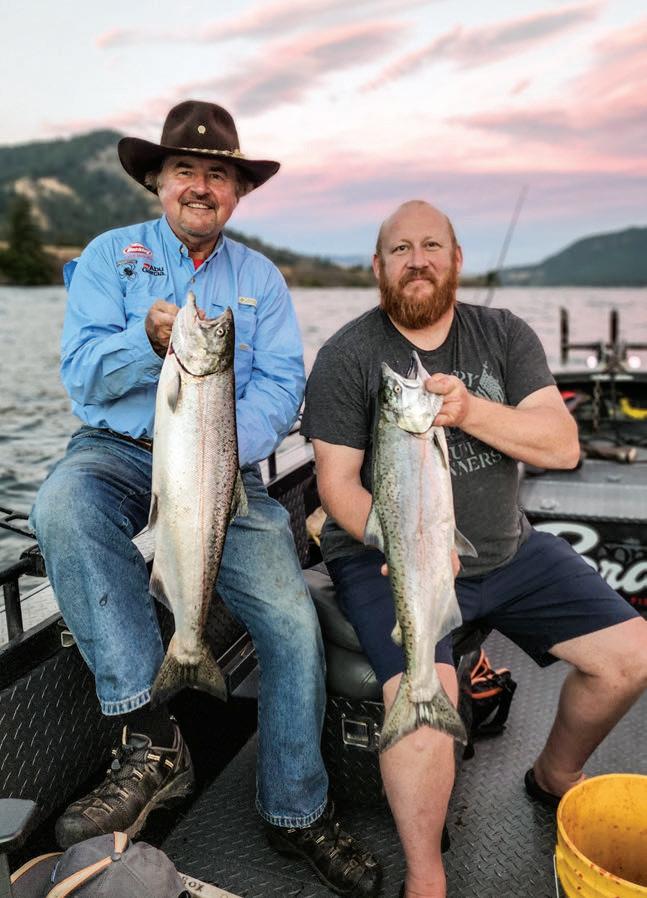
The plan was to meet Turvey (509571-6198) at the Drano ramp at 3:30, but I was there early with my fishing rod, hat, tackle box, camera and a hefty chunk of Thuringer from the previous year’s Oregon deer. We launched his boat and waited for his friend/client Chris Hedger of Richland, Washington, to arrive. There were a few other boats launching when we did, all eager to get out there and catch one of the 250,000 fall salmon that had passed over Bonneville Dam by that time.


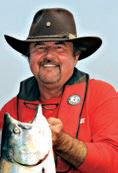
After Hedger arrived shortly before 4 p.m., we pulled away from the dock and, reaching deep water, started trolling toward the Highway 14 bridge. I’d only got my gear out a few feet before Hedger hooked a salmon. It turned out to be a chrome Chinook of about 10 pounds, which he quickly released. “Wow,” we all thought, “that was fast!”
As we trolled along, Turvey explained that although we had launched inside Drano, where there were salmon to catch, our plan was to fish the Columbia. As we got close to the bridge, several of the boats that had launched when we did were already returning with Chinook limits. All were saying that the fishing in the Columbia just outside Drano’s mouth was on fire. Granted, the adult Chinook limit is only
nwsportsmanmag.com | SEPTEMBER 2023 Northwest Sportsman 73
COLUMN
Chris Hedger and author Buzz Ramsey show off the adult Chinook they kept while fishing just off the mouth of Drano Lake last September. While their salmon weren’t monsters, the Columbia’s fall run can produce kings of 50 pounds or more. Ramsey once took a picture of a 57-pounder that was caught by an angler on a boat next to his off the Deschutes mouth. (BUZZ RAMSEY)
BUZZ RAMSEY
Like many guides and anglers, Chris Turvey rigs his 3.5 spinners directly on the leader. This no-wire rigging is facilitated via plastic tubing, a few beads, and blade attached via durable plastic clevis. Keep in mind that barbless hooks are the rule when fishing salmon in the Columbia River. (BUZZ RAMSEY)

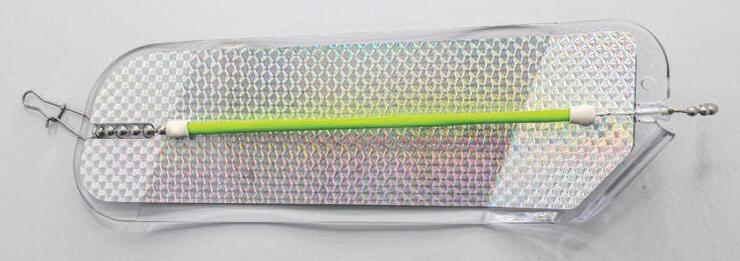
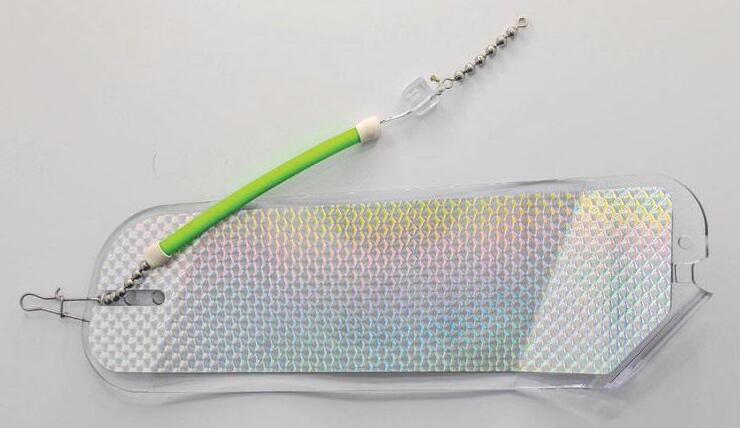
than a few passes we had two or three salmon on at once.
Granted, about 50 percent of the fish we hooked were jack Chinook, many just over the 24-inch mark that made them an adult. Not wanting to tag our one-adult limit with a Chinook not much bigger than a jack, we started releasing fish in the 24to 27-inch range. And while we did finally tag out on adult salmon, none we landed were over 20 pounds, although we hooked a couple that might have been.
one, but, man, I can’t remember a time when guide boats hosting six anglers were limiting in not much more than an hour. We had one more drive-by – meaning, the fish hit but didn’t get hooked – before reaching the bridge.
IT WASN’T LONG before we started hooking fish every pass as we trolled from Drano’s outlet downstream about 500 yards, turned and trolled back upstream, toward the entrance of the lake. We never made a pass without hooking up, and on more

Our goal was to fill our one-Chinook limit with a fish of 15 pounds or more. And while we likely caught and released a few of that size, the fishing was so good we kept trying for a bigger one. As the light began to fade, we settled for salmon that weren’t nearly as big as our goal, but plenty good enough.
I swear Turvey had a smile on his face the whole time. As he explained, “It’s not of-
74 Northwest Sportsman SEPTEMBER 2023 | nwsportsmanmag.com COLUMN
The
Pro-Troll rotating
flasher (left) is what first became popular for salmon in this part of the Northwest and remains the number-one seller. The small fin on the trailing end of the flasher makes it rotate at slower speeds than flashers without the fin. The new Brad’s Evolution Flasher (top) has a similar rear fin, but it features a bungee-style breakaway system (below) that releases when hooking a fish, allowing you to fight the fish with very little drag. It can be quickly reset by placing the clip installed just above the bead chain in the notch at the tail end of the flasher. Your leader is tied to the end of the bead chain, while your main line/bumper is connected to the snap at the head end of the flasher. (BUZZ RAMSEY)
OREGON FLORENCE
Y Marina
(541) 590-3313
www.ymarinaboats.com
PORTLAND
Sportcraft Marina, Inc.

(503) 656-6484
www.sportcraftmarina.com
WASHINGTON
CHINOOK
Chinook Marine Repair, Inc. (800) 457-9459
(360) 777-8361
www.chinookmarinerepair.com
MOUNT VERNON
Tom-n-Jerry’s Boat Center, Inc. (360) 466-9955
www.tomnjerrys.net
TACOMA
Tacoma Boat Sales & Service


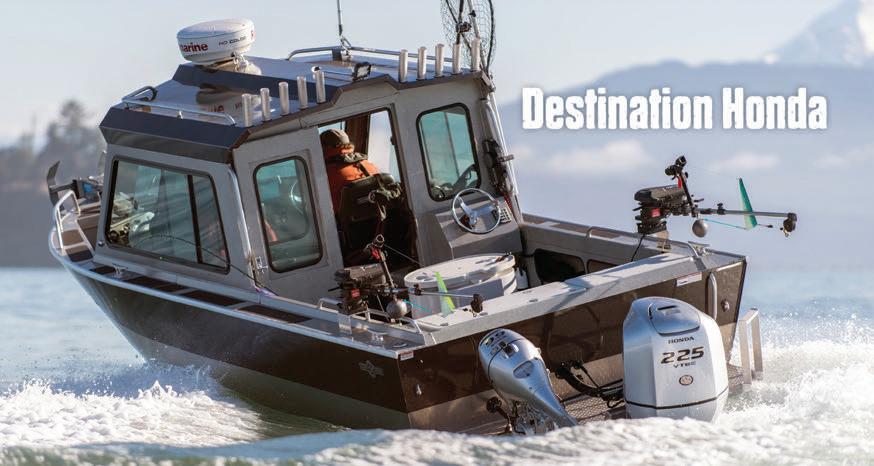
(253) 301-4013
www.tacomaboatsales.com
nwsportsmanmag.com | SEPTEMBER 2023 Northwest Sportsman 75
ten that fishing is so good you are releasing far more fish than you keep.” Hedger added, “I’ve never landed so many salmon.” And while the fall run was peaking during last year’s trip, the salmon fishing above Bonneville can stay good through September.
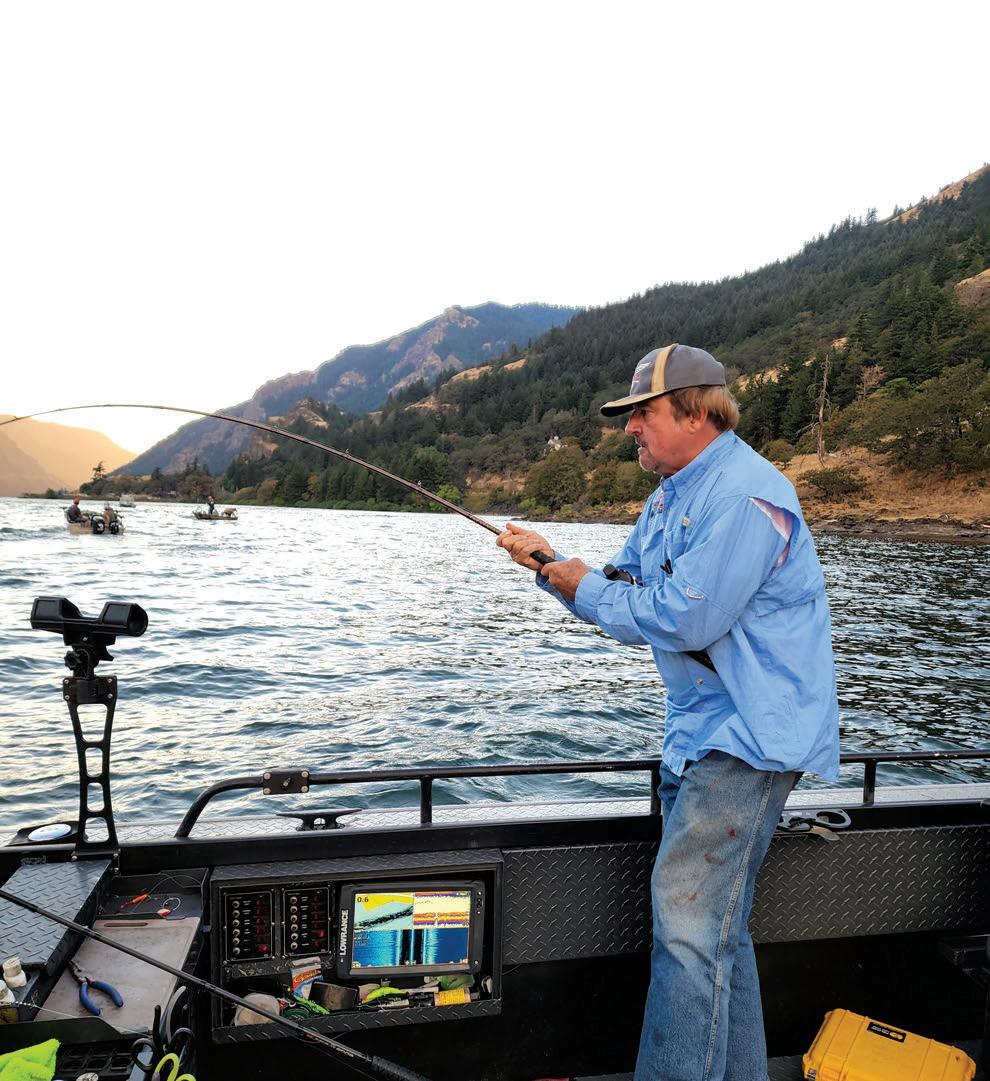
The Chinook action we experienced can be equally as good off the mouths of the Wind, White Salmon, Hood, Klickitat and Deschutes Rivers. Given the complexity of angling regulations for mixed stock fisheries and to protect sometimes endangered salmon from overharvest, make sure to check the rules carefully, as season dates can and do change.
IT’S NO SECRET that rotating flashers rigged in combination with a small 3.5

spinner is what most anglers use, including us that day. Our leader lengths were 22 inches knot-to-knot from weight to flasher and the same distance from flasher to spinner. We were adding Pro-Cure scent to our spinners, with garlic or garlic blend being what seemed to work best. There is no doubt that being on the water each and every day gives guides like Turvey an advantage, as he knew exactly what leader length, spinner colors and scents would produce quick hookups. And while it might be different this season, I’ve shared with you what worked for us last year.
Of course, Brad’s Super Bait and/or
SpinFish also work when rigged in combination with a rotating flasher. For plugs that can be stuffed with bait, many anglers just use canned tuna fish with a little ProCure added for good measure. If using a Brad’s Cut Plug or SpinFish, you might try rigging it 32 inches behind your flasher rather than the short leader often used in combination with 3.5 spinners.
And while the Pro-Troll flashers
76 Northwest Sportsman SEPTEMBER 2023 | nwsportsmanmag.com COLUMN
Ramsey fights a fall Chinook on the Bonneville Pool adjacent to Drano Lake. September’s a good time to fish these waters, as well as those off the mouths of the Wind, White Salmon, Hood, Klickitat and Deschutes Rivers. (BUZZ RAMSEY)











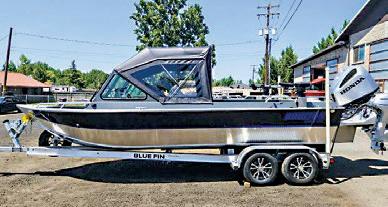

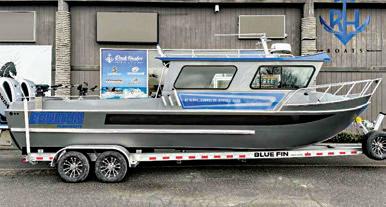
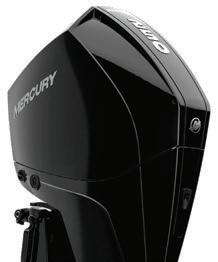
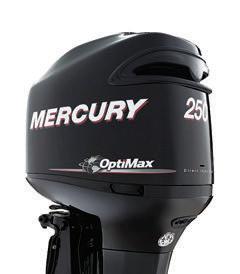

Antares 7 Fishing Monterey M4 Call or visit our website (425) 481-6934 rockharborboats.com Rock Harbor Boats 13410 NE 175th Street • Woodinville, WA SERVICE • SALES • PARTS NEW • USED • CONSIGNMENT Boulton Navigator Boulton Explorer Pro 28 Antares 8 — FINANCING AVAILABLE — PACIFIC NORTHWEST MERCURY REPOWER CENTER
equipped with the small fin that causes the flasher to rotate at slow trolling speeds is what many anglers use, other similar flashers work too. In case you don’t know, Turvey was responsible for designing the relatively new Brad’s 360 Evolution Flasher, which is what we were using last season.
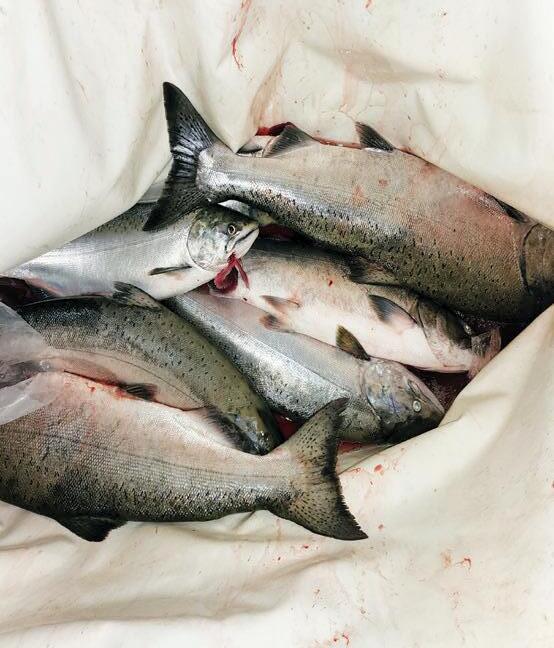
The Evolution Flasher is unique among rotating flashers in that it features a builtin bungee-style release mechanism that when hooking up relieves the hard pull associated with rotating flashers and can be quickly and easily reset. In addition, it can be adjusted via three different pull points to rotate at slow to fast trolling speeds of 1, 1.5 and 2 miles per hour. These adjustments give you an effective trolling speed range spanning .5 to 2.5 mph. We had our flashers set on the medium, middle hole/1.5 setting when we fished last year. NS
Editor’s note: Buzz Ramsey is regarded as a sport fishing authority, outdoor writer and proficient lure and fishing rod designer. As such, fishing rod manufacturer Douglas Outdoors has added Buzz to their ambassador pro staff.

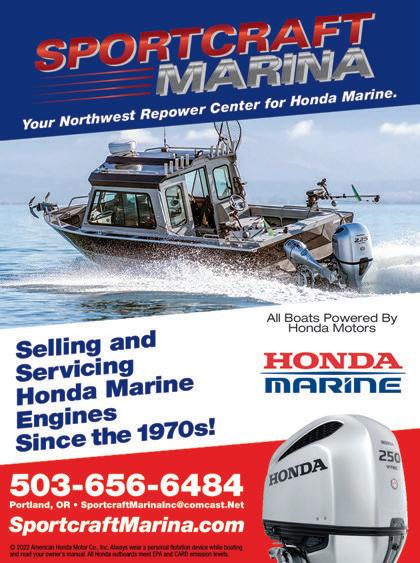
78 Northwest Sportsman SEPTEMBER 2023 | nwsportsmanmag.com COLUMN
They might not have been as big of Chinook as they’d hoped, but Ramsey, Hedger and Turvey put a mix of adult and jack salmon into a kill bag that evening. (BUZZ RAMSEY)
The Northwest Sportfishing Industry Association (NSIA) would like to extend our heartfelt thanks to all the wonderful companies that sponsored the Buoy 10 Challenge. We’re deeply grateful. Please support these companies that support better and more sportfishing opportunities across the Northwest. Shop at these stores and purchase these brands...they’re all making important and significant contributions to the future of Northwest fishing. Thank you!




















Fishermans








nwsportsmanmag.com | SEPTEMBER 2023 Northwest Sportsman 79
Ma r in e & Ou t do o r
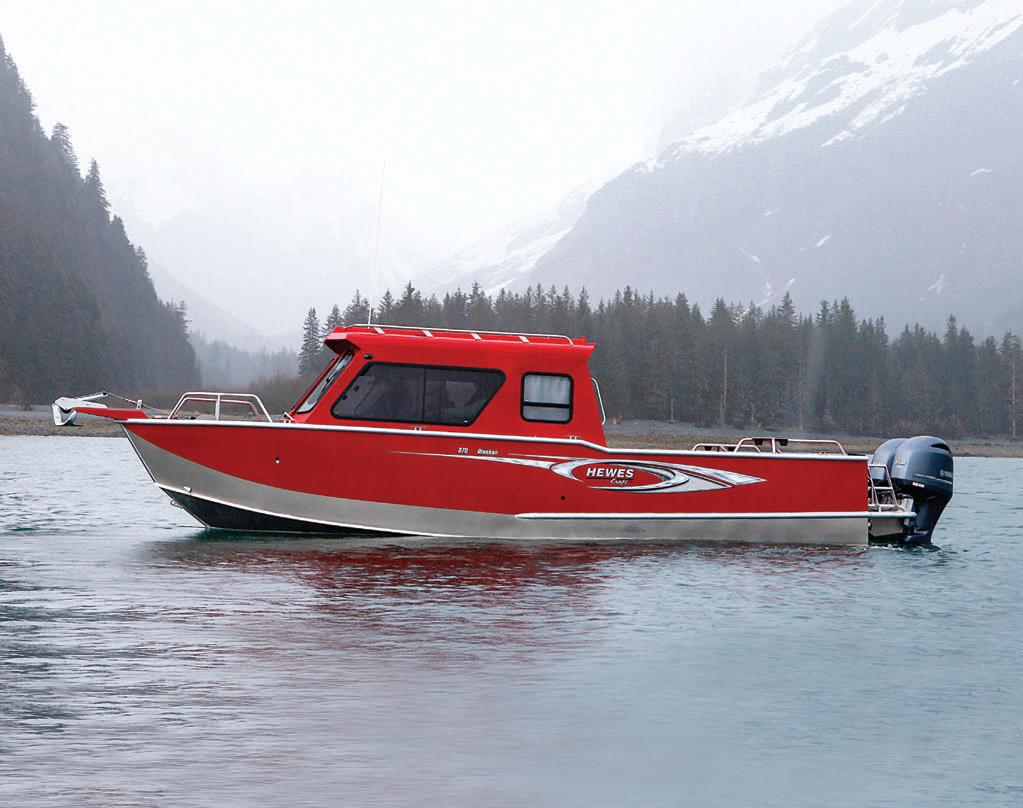


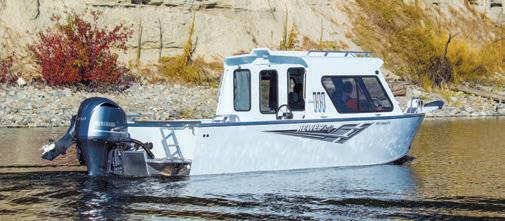
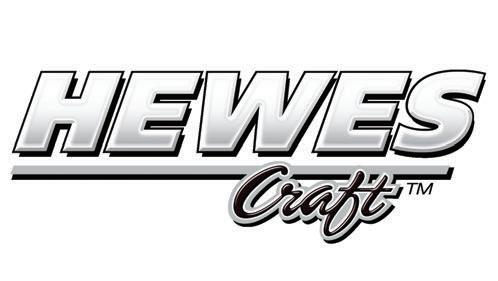








Your Complete Hunting, Boating, Fishing and Repair Destination Since 1948. WE OFFER A LARGE INVENTORY OF QUALITY BRANDS 1-877-426-0933 VERLES.COM









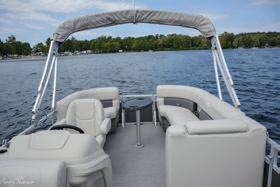

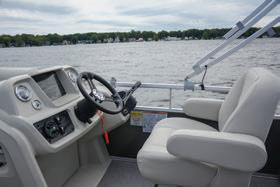





1-877-426-0933 VERLES.COM Your Complete Hunting, Boating, Fishing and Repair Destination Since 1948. WE OFFER A LARGE INVENTORY OF QUALITY BRANDS VISTA LR SERIES 18' AVAILABLE SIZES 20' 75¢ FRIDAYS See Our Facebook Page For Details Celebrating Our 75th Anniversary All Year Long!
UNION GAP Demo Rides Always Available!

2023 North River Seahawk Fastback
Yamaha 250 HP 4-Stroke Motor Hydraulic steering, Boarding ladder, Bracket for trolling motor, Cleats upgraded to 8”, Walkthrough transom door - starboard side, Bait box, Fish box, welded in floor, hinged door with drain and valve, FULL Fastback aluminum skinned top, Spotter door with DSG window, Rod holder (3) welded to net holder (1), LED light, rear deck, Washdown pump with spigot and hose, Two color full side paint. Only two remaining. Call or email for current pricing and availability.
2023 North River 22 Seahawk


Honda 225 HP Motor, Honda 9.9 Kicker Full Remote, Hydraulic steering, Boarding ladder, Cleats upgraded to 8”, Walkthrough transom door - starboard side, Rear cowling storage box, Fish box, welded in floor, hinged door with drain and valve, Aerate, rear cowling storage box, Washdown pump with spigot and hose, Two color full side paint
2023 Weldcraft 210 Revolution



Yamaha 200hp 4-stroke, Partial Hard Top with Gullwing Door, Washdown, Dual Wipers, Boarding Ladder, Suspension Seats, Rear Bench to Bed Seats, and More. VERY LIMITED SUPPLY for 2023. *Pxayments as low as $725/mo. w/10% down + tax & license (180 mo.
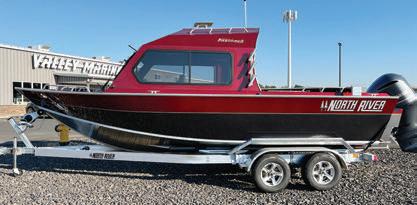
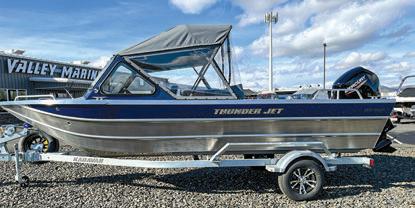

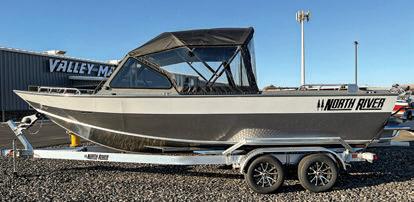

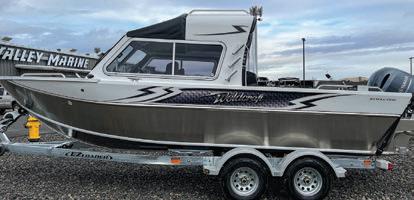
@.49% OAC) 2023 Duckworth 22 Pacific Navigator Hard Top Yamaha 250hp 4-Stroke Motor, Yamaha 9.9hp 4-Stroke Kicker w/Controls at Helm, Gateway Trailer w/Spare Tire, Chine Guides and Surge Brakes, Welded Downrigger Brackets, 3 Step Boarding Ladder, Swim Platform Kicker Bracket, 3” Stern Rails, Side Mount Rod Holders, Rear Transom Door, Partial Hardtop, Fixed Rear Facing LED Lights, Washdown System 2023 Thunder Jet 205 Rush Mercury 150XL, Mercury 9.9 Pro Kicker, Garmin Echomap 93SV UHDGT56, Ram Mount and Transducer Board, Control King Throttle Control, Minnkota RipTide, MinnKota 2 Bank On Board Charger, Prop Saver, Scotty Rod Holders (2), Rail Mounts for Scotty Holders (2), Passenger Windshield Wiper Kit, Seastar Hydraulic System, Plus More 2023 Lund 2025 Impact XS Mercury 200 Pro XS, Custom Bunk Lundguard Trailer Diamond Plate, Brakes, Second Axle, Premium Edition Graphics, Luxury Package, Washdown System, 2 Additional Jensen Speakers in Bow, Travel Cover, Sport Top w/ Walkway Curtain FULLY RIGGED $2500 REBATE! $725/mo.*
Don McBride holds a nice fall Chinook he caught above the Hanford Reach’s Vernita Bridge in his famously disgusting 21-foot Tracker walleye boat that serves as a salmonkilling machine. The boat suffers from a disease previously mentioned in this magazine, Tuna Drip Syndrome, which afflicts a craft when thousands of disgusting Super Baits drip on a carpeted boat that never gets cleaned because its owner is crazy busy. Thankfully, Don treats his TDS with robust amounts of cigar ash. (DON MCBRIDE)
Weed The Reach For Kings
Algae and milfoil make for tough fishing on the free-flowing Mid-Columbia, but one sharpie knows how to cut through the salad for early-arriving upriver brights.
By Jeff Holmes
The Hanford Reach will play host to hordes of salmon anglers this September and October as they seek the projected riches of a robust run comprised of good numbers of big kings. This famously free-flowing 63-mile stretch

of the Columbia River has seen as many as 200,000 wild Chinook a season return to spawn within the last decade, a testament to the power of a living, breathing river. This year, salmon managers expect around 79,800 wild and hatchery adults to return, and anglers have been assigned a harvest allocation of 4,620 kings
before the river closes on October 15. In recent years, the Reach has turned on later in September; however, pilot fish, some of the very largest kings, will head to spawning locations high in the upper Reach as early as late August. That’s the thing about the Reach: It’s a giant and diverse fishery full of quirks and idiosyncrasies, such

nwsportsmanmag.com | SEPTEMBER 2023 Northwest Sportsman 83 FISHING
as the wild swings in flow from Priest Rapids Dam as it produces power.
Although the Columbia in the Reach runs free, its swift flows are heavily influenced by Priest Rapids Dam. Here, power production fluctuates the river in elevation by almost 10 feet in a day! The fishery is completely unique in these elevation swings. It’s a swift anomaly in a dammed landscape, saved from reservoir status only by the presence of the Hanford Site. That massive nuclear reservation on the river’s western shoreline produced the plutonium that was used to fuel “Fat
Man,” one of two atomic weapons that effectively ended World War II. Now the site is strictly in clean-up status, as it has been since 1989. Home to twothirds of America’s defense-related nuclear waste, Hanford’s history contrasts sharply with the healthy river to its immediate east.
Nevermind the rumors and nonsense from a small minority about polluted fish or the whole Reach being a “boot ranch” of colored-up fish. The facts don’t support the rumors, and local anglers and regular visitors are happy for the haters to stay home.
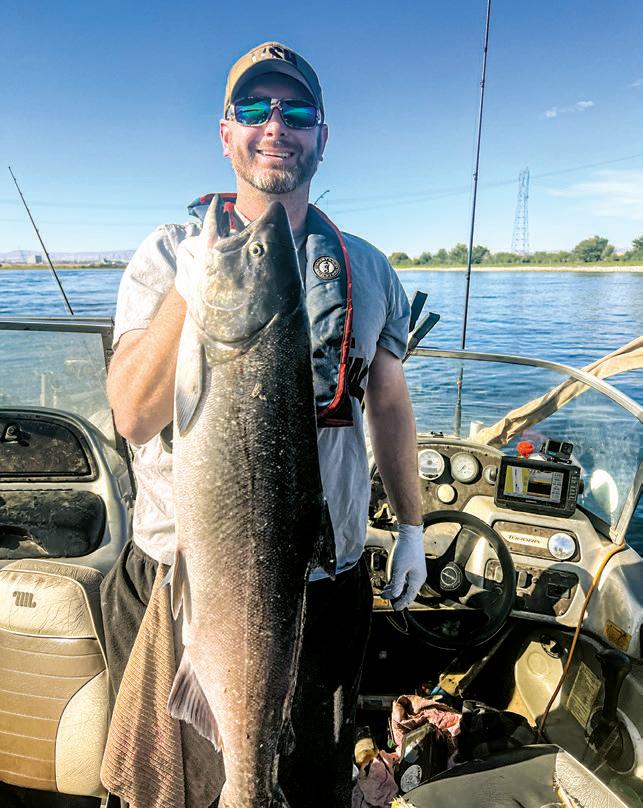
Simply put, the Hanford Reach is one of the world’s most unique and precious coldwater fisheries. Along with fall Chinook and also coho in late summer and autumn, sockeye, springers and summer kings also swim through earlier in the year, en route to their natal streams. The Reach is also home to steelhead, sturgeon, mountain whitefish, walleye, smallmouth bass and many more species.
DON MCBRIDE IS one of the Pacific Northwest’s best-known salmon anglers who isn’t a guide or an “industry guy,” and I’m lucky to call him a close friend and mentor. In part due to the brimming confidence he is happy to regularly share, McBride is a salmon-limiting machine everywhere he fishes, but especially around TriCities. Instead of guiding for salmon, which he could do with excellence, he’s been helping protect the Columbia by leading cleanup of some of the most dangerously radioactively polluted spots on the Hanford Site for the past 35 years. For many years, no pollution discharge has been measurable at historical pollution points on the Reach. This is thanks to ongoing efforts focused first on the river corridor itself before other parts of Hanford. McBride’s job is somewhat more demanding and financially rewarding than guiding, but he doesn’t come in far behind the guides on days spent on the water or fish bonked, maximizing his fishing time by having seemingly no sleep requirement. He’s learned every nuance of the Hanford Reach fishery from Tri-Cities to Priest Rapids Dam and can kill it anywhere, including right in town after work.
I asked McBride to address the greatest frustration in what is surely a rewarding but also ever-changing fishery: weeds. In September especially, weeds are troublesome, as sharp spikes in river elevation take place as Priest Rapids Dam generates power for Seattle. A summer’s accumulation of weed growth dislodges and creates a fishing hassle that usually frustrates and sends home other anglers. Like
84 Northwest Sportsman SEPTEMBER 2023 | nwsportsmanmag.com FISHING
With the famed Wooden Powerlines in the background, Coastal Conservation Association Tri-Cities Chapter former president and current secretary Teddy Schmitt hoists a backtrolled upriver bright that ate a bait of eggs. This summer, Schmitt netted the winning hatchery king (18.04 pounds, gutted, gilled and bled) at the 2023 CCA salmon derby in Wenatchee for his buddy, derby winner Brandt Cappell (wenatcheesalmonderby.com). That popular derby features lots of competition, cash prizes and bonked hatchery kings headed for barbeques, smokers and ovens alike. CCA’s North Central Washington Chapter hosts the harvest-focused hatchery fish derby to raise funds, recruit new members and create a fun and competitive event in the fishing community. Meanwhile, October’s King of the Reach derby Schmitt helps to orchestrate is a very different, 100-percent nonprofit derby focused on live capture of a statistically small number of kings to ensure the genetic health and continued operations of the critically important Priest Rapids Hatchery. (DON MCBRIDE)
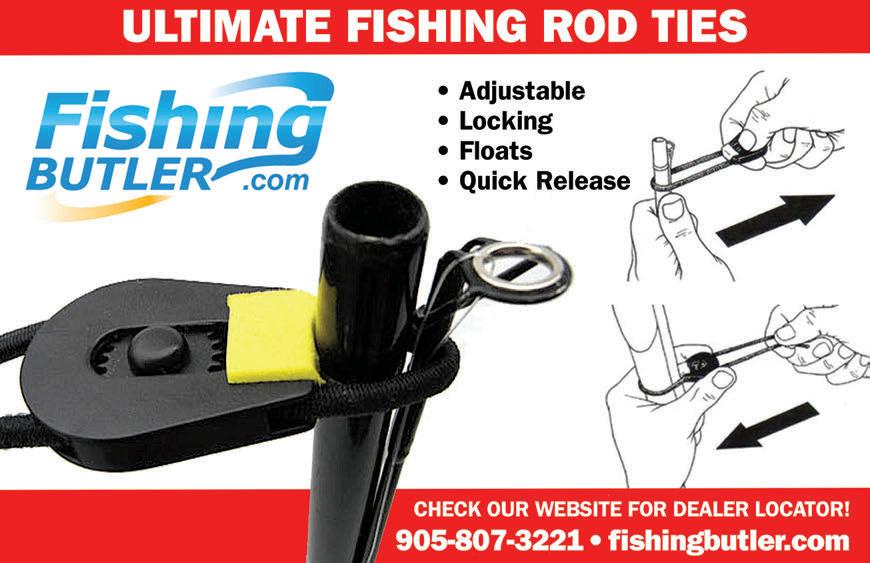




nwsportsmanmag.com | SEPTEMBER 2023 Northwest Sportsman 85 WWW.BAYDENOCLURE.COM Fishing for Walleye, Trout, Pike, Pan Fish, Bass, Stripers, Salmon and Whitefish with Bay de Noc Lures Dealer Inquires Welcome!
September mornings on the Reach start out cool but give way to summerlike temperatures, gorgeous blue skies when wildfires are not a problem, and sunsets that those who start this early in the morning are unlikely to see. Like most salmon fisheries, the first hour or two on the Reach can be magic. The king that Washington Department of Fish and Wildlife Director Kelly Susewind battled here hit a Super Bait in super hot tamale and tied 42 inches behind a Pro-Troll flasher. (DON MCBRIDE)
McBride, I live in Tri-Cities, close to popular ramps used to access the Reach. I have driven to the river’s edge and headed back home. I have launched and fished for 15 minutes before realizing it’s futile. Weeds can be completely prohibitive on the Reach for most. But I’ve also slayed Chinook in the weeds in McBride’s disgustingly tuna-dripped Tracker walleye boat while no one else caught anything. Here’s his generous breakdown that will surely benefit any angler wanting to do well with regularity on the Reach.

“PROBABLY MY LEAST favorite fishing condition is the dreaded salad bar, with milfoil or filamentous algae fouling gear and requiring constant retrieval
of gear to clear the weeds off,” says McBride. “There are times when the conditions can get so weedy that you simply can’t fish effectively, especially if you’re fishing in Richland or the Bateman Island area and if the water level has been fluctuating greatly. However, there are a few tricks to extending the range of conditions and being able to produce fish even when the conditions are annoyingly weedy.”
“One of the important tricks is to protect your gear with swivels and weed guards,” says McBride. “A weed guard is a 1- to 1 1/2-inch plastic tube, closed at one end except for a small hole for the line to thread through, that is designed to slide over a bead chain swivel and protect it from being
fouled by weeds. If you have trouble finding weed guards, you can use a small syringe or half of a ballpoint click pen. To make the weed guard perform at its best, add a 3mm to 5mm bead to your mainline, then slide on the weed guard, then a bead small enough to slip inside the weed guard. Then tie on a six-bead chain or roller swivel. The beads will help prevent fragments of weeds from slipping inside the pinhole at the top of the weed guard, and the inner bead will make the end of your swivel stick out slightly past the end of the guard so that if you add a duolock snap (as I normally rig), it won’t bind against the soft plastic of the weed guard. You’ll find that the use of weed guards
86 Northwest Sportsman SEPTEMBER 2023 | nwsportsmanmag.com FISHING
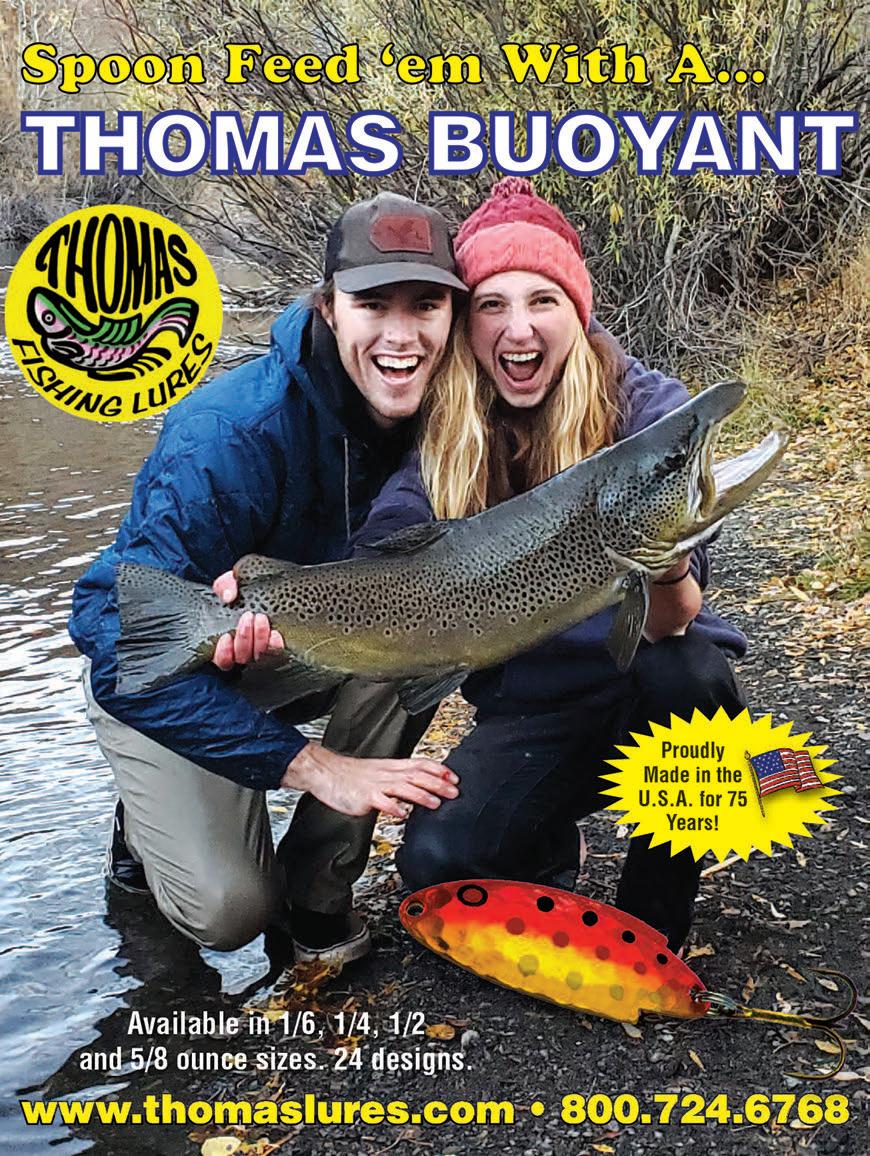
nwsportsmanmag.com | SEPTEMBER 2023 Northwest Sportsman 87
can save hours of frustration, as well as a lot of lost tackle. A fouled swivel can quickly result in a leader getting so twisted that it simply breaks off, losing more than $20 worth of flasher and bait without even a goodbye.”
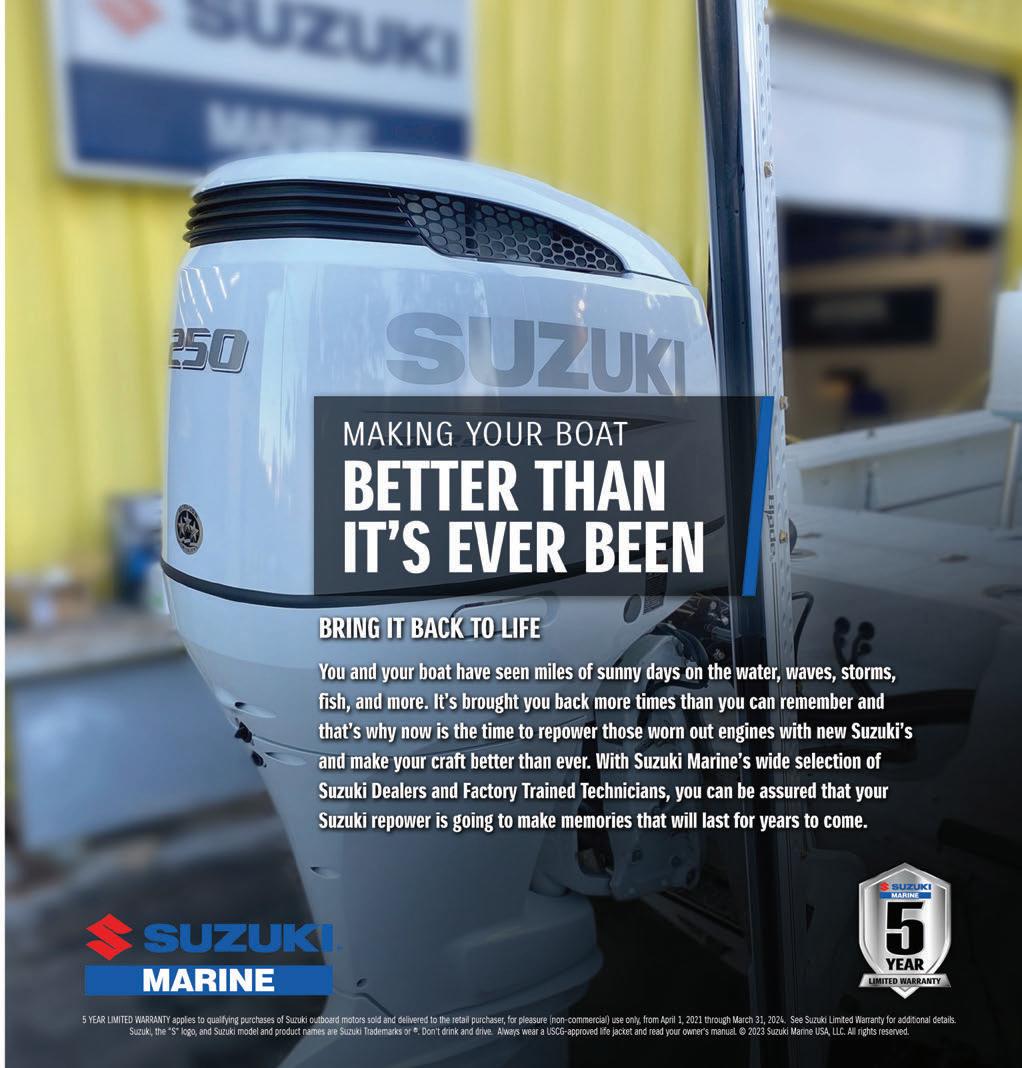
“The next trick is to add an extra bead chain at midleader of your Super Bait rigs if fishing in weedy conditions,” says McBride. “You generally get fewer weeds on your bait than on the mainline and flasher anyway, but this will catch many of the weeds before they slide down your leader to the bait – especially in conditions with filamentous algae. I normally don’t
bother with a weed guard on this swivel, but in extreme conditions you could try adding one.”
Filamentous algae is the worst of the worst, and McBride and I agree that if it’s bad enough, there’s no point in fishing. Filamentous algae is mobile and lives and breeds at all levels of the water column. It becomes a problem at times in the Columbia when warm water temperatures, lots of sunlight and huge loads of nitrogen and phosphorous from the unimaginable amounts of fertilizers used in the Columbia Basin combine to create a Shangri-la for algae. There’s not a lot an
angler can do about filamentous algae unless it’s not too thick, in which case McBride’s advice about protecting bead chains and other gear can win the day.

“MY FAVORITE STRATEGY is especially helpful if the weeds du jour happen to be milfoil or star grass, which often float near the surface,” says McBride. “These weeds are particularly troublesome for commonly used cannonball/flasher/Super Bait rigs, because the relatively long angled mainline entering the water easily allows the weeds to slide down the line and pile up on the flasher, killing its action. My favorite tool in these conditions is to add a couple of downriggers to the spread. This has multiple benefits. First, the downrigger cable cuts or stops the majority of the weeds that would otherwise pile up on the flasher. It does eventually pile up on the cable and on your downline to the point where it requires redeploying, but it greatly extends your fishing time because as long as it doesn’t get so heavy that it pops your rig off the release clip, the weeds will remain above the ball and won’t foul your flasher or bait. You can extend the fishable time even further by having a stiff fishing rod or stick handy to clear weeds off the cable and line while trolling.”
“I also find that it’s a perfect way to deploy one of my favorite flashers, a large or medium Leo flasher, which I’ve been fishing semi-secretly before they became commercially available,” says McBride. “I ran one of these in my spread as a prototype for many years, and it accounted for about half of my summer and fall Chinook most years, even when running against three or four other flashers. My experience is that the Leo runs particularly well on the downrigger, but also produces well with cannonballs. Like the Super Bait, the Leo is the real deal, not a gimmick or a marketing ploy to fill boxes with a new darling product. These work, and I recommend them, especially for your downriggers on the Reach.”
“The real secret to adding the
88 Northwest Sportsman SEPTEMBER 2023 | nwsportsmanmag.com FISHING
Wayne Robertson of Richland took home this barbecue-worthy fish after hooking and landing it on the downhill troll in North Richland at the bottom of the Reach. Here, anglers who know the river channels and the “trail” can show flashers and baits to traveling fish for miles-long trolls. (DON MCBRIDE)

nwsportsmanmag.com | SEPTEMBER 2023 Northwest Sportsman 89 OREGON EUGENE Maxxum Marine (541) 686-3572 www.maxxummarine.com PORTLAND Sportcraft Marina (503) 656-6484 sportcraftmarina.com WASHINGTON EVERETT Performance Marine (425) 258-9292 perform-marine.com MOUNT VERNON Master Marine Boat Center, Inc. (360) 336-2176 mastermarine.com SHELTON Verle’s Sports Center (877) 426-0933 verles.com
Late summer and autumnal sunsets can be gorgeous anywhere, but during my 12 years in the desert, it has become clear that Hanford Reach and Tri-Cities sunsets are special. Here the sun rules; it wears out anglers and eats anything left out in it uncovered. I find myself out fishing in the evening more than the morning, but if I were to reverse that timing, I’d surely catch more fish. Still, afternoon and evening trips are well worth the time.

downriggers to the spread is that I can position a cannonball/flasher/Super Bait rig behind each downrigger and enjoy the benefit of having the weeds blocked by the downrigger,” says McBride.
I have seen him achieve this many times and have enjoyed reeling in kings in front of all of our fellow anglers catching nada.
“It takes some care to avoid tangling, so I deploy the downrigger first, then the cannonball rig, while using care not to drop the cannonball too quickly so it won’t drop into the downrigger gear,” says McBride. “I also find that a fifth rod can be deployed out the center of the stern and that the boat itself clears a lot of the weeds.”
“A FINAL TRICK, when weeds are extreme or if not using downriggers, is to deploy drift socks,” says McBride. “They’re not as effective as downriggers, but they do block some of the weeds, especially on the surface. I rig my drift
socks on each side of the boat just ahead of the downriggers, with a short line tied to the trailing end of the sock and then snapped to a cleat on the side of the boat. This makes it easy to pull the socks when fighting a fish or running to a new spot, and keeps the sock tethered in the right spot when turning or backing.”
At first I thought all of this technical nonsense McBride was employing was … a lot. But the advice he offers here is very achievable and can be the difference not only between catching and not, but also fishing or not. Weeds in September can be bad, so having a mitigation approach like McBride’s is a wise move. NS
PLAN B’S FOR BRIGHTS
Along with the Hanford Reach, plenty of kings spawn upstream, above Priest Rapids Dam, and even downstream in Tri-Cities itself. Above Priest, the Crab Creek fishery is well known, but there are other options such as launching in the town of Desert Aire to access the forebay of the dam. You won’t usually have a ton of company here, but head downstream of the Reach and you will see lots of other anglers fishing the 300 Area to Selph Landing troll, the Hampton Inn to I-82 troll, the Bateman Island trolling paths and the Columbia Park troll. Flashers and Super Baits or spinners account for most of the fish here.
Meanwhile, downstream a ways the fishing can be excellent (but tricky) in the forebay of McNary Dam, along the Oregon shoreline below the dam, and at the Umatilla River mouth, which is also home to lots of coho. Another option in September is the Lyons Ferry bubble fishery near Starbuck, where I have caught a lot of kings while steelheading in years past. Trolling Super Baits along the dropoff in front of the hatchery is lethal. Finally, fall king options exist from Clarkston upstream to the Oregon border. –JH
90 Northwest Sportsman SEPTEMBER 2023 | nwsportsmanmag.com FISHING
(DON MCBRIDE)

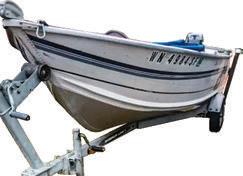





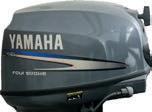
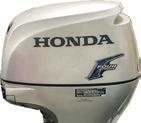
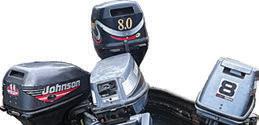
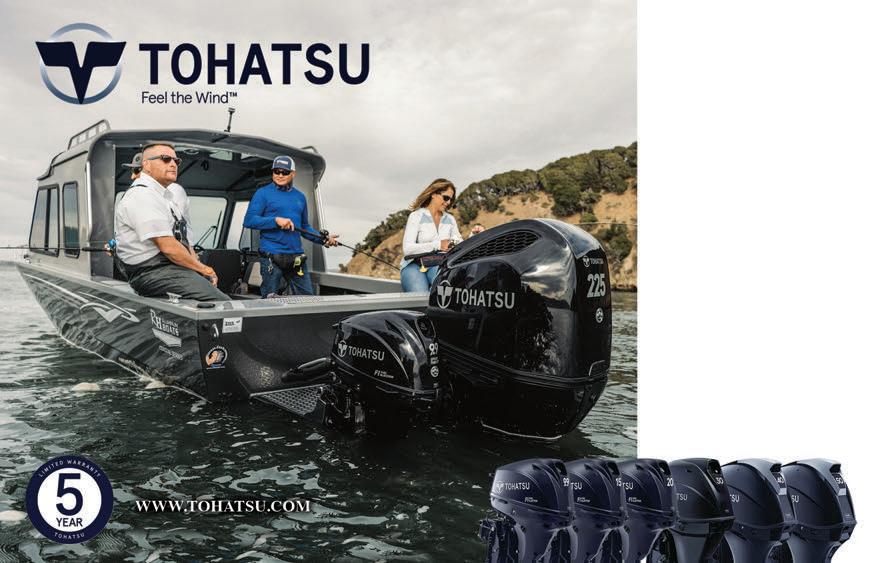
nwsportsmanmag.com | SEPTEMBER 2023 Northwest Sportsman 91 Specializing in Outboard Jets REPAIR / REPLACE HOLCOMB’S MARINE 1307 Spencer Rd, Toledo, WA 98591 • on the COWLITZ RIVER near BLUE CREEK www.holcombmarine.com (360) 864-6406 • holcombmarine@msn.com Dissimilar Trades Accepted - RVs, Travel Trailers, Ski Boats, ATVs, Harleys, Trucks, Autos Accepted • 115 ELPT Jet . . . . . . . . . . . . . . . • 8hp Hi-Thrust ELPT . . . . . . . . . . . • 9.9 Hi-Thrust EL . . . . . . . . . . . . • 25hp M Tiller . . . . . . . . . . . . . $5,950 $3,450 $3,650 $3,450 • 50hp EL Tiller . . . . . . . . . . . . . . • 115hp Long 2 Stroke Jet . . . . . . . . • 6hp Short . . . . . . . . . . . . . . . . • 8hp ML 4-Stroke Kicker . . . . . . . . $5,950 $CALL $CALL $2,650 • 15hp Long P Trim . . . . . . . . . . . • 8hp Short . . . . . . . . . . . . . . . . • 10hp Short . . . . . . . . . . . . . . . $3,450 $2,850 $2,450 OREGON EUGENE Maxxum Marine (541) 686-3572 1700 State Highway 99 N www.maxxummarine.com
Rick Itami loves to fish for steelhead at the Snake-Clearwater confluence at night in late summer and fall using lighted plugs, but he thought the method had gone ice-cold because manufacturers kept discontinuing the product lines. Then he discovered new locally made blinking lures, which accounted for this beautiful B-run last season. (NEAL DRURY, VIA VISITLCVALLEY.COM; RICK ITAMI)


92 Northwest Sportsman SEPTEMBER 2023 | nwsportsmanmag.com
Night Steelheaders Back In Biz
After seeing lighted lure purveyors, er, pull the plug over the years, there are new local offerings on the market for Snake-Clearwater confluence anglers.
By Rick Itami
Almost 20 years ago, I was launching my boat in Clarkston to fish the confluence of the Clearwater and Snake Rivers for steelhead. It was about a half hour before dawn and just as I was about to motor away from the dock, a fellow in a 12-foot aluminum boat with a 6-horsepower outboard cruised in and docked across from me. I asked him if he was having trouble and had to come in
early. He surprised me by saying that he had been fishing all night trolling lighted lures and had caught 30 steelhead. He was ending his outing as dawn approached.

I had heard about anglers using lighted lures successfully but thought it was better to get my sleep than to troll around in the dark of night. But this guy’s tale got my attention.
Back then, the only company that made lighted lures that worked for steelhead was Vortex and their lures worked well. I went to (now closed)
Black Sheep Sporting Goods across the Snake in Lewiston and bought a few to give them a try the following evening.
To make a long story short, I didn’t catch 30 steelhead that first night, but I did experience the vicious strikes lighted lures produce. I remember getting several strikes and I think I landed at least one fish over roughly three hours that night. It was enough to convince me that I had been missing out on a great way to catch steelhead. I have fished lighted lures
nwsportsmanmag.com | SEPTEMBER 2023 Northwest Sportsman 93 FISHING
after dark ever since.
Five or six years after I started fishing with lighted lures, Vortex went out of business and quit making the lures. My guess is that they couldn’t make a profit because so many of their lures had to be returned when the batteries went dead or the lure bodies filled with water and quit working properly. It was a sad day for many of us because the lures were so effective. We tried to make our last batch of Vortex lighted lures work for as long as possible. But after almost two years, my last working plug went dark for good. I tried some other lighted lures, like Lazer Lures, but none of them were effective for catching steelhead.
A few years later, Brad’s started selling lighted lures in their magnum and regular Wiggler patterns. This saved our day and kept us night fishermen on the water after dark for several years. But then, two or three years ago, Brad’s also quit manufacturing the lighted Wigglers and us after-dark anglers had to again try to make our horde keep blinking as long as possible. My last magnum

Wiggler pooped out in fall 2021. The thought of having to give up this special type of fishing that was so effective saddened me greatly.
BUT THEN IN spring 2022, while anchored in a hogline on the lower Clearwater and fishing for spring Chinook, I overheard some fellows in neighboring boats talking about buying lighted lures in Lewiston at Travelland RV. It’s amazing how much good information you can pick up while BSing with other boat fishermen. I drove up the hill to Travelland RV that same day and found that they had a good assortment of lighted plugs. Called Night Strike plugs, they looked exactly like the old Vortex lures that I first started with years ago. I bought a dozen.
Kevin Munstermann, the owner of Travelland RV, is the man behind the development of Night Strike Lighted Lures (nightstrikelures.com). He told me that during the Covid pandemic in 2020, he found a fellow who sold the Vortex lures on Craigslist and initially bought 100 lures. Later, he contacted the seller to buy another
100 lures. The seller came back with an unexpected proposition that Munstermann found too good to pass up. He offered to sell Munstermann all the rights, molds and product he had and share his contacts in China where the lures were made.
Munstermann accepted the offer and started using his ingenuity to work the bugs out of the lures and create a new version of the old Vortex lures. His new version allows fishermen to change batteries themselves and not have to send the lures back like the old Vortex and Brad’s plugs. He also heard from fishermen that they wanted magnum-sized lighted lures. Hence, he modified the magnum Brad’s Wiggler lighted lure to take replacement batteries like the smaller 1000-series Night Strike plugs.
The lures were an instant success and Munstermann says that he sold $10,000 worth of Night Strike lures in only three months. He’s on a mission to continuously improve the plugs. The current 1000 series and magnum lures require two small LR41 batteries, which are somewhat difficult to insert into the lures. Munstermann is developing lure prototypes that require only one battery, which should make battery insertion much easier. Unlike the original Vortex, and later the Brad’s, the Night Strike’s blinking lights are not water-activated. They only come on and blink when batteries are inserted. When done fishing with the lures, remove the batteries to stop the blinking and save battery power. This is easily done by tapping the lures on a hard surface.
In 2022, Munstermann put out newly redesigned K-16 Kwikfish/ FlatFish-like salmon lures that require only one CR927 battery that is a little larger than the LR41 batteries found in the 1000 series and magnum steelhead lures. He planned a new lure offering this year that will have scent chambers to hold canned tuna or other salmon attractants.
With 2023’s summer steelhead run looking better than the initial horrible
94 Northwest Sportsman SEPTEMBER 2023 | nwsportsmanmag.com FISHING
A sample of some of the Night Strike lures available for catching steelhead and salmon. The plugs blink red or green when the battery is inserted; when you’re done fishing, simply remove the battery to ensure longer life. (RICK ITAMI)
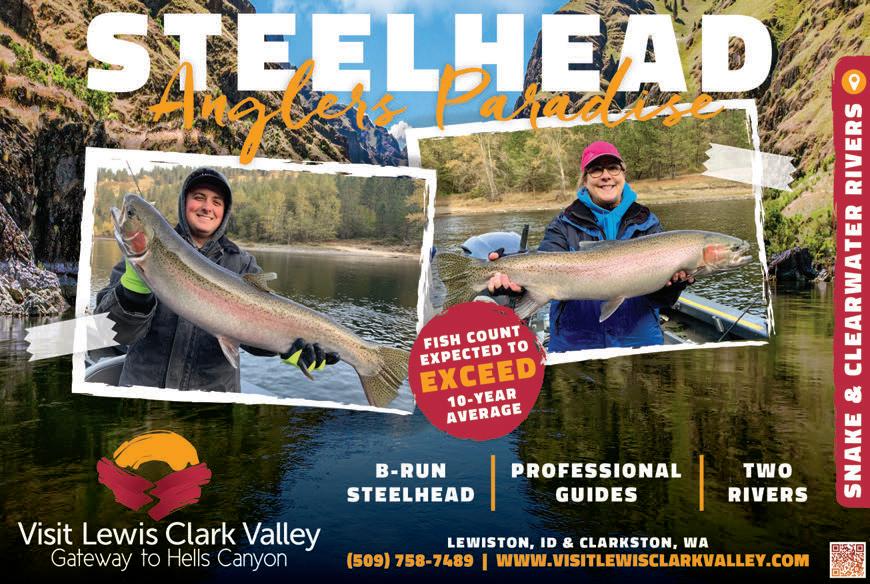
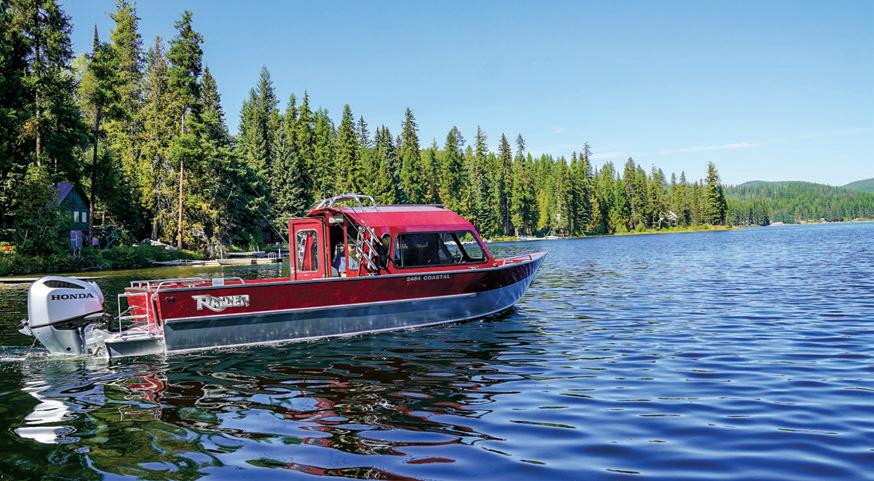
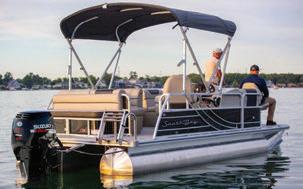
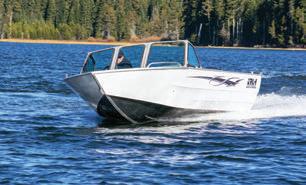






nwsportsmanmag.com | SEPTEMBER 2023 Northwest Sportsman 95 111 N. Kittitas St. Ellensburg, WA 509-925-1758 • M-F 9-5pm inlandboatsandmotors.com INLAND BOATS & MOTORS SERVING YOU SINCE 1975
forecast – but also only two-thirds of the 10-year average – we diehard night fishermen of the Snake-Clearwater confluence and beyond are indebted to Munstermann for making it possible for us to keep pursuing steelhead as well as salmon with lighted lures.

IF YOU’VE NEVER fished at night using lighted lures, allow me to share a few suggestions. First, make sure the waters you intend to fish allow fishing after dark. Read the fishing regulations closely.
It is an absolute must to have good, working navigation lights on your boat. Unbelievably, I have seen boats trolling with no navigation lights at all. This is suicidal because some boats travel up and down the river at full speed and would never be able to see boats without proper navigation lights.
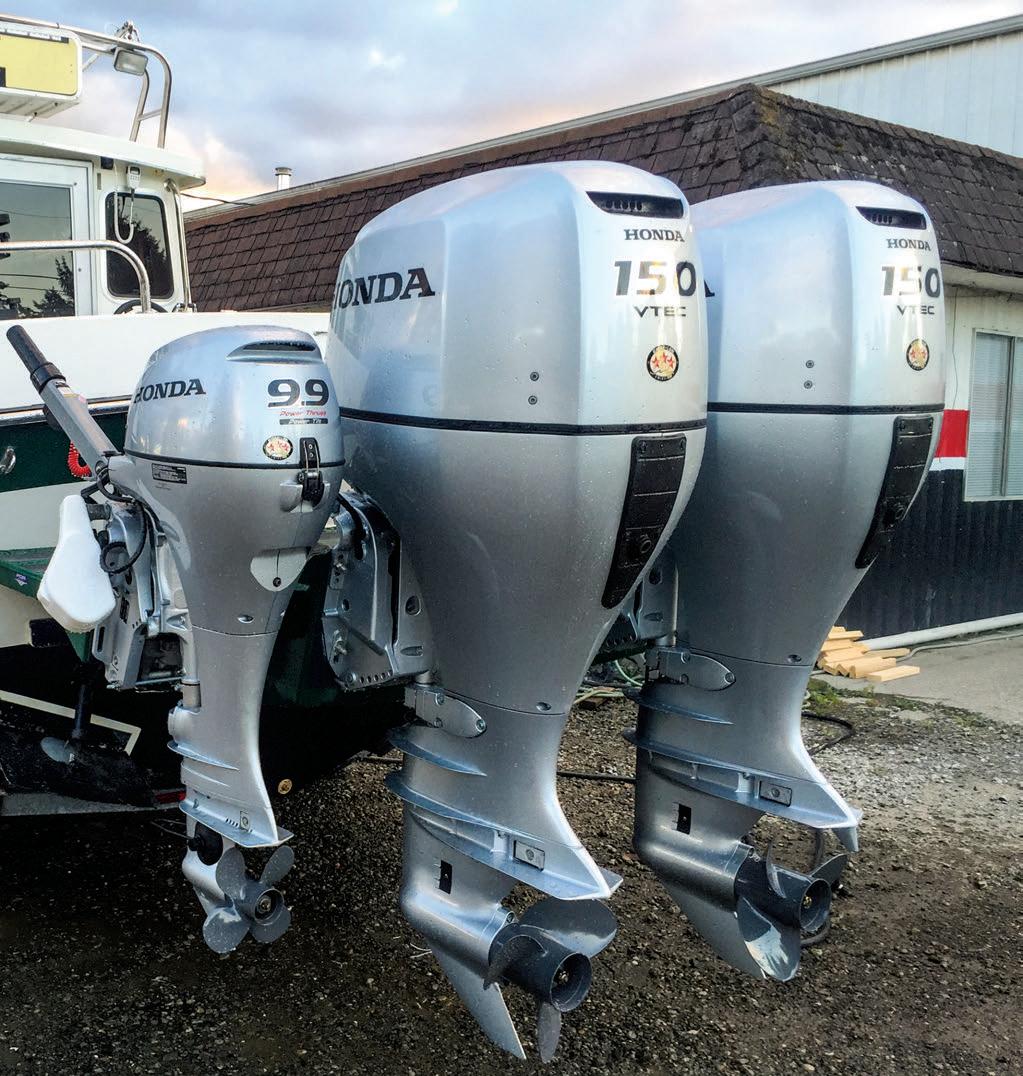
By the way, traveling in the dark at full speed is also insane. One night, I saw a boat coming straight at me at high speed and the only way I could get his attention to slow down was by turning on the light on my baseball cap bill to blinking mode. The boat stopped only 20 feet from my vessel. The operator apologized and said he couldn’t see me, even though my navigation lights were working properly. Because of this incident, I always wear a life preserver at night. Be safe and travel slowly in the darkness.
Trolling lighted lures at night is not much different from trolling regular lures during the day. You can use a kicker motor or an electric trolling motor for propulsion. I prefer using a bow-mounted electric trolling motor with a remote control. I keep the trolling speed to between 0.8 and 1.2 miles per hour. I usually flat line the 1000-series Night Strike lures out 100 to 150 feet and the magnum lures out 70 to 90 feet. This gets the lures down to around 15 feet.
Since it’s difficult to see your rod tip in the dark, you can sometimes miss a strike or hookup. Some people fasten light sticks to their rod tips so they can see exactly when a fish
FISHING
Lee Skow holds a nice B-run steelhead caught while fishing with Shawn Benson, outside sales manager for Night Strike Lighted Lures. (SHAWN BENSON)


9316 Portland Ave. E Tacoma, WA, 98445 253-301-4013 www.tacomaboatsales.com Always wear a personal flotation device while boating and read your owner’s manual. 2021 American Honda Motor Co., Inc. ® ALL BOATS POWERED BY HONDA MOTORS REPOWER TIME!
FISHING
strikes. I used to do that, but lately I just loosen my drag and put my reel on clicker so I can hear the reel scream when a fish strikes and takes off across the river.

Night anglers disagree as to whether you should hold onto the rod while trolling or keep it in the rod holder. I do it both ways. One reason to hold the rod is because sometimes steelhead will come up directly behind the lure, strike it and move forward toward your transom. When this happens, your line will suddenly go slack and if you are not holding rod, you will most likely be completely unaware of what is happening. When you feel the line go slack, you should immediately reel as fast as possible and set the hook hard once you feel tension on the line. Also, steelhead often just bump the lure from the side without hooking themselves. When this occurs, the trailing treble hook will sometimes be
thrown sideways and hook onto your leader, making the lure completely ineffective. Again, if you are not holding onto the rod, you most likely will not feel the bump and become aware that your lure may no longer be working properly.



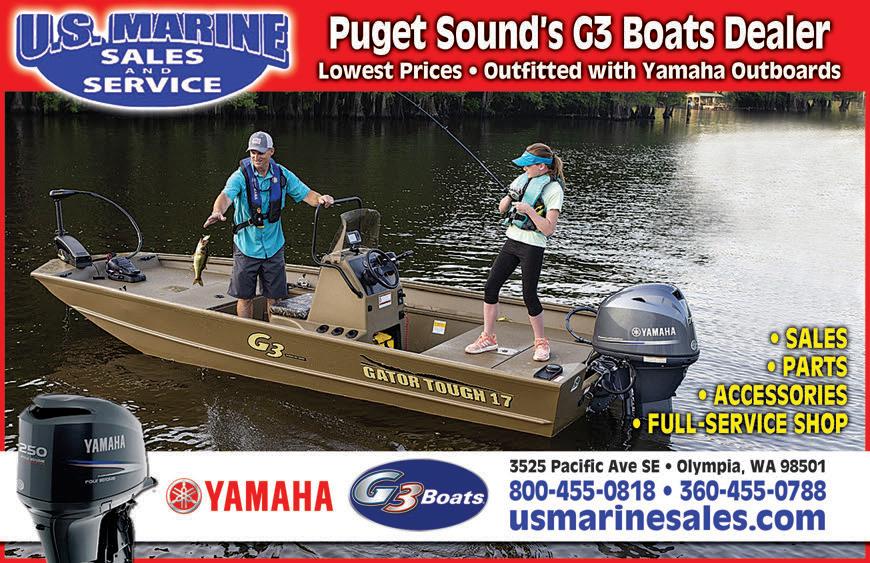
There is also debate about the best time to fish lighted lures. I have had some fellow night fishermen tell me that they never launch until after 9 or 10 p.m., while others start earlier or later. My experience is that you never know when the bite will start and end during the night. I have caught fish just after dusk on some evenings, an hour or two after sunset, and after 10 p.m. on yet other nights. When the bite starts, you never know how long it will last, so try to keep your lures in the water as much as possible.

On Idaho’s lower Clearwater, where I do most of my night fishing, you can purchase a two-rod

endorsement. On some nights when the bite is hot, I have had double hookups, which is a bit stressful if you happen to be fishing alone.
The Night Strike lures have two colors of blinking LED lights – red or green. I always start out fishing with at least one lure blinking red and at least one lure blinking green. For some reason, the steelhead sometimes prefer one color over the other on different nights. Once I get a strike, I put the lures with that color of blinking light on all the rods.
Fishing lighted lures at night is a fun and exciting way to catch steelhead and salmon. Now, with Night Strike Lighted Lures plugs on the market, you can give this fishing method a try. If you’re like me, once you experience the vicious strikes and fish leaping 5 feet out of the water trying to throw the hook in the dark, this method of fishing may become one of your favorites.
Good luck. NS
98 Northwest Sportsman SEPTEMBER 2023 | nwsportsmanmag.com



nwsportsmanmag.com | SEPTEMBER 2023 Northwest Sportsman 99

DESTINATION ALASKA

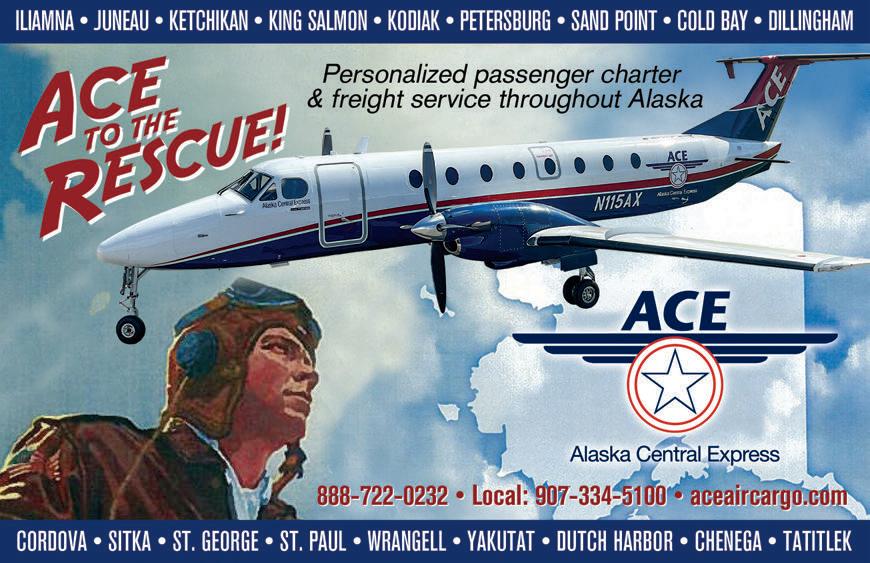


DESTINATION ALASKA
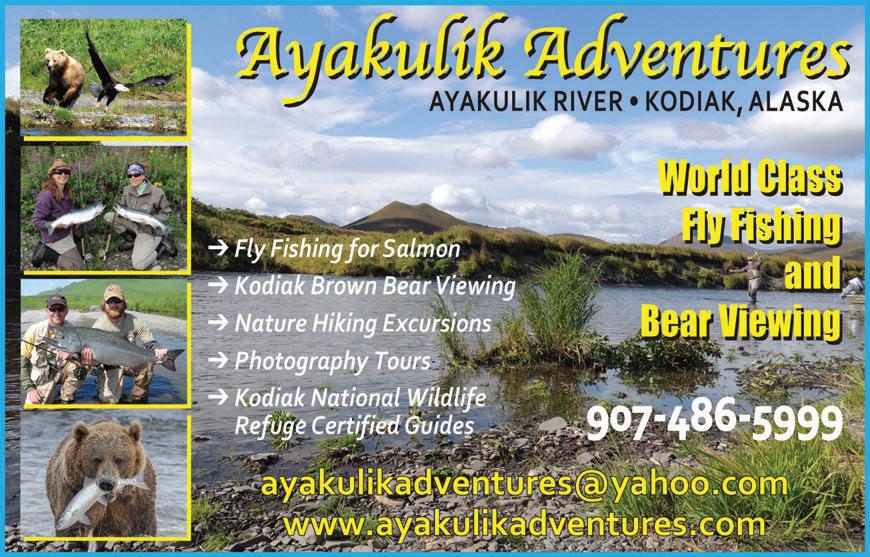




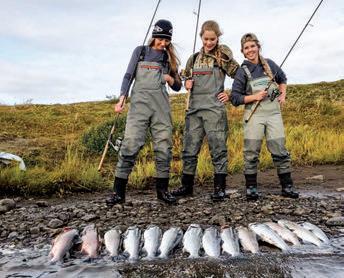






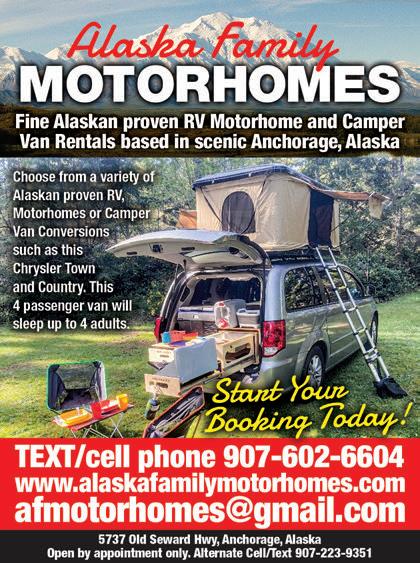

104 Northwest Sportsman AUGUST 2023 | nwsportsmanmag.com DESTINATION ALASKA DESTINATION ALASKA TO BOOK YOUR NEXT NINILCHIK FISHING CHARTER CALL REEL’EM INN AT 800-447-7335 cookinletcharters.com WE OFFER A COMPLETE ALASKAN FISHING PACKAGE • World-class halibut & salmon fishing • Clean and comfortable lodging • Full-service fish processing and packaging • RV park with full hook-ups Cook Inlet Fishing and Ninilchik Fishing Charters Located in Ninilchik on the Kenai Peninsula
Remote, Comfortable & Affordable
Our remote Alaskan fishing lodge is situated on the upper stretches of the beautiful Egegik River. You’ll watch some of Alaska’s most stunning sunrises, complete with a distant, active volcano. We are a fishing camp specializing in coho fishing, brown bear viewing, and flyout fishing adventures to even more remote destinations in the Last Frontier.
Coho Fishing The Egegik River
The Egegik River is touted by many experienced anglers as the best silver salmon stream in all of Alaska. Becharof Lodge On The Egegik River was the first fishing lodge to become established on the breathtaking Egegik River, and is less than a 5 minute boat ride from some of the best fishing holes on the entire river.
Now Booking for 2024 Coho Fishing Trips

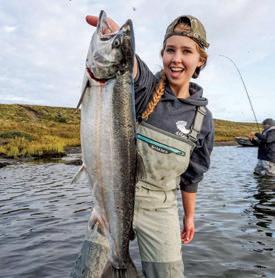

Included in your fishing trip:

• 5 days fishing/5 nights stay in camp
• Experienced, fully guided fishing.

• Comfortable cabins furnished with beds, cozy comforters & bedding.
• Home cooked meals, snacks, and nonalcoholic beverages.

• Transportation from the lodge to prime fishing holes on the Egegik River.

• Freezing and vacuum sealing of your fish, up to 50 lbs., per angler.

DESTINATION ALASKA
per person Includes round trip charter from King Salmon. Call for more details. becharoflodgefishing.com Book Your Trip Today! Mark Korpi: 503-741-1333 or 503 298 9686 George Joy: 360-562-7701 Email: becharoffishing@gmail.com
$4,850

The Blacktail Whisperer’s Words Of Wisdom
By MD Johnson
As many of you will remember from me having said it a handful of times, I’m originally from Ohio (28 years),
and then I spent 18 wonderful years in Iowa. Growing up and spending over four decades in the Midwest, I was raised on a diet of whitetail deer. Muzzleloaders, crossbows, shotguns with rifled barrels; the weaponry
would from time to time change, but the deer? Whitetails. All whitetails.
Then in 1993, I meet Julia Carol, who introduces me to Washington – razor clams, salmon fishing and blacktails. Learning curve?
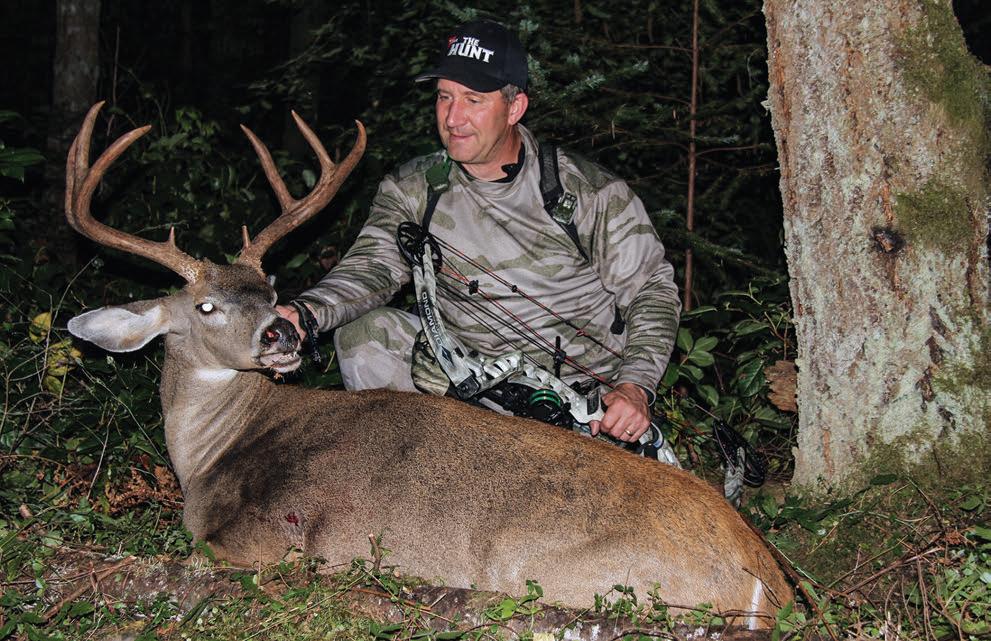
nwsportsmanmag.com | SEPTEMBER 2023 Northwest Sportsman 107 HUNTING
Western Oregon’s Scott Haugen literally wrote the book on how to hunt blacktail deer. (SCOTT HAUGEN)
Yes, the gray ghosts west of the Cascades actually do exist, and expert Scott Haugen shares how to hunt ’em.
As they say in Minnesota, “You betcha!” Out here, “here” being the Pacific Northwest and Southwest Washington specifically, there were no cut cornfields. No bean fields. No big stands of hardwoods where visibility, especially with snow on the ground, was measured in the hundreds of yards. Oh, no! Here, 6 feet is a long way, unless you’re sitting the edge of a clearcut. And then, should you actually see a buck and score a hit, getting to him is like walking a mile over the world’s largest pile of Lincoln Logs – with your feet wrapped in concertina wire.
“You don’t want to go in there,” my wife advised, watching me dive off the old logging road into over-myhead ferns and devil’s club. She was right, you know; I didn’t want to go in there.
But stubborn Slovak that I am, I’m trying to learn about these mammals y’all call blacktails. I read. I lurk on websites like Hunting-Washington. I watch the YouTube channels. Oh, there’s a lot of information circulating out there about blacktails, as there is about things like dragons and unicorns and the Bat Boy who lives in the New York City subway system.
Fortunately, though, and all joking aside, I do have access to folks like Scott Haugen. Most of you will recognize the name – Haugen – from any number of different outdoor venues: sportsmen’s show seminar speaker; outdoor photographer; full-time writer; accomplished dog trainer; and author of multiple books. Together with his equally as talented wife Tiffany, Haugen, a former science teacher in Alaska, makes his
home in Walterville, Oregon, from which he spends a vast majority of his time unraveling the mysteries provided by what many consider to be the most elusive big game animal in the nation, if not on the planet or universe, the blacktail deer.

I caught up with Haugen at his desk recently, and pinned the busy gentleman down long enough to get some of this thoughts on blacktails, blacktail hunting and if the beast is actually a real thing or a figment of hunters’ collective imaginations. OK, so I made that last one up, but what he has to say is most definitely worth listening to.
MD Johnson First rattle out of the box, Scott – are big blacktails really real, or are they mythical creatures born of the imagination? Do they really exist?
108 Northwest Sportsman SEPTEMBER 2023 | nwsportsmanmag.com HUNTING
“Think about taking the wiliest whitetail and throwing him in the brushiest, most rugged habitat in the country, and that’s your blacktail,” says Haugen about the game species he considers to be North America’s most difficult to consistently take trophy specimens. (SCOTT HAUGEN)

nwsportsmanmag.com | SEPTEMBER 2023 Northwest Sportsman 109
Scott Haugen [Laughs] You know, having hunted all over North America and many parts of the world while making my living at it, I think consistently killing a big blacktail buck is the toughest hunting in all of North America. Mountain goats and sheep – if you’re in shape, you’re going to get them. Big bear, if you’re patient and put in the hours, you’re going to get them. But think about taking the wiliest whitetail and throwing him in the brushiest, most rugged habitat in the country, and that’s your blacktail. There’s a lot of big bucks out there; they’re just hard to find.
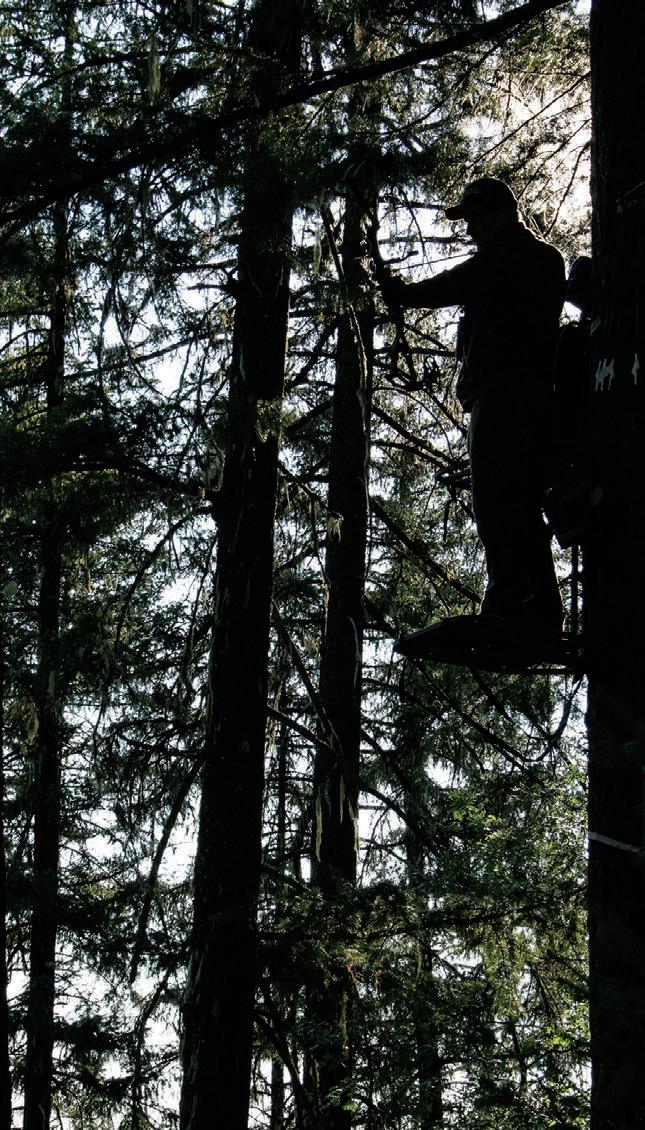
MDJ I see a handful of smaller bucks right here at the house, but it’s August. Come September, and they’re gone. Where do they go?
SH I’m scouting bucks in May, and come this time of year (mid-July) I’ve found the areas where I want to hunt. I’ll see more bucks in one day of scouting in July and August than I’ll see in an entire hunting season. Sometimes two or three seasons. They’re very visible when they’re in velvet, (as) the velvet tissue is very delicate and sensitive. They don’t want to damage their headgear. But once they shed that velvet, especially the big bucks, they’re going into the brush. The thick stuff. They’re hiding. And they’re trying to get as much food as they can as quickly as they can.
MDJ Halloween and late buck, and there’s the rut. But it’s September now. Is there a weakness like the rut that archers might take advantage of?
SH In September, (hunters have) three benefits. Number one, these bucks can still be patterned. So if you’re physically scouting or you’re running trail cameras, a lot of the bucks you’re seeing are going to be in that same area come September. But the kicker is as you said. You watch these bucks all summer long, and they strip their velvet and where’d they go?
Number two, and with the heat,
110 Northwest Sportsman SEPTEMBER 2023 | nwsportsmanmag.com HUNTING HUNTING
More blacktail hunters are beginning to use treestands and ground blinds. The former offers visibility over game trails, as well as a way to keep your scent above the extremely keen nostrils of deer. (SCOTT HAUGEN)

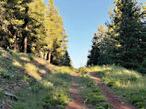
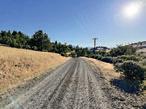

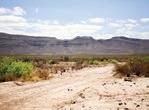
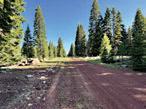
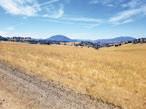

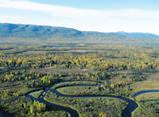


nwsportsmanmag.com | SEPTEMBER 2023 Northwest Sportsman 111 Selling Land in America for almost 40 years! Are you looking for CHEAP LAND FOR SALE as low as $748/acre? Or are you looking for a CHEAP MONTHLY PAYMENT as low as $67/month? We have Land For Sale in 45 counties throughout: Alaska, Arizona, California, Colorado, Florida, Georgia, Hawaii, Indiana, Kentucky, Minnesota, Mississippi, Missouri, Nevada, New Mexico, North Carolina, Oregon, Tennessee, and Texas Questions? Need Help? Visit BillyLand.com Or call 800-724-0551 Over 200 Online Auctions SIGN-UP TO BID & BUY!
HUNTING HUNTING
these bucks are either going to be laying low in the brush – river bottoms, foothills, creeks – or they’re going to go high to (take advantage) of moving thermals. So they’re kind of localized during the bedding period.
And third, and with all the rain we had this spring and the cool nights we’ve been having, a lot of the vegetation is (still) green. What that means explains why I’m not finding a lot of sign around water, whether that’s marshes or ponds or springs in the hills. I find a lot of animals up moving and feeding in the mornings. So I’m not going to be hunting a lot of water, then, this September; I’m hunting the food sources.
MDJ September archery, Scott. What’s one gear item you always have with you in the field? SH I always have a wind checker
with me. I’m not one for scentblocking stuff. These animals’ noses are just too good. And in September, you’re sweating and stinking, and there’s nothing in the world that’s going to contain your scent. That said, and if you’re hunting from a treestand or a ground blind and you want to spray down a little to knock down your scent, I’m all for that. Whatever gives you confidence. But if I’m going spot and stalk, I’m always checking the wind. The thermals are always shifting in September, and I’m waiting for that wind to stabilize. I might sit on a buck for two, three, four days until the wind is right.
One of the most underutilized tools by blacktail hunters – though more guys are using them but is still underutilized – is the treestand. I think the treestand gives

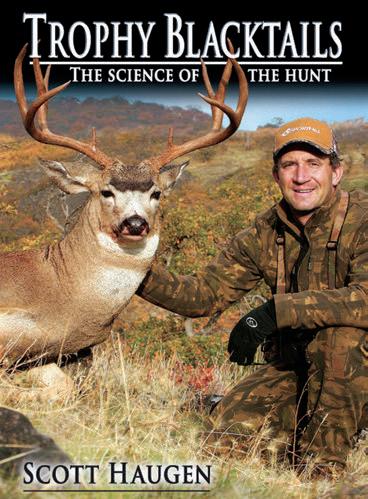
112 Northwest Sportsman SEPTEMBER 2023 | nwsportsmanmag.com
Haugen’s book, Trophy Blacktails: The Science of the Hunt, is available via scotthaugen.com. (SCOTT HAUGEN)

HUNTING HUNTING
you a lot of visibility, and remember, I said these (early) deer can be patterned. So find where they’re traveling, where they’re feeding, and hang a treestand. It’s going to offer you, again, that visibility, but one of the most important things is you’re getting your scent up off the ground. The wind travels in horizontal layers, just like the river, so the higher you can get, the better opportunity you have to get your scent off the ground.
MDJ You talk to a flat ton of blacktail hunters throughout the year. What’s the common denominator? What’s the most common mistake you hear of people making when they’re targeting blacktails?
SH Trying to stalk in on (these bucks) when the situation isn’t right. It’s dry and it’s too noisy. The wind is swirling too much. As the day heats up in September, a lot of these bucks will bed down multiple times. They’ll
move a little higher and a little higher to get that relief. So my favorite time to make a spot-and-stalk move on a buck is late morning, say, between 11 and 2 during the hottest part of the day. I just think a lot of people try to move in too early on them, and that can botch the deal. Too, I’ve taken a number of bucks during the early season in the evening when they’re moving from bedding areas down in elevation to feed. I may watch a buck all day, and then (decide) to set up a ground blind or treestand.
MDJ So it seems like a common denominator with all successful blacktail hunting is patience, yes?
SH September is like a chess game. You’re just trying to figure out what their next move is going to be, and you want to stay one or two steps ahead of them. And that takes time. It’s difficult. There have been times when I’ve hunted every day of the
early archery season and never got a shot at a buck because it never all came together. Or I’m trying to find a particular big buck. I pass on smaller bucks, and then the big one doesn’t come in. Every year is a learning experience.
IF YOU’RE LOOKING to take Big Blacktails 101 through 401 as the ultimate educational experience, snag a copy of Haugen’s book, Trophy Blacktails: The Science of the Hunt, by visiting his website, scotthaugen. com, and then sit down and read it cover to cover. Then, as I’m sure the author will tell you, get up out of your Barcalounger, lace up those comfortable hiking boots, grab your binoculars, and invest your time scouting. Maybe – and this is MD Johnson talking now – just maybe you’ll see that dark-antlered buck just before the close of legal shooting time … if, that is, they truly exist. NS

114 Northwest Sportsman SEPTEMBER 2023 | nwsportsmanmag.com

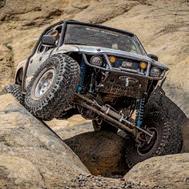
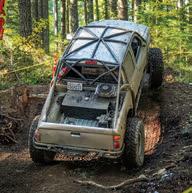




nwsportsmanmag.com | SEPTEMBER 2023 Northwest Sportsman 115 » Custom Fabrication » 4WD Service/ Repair » Custom Suspension » Lift Kits 206-580-5091 »outlaw-overland.com WHEN PROTECTION MATTERS MOST, LINE-X IT. BEDLINERS | ACCESSORIES PROTECTIVE COATINGS Washington Line-X Plus 3508 C St NE Auburn, WA 98002 (253) 735-1220 www.linexofauburn.com
THE PREMIER SPORTING GOODS STORE ON PRINCE OF WALES ISLAND
FOR ALL YOUR FISHING, HUNTING, AND CAMPING NEEDS! KNOWLEDGEABLE STAFF WILL LET YOU KNOW WHERE, WHEN AND HOW!

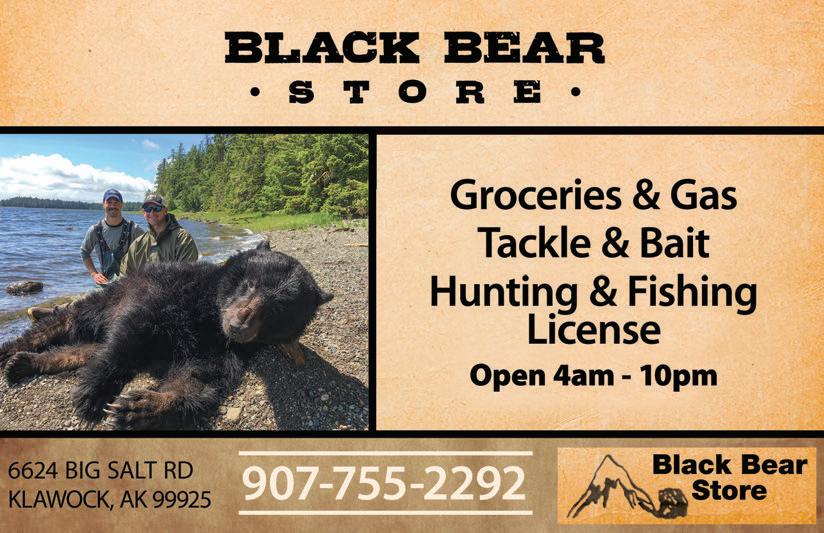
The Secret To A Successful Hunt? Make It Fun Again
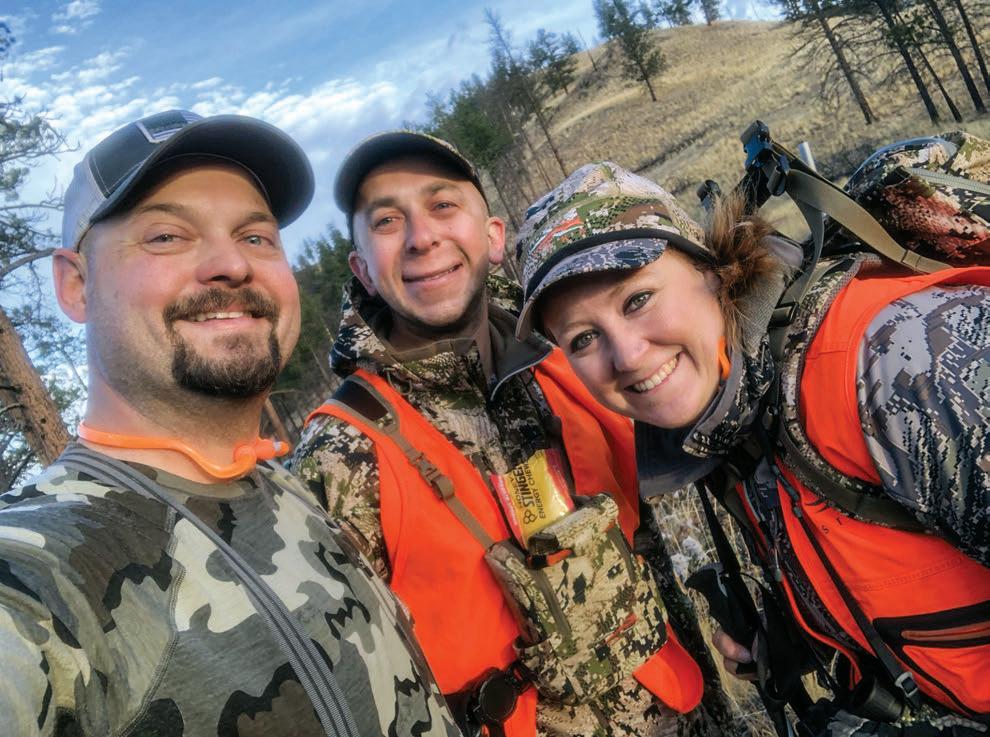
Ethat has not only helped shape me into a better hunter, but also a better person.
much better than myself and I asked tons of questions.
BECOMING A HUNTER
By Dave Anderson
ach year, as fall begins to approach, I like to find the time to look back and reminisce about things I have learned over the past 25 years of hunting. One memory from a previous hunt changed the entire way I approached hunting and I learned a valuable lesson

When I was young, I took hunting very seriously – probably too seriously. Success to me meant harvesting an animal. I should have told people I was off to harvest and not hunt. This attitude made me successful year in and year out, and still probably does today, at least to some extent. I read books, studied and surrounded myself with people who were
However, through this approach, I turned into a hunter who was not a ton of fun to be around. In addition, if things were not going right or in my favor during a hunt, I quickly became upset and had a bad attitude. Hunting with my family in Eastern Washington one time, my “bad attitude” began to rub family members the wrong way. It was quickly brought to my
nwsportsmanmag.com | SEPTEMBER 2023 Northwest Sportsman 117 COLUMN
Author Dave Anderson (left) admits that when he was younger he was a little too intense in his hunting, and it eventually rubbed family members the wrong way. Learning to relax and enjoy helping others and the camaraderie of the season made it fun again. (DAVE ANDERSON)
attention that I was no fun to be around. The worst part about it all was that the person I was making upset was someone I respected and loved very much. I had been so consumed by wanting to be successful that I wasn’t fun in the least.
This hunt and experience opened my eyes and changed my whole attitude and how I approach hunts. It occurred over a decade ago, but from that day forward, I learned the importance of needing to relax and make hunting fun again.

The funny thing was, once I started taking that approach, I found myself having more success by just adding in more laughs and not taking it as seriously. Oh, I’m still serious about the ultimate end goal, which has always been to have a successful harvest, but I definitely also focus on the fun aspects of each hunt. Focusing on having fun during a hunt has also helped to eliminate a lot of the stress that comes with success being the ultimate prize.
ONE OF THE ways I have made hunting fun again is by always trying to give opportunities to friends and family who have never hunted or had opportunities to be successful. I love teaching and surrounding myself with friends and family who are just getting into hunting, so I have always found it important to give those individuals the first crack at an animal ahead of myself. I will bat clean up afterwards if they miss.
There is a ton of joy I get out of seeing others be successful. I have also been on the other end of this scenario, hunting with someone who will do everything they can to get the first shot; that is not fun. I would rather hunt alone than be in that situation. I think this is one of the reasons why I like to help others get opportunities. To me, hunting is a team effort and not about an individual trying to hog all the chances.
IT CAN ALL start with how you begin your hunt. I always recommend getting there a day or two early to get set up. This takes away a ton of stress, especially if you are traveling a far distance or hunting a spot you have never been to. We are all very lucky and cursed to have onX maps. Let
118 Northwest Sportsman SEPTEMBER 2023 | nwsportsmanmag.com COLUMN
Getting to deer or elk camp a day or two early will provide time to explore the surrounding country, check on trailheads or seek out new ones, as well as do some scouting. (DAVE ANDERSON)

me explain. A lot of scouting can be done using onX or Basemap. These apps allow us to find an area to hunt so that we know exactly where to park and hike into. Having a day or two before season starts so as to check out areas you want to park at is always ideal.
The curse of these apps is that there are a lot of other hunters who can see how easy it is and you will start seeing more and more people in areas that you once called your honey holes. For this, I would always have a plan B, C and D. This is one thing that would infuriate me to no end – finding someone parked at the
trailhead ahead of me. One way around this is to get there earlier. Most days during the Washington deer season, I would be awake at 3 a.m. to drive 20 minutes. Doing so, 99.9 percent of the time I would be the first one there. Sometimes I would hike part way into my area I wanted to hunt, and other times I would ride it out a little closer to first light, especially if I thought I might walk past deer on the way in. In the end, it is public land hunting and if someone wants to park next to you and walk in on top of you, so be it. However, if you do get somewhere and there is already someone else parked at
the location you want to go, I would give them respect and drive to another spot or access point – your plans B-D – and post up. You never know; they may bump or push something out of that area to you.
WHEN HUNTING HIGH-PRESSURE areas, it is sometimes good to just post up for the day at a vantage point or pinch point where deer may be pushed. This requires a lot of patience, but it can pay off big time. You don’t have to hike further and push hard to be successful in some cases.
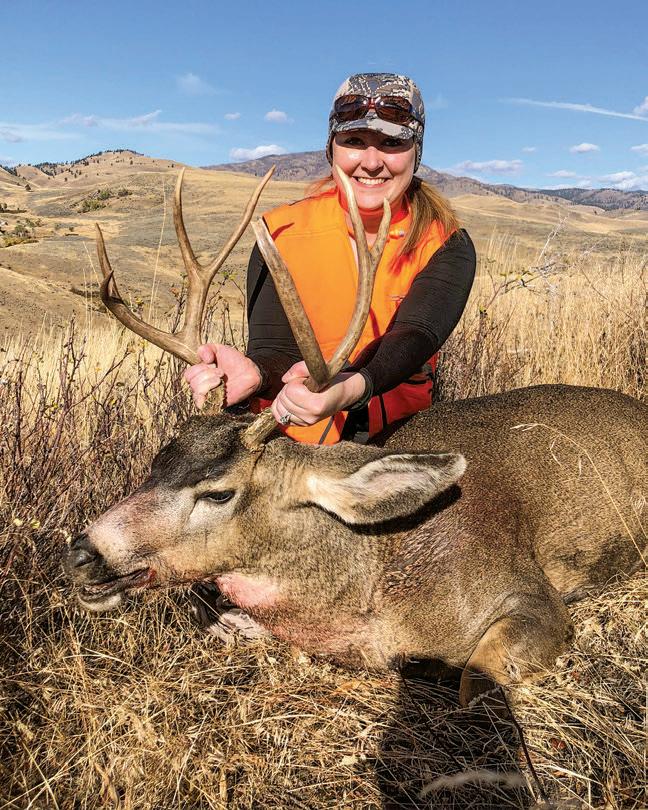
I would say this is especially true during general season hunts, where you seem to have more and more people. I call these areas pumpkin patches. We have all been there, where you walk through an area and suddenly you hear a gunshot. Most likely someone else was just walking along and a deer got pushed through. This can be a lot of fun if you have someone else along to help glass and keep an eye on your surroundings. For this reason alone, I would say that for opening day this would be a great tactic. Not so much, though, at the end of the season, when most hunters become so discouraged that they give up and head home. I have seen this happen a lot.
Always remember, it can happen just as fast on the last day of season as it can on the first day. I truly believe that there is a lot of skill in being successful, but sometimes there is a lot of luck. I don’t push as hard to be somewhere on opening day as I did in the past. The last few years that I hunted Washington, I would hunt the last half of the season to have more areas to myself. Yes, there was a lot of pressure several days beforehand, but I was just as successful hunting the back end of season as the beginning – and I had the mountains to myself in most cases.
In the end, I ultimately still want to be successful and provide my family with some of the best protein the great outdoors has to offer. However, by chilling out a bit and having more fun, my hunts have become more enjoyable and memorable. I also find that my senses have increased by not being so consumed by all the things that don’t go my way. It has helped me to be calmer and, in the end, made me more successful. NS
120 Northwest Sportsman SEPTEMBER 2023 | nwsportsmanmag.com COLUMN
Chilling out and having more fun has made for more memorable and enjoyable hunts for the author as well as his wife,
Kristina, here with a nice Eastern Washington mule deer. (DAVE ANDERSON)

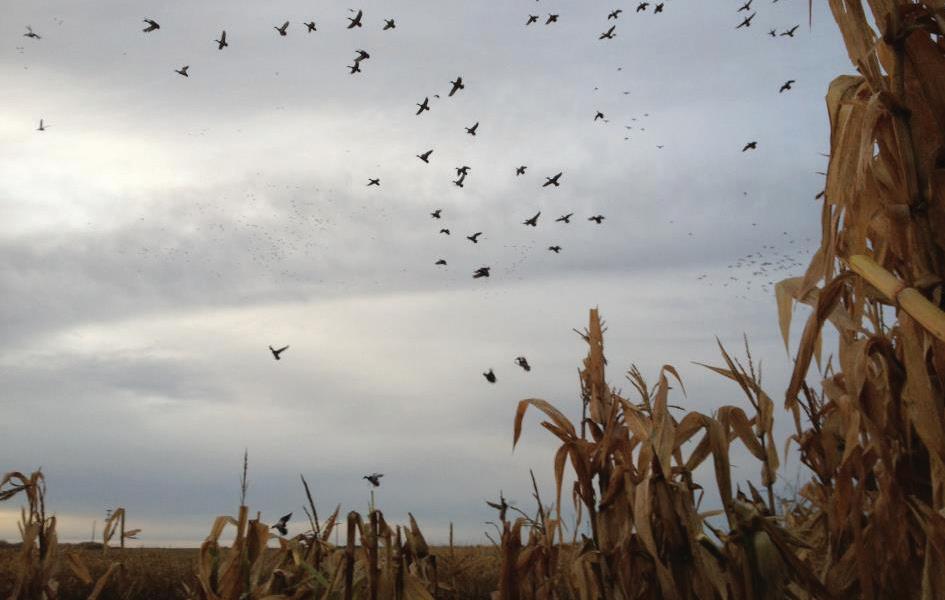
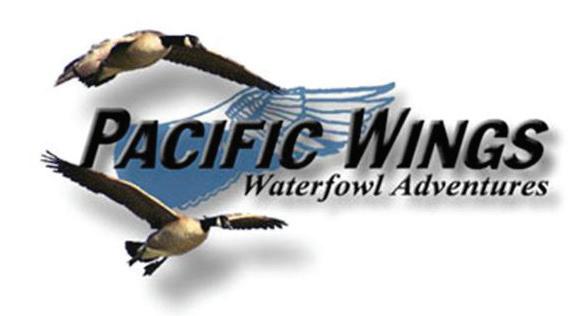

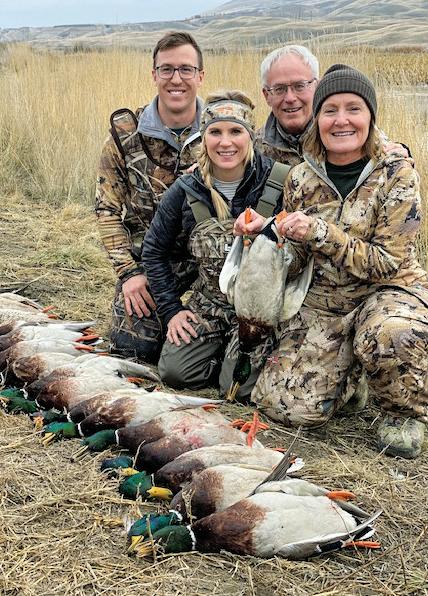





Also Available: Hunts in Saskatchewan, Canada! • Mallard Corn Pond Hunting — Total of 75 acres of flooded corn ponds for the 23-24 season in addition to our many other flooded ponds • Freeze Up No Problem! Aerators & Springs in Most Ponds E. Washington Tri-Cities • 509-967-2303 • pacific-wings.net See our videos on YouTube @PacificWingsHunting and Jay Goble Check Us Out On We normally average 6 ducks per person during a season
To The Fields!
By Troy Rodakowski
Igrew up hunting the edges of production fields in the Willamette Valley, where I shot my first birds at 10 years old. Those birds happened to be doves and I expanded my hunting to quail, pheasant and grouse as I grew older. Nowadays, I make sure to mark the openers of all four species on my calendar each season.


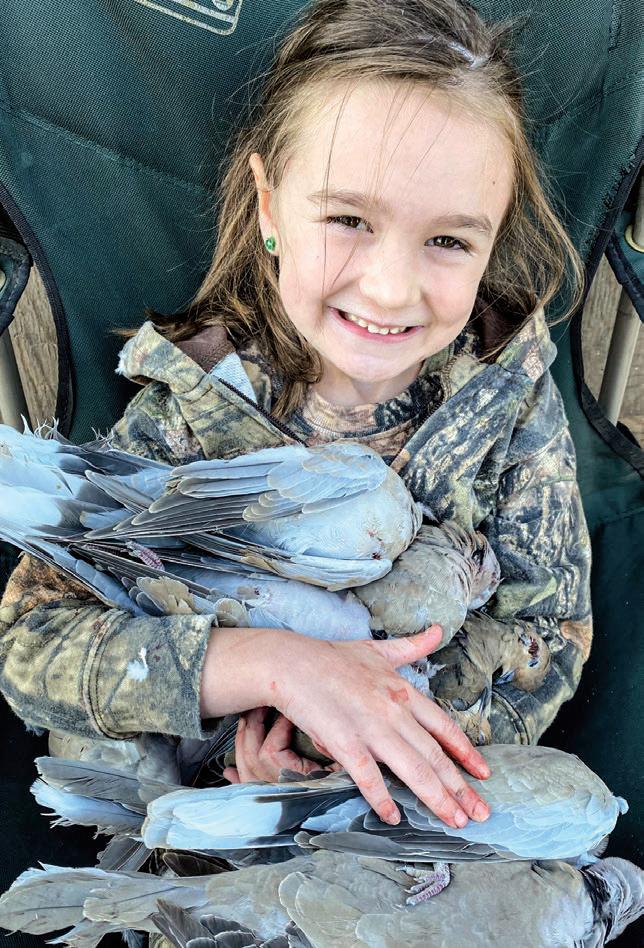
The mourning dove is the most abundant game bird in North America. Hunters harvest more than 20 million out of a US population estimated at nearly 350 million. Oftentimes there seem to be doves everywhere, especially as I drive through the Willamette Valley looking for promising places to hunt. Old wheat fields, ryegrass stubble, millet, sunflower and several other tantalizing seed crops are available here in the valley. I choose places where the birds are likely to come to feed just prior to roosting.
It’s best to start out near the river banks, where birds will go grab grit and water during the day. There are great public access points throughout the Willamette Valley to keep in mind. Several river locations border good agricultural ground, but I have found my best luck knocking on doors, as most landowners are more than happy to grant you access for dove hunting. Good roost trees are
nwsportsmanmag.com | SEPTEMBER 2023 Northwest Sportsman 123 HUNTING
Oregon’s fall bird hunting seasons begin to open up this month, and here are prospects and tips for doves, quail, bandtails and more.
Reese Rodakowski proudly shows off some mourning doves her dad Troy Rodakowski bagged in Oregon last season. The speedsters are one of the earliest upland options for hunters. (TROY RODAKOWSKI)
important to locate, as birds will sit near food sources and rest before their next meal.
Burned areas near agricultural land also hold good numbers of doves, as the birds will pick through the charred landscape in search of exposed seeds. Several wildlife areas across Oregon have good crops nearby or planted on them to attract doves. I have hunted several of them over the years.
Dove season is one of the earliest bird openers here in Oregon. The season runs September 1-30 and November 15-December 14 in Zone 1, which includes all counties west of
the Cascades as well as those along the Columbia in Northcentral Oregon. As for Zone 2, the balance of the state, hunting runs September 1-October 30. Remember that Eurasian collared doves can be hunted year-round, as they are an invasive species and also don’t count toward your mourning dove limit of 15 a day. Taking your time to fin good places to hunt prior to season is essential for success. Just a small amount of time scouting can make for an entire season of fun.
QUAIL, PHEASANT, GROUSE and chukar look to be in decent shape for
2023, with promising numbers due to favorable spring and summer conditions. A lack of water may influence some locations, but for the most part, birds have had it fairly good.
“The wet winter was a critical shot in the arm for drought-affected areas throughout Central and Eastern Oregon, but it will take more than one good winter to make up for several dry years,” says Mikal Cline, Oregon Department of Fish and Wildlife upland game bird coordinator.
Department surveys point to large broods of California quail and chukar this year and if survival is good going into fall, wingshooters may be in for a real treat.
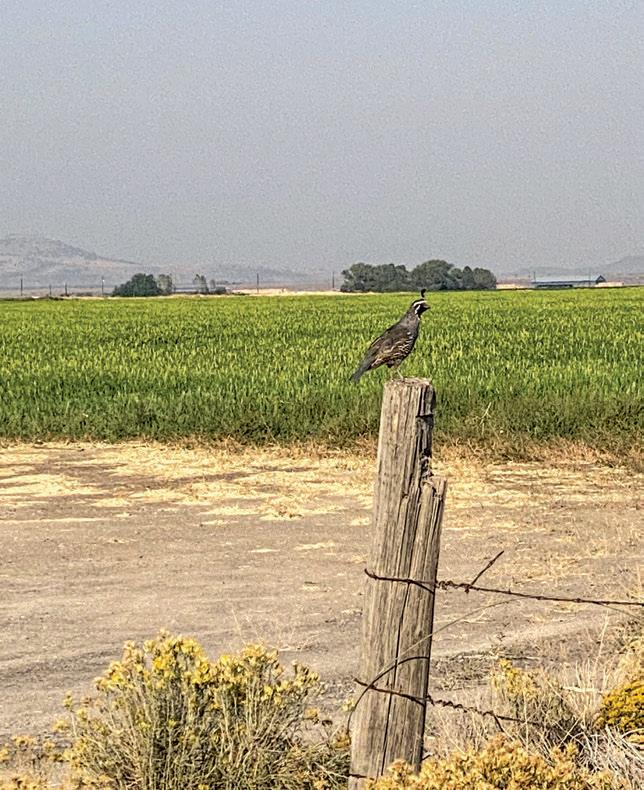
Pheasants were first introduced in the Willamette Valley in 1882 and while they thrived for a time, there are now very few wild birds. Primary factors are changing farming practices and the building of homes and businesses that have greatly diminished most of the quality habitat. Cereal grain production is cyclical and greatly affects the species’ ability to prosper throughout the valley too. Most hunting these days is for stocked birds at ODFW’s Denman, EE Wilson, Fern Ridge and Sauvie Island Wildlife Areas. Seasons begin this month and a Western Oregon fee pheasant permit is required (along with a hunting license and upland game bird validation).
Ringneck populations in the Columbia Basin and at Malheur National Wildlife Refuge are reported to be stable but also limited. This coming season I strongly believe that most of the birds will be found near water or in good cover that has access to water. Several hunters last fall reported seeing more wild birds on opening weekend than they had seen in recent previous seasons near Vale, Juntura and Ontario. Rooster pheasant and chukar seasons open on October 14 this year and run through the middle of December and end of January, depending on species and location.
124 Northwest Sportsman SEPTEMBER 2023 | nwsportsmanmag.com HUNTING
MOUNTAIN QUAIL ARE thriving in the Coast Range and throughout
State surveys found large broods of California quail this year “and if survival is good going into fall, wingshooters may be in for a real treat,” Rodakowski reports. Best bet is to work the edges of agricultural fields after receiving permission from landowners. (TROY RODAKOWSKI)
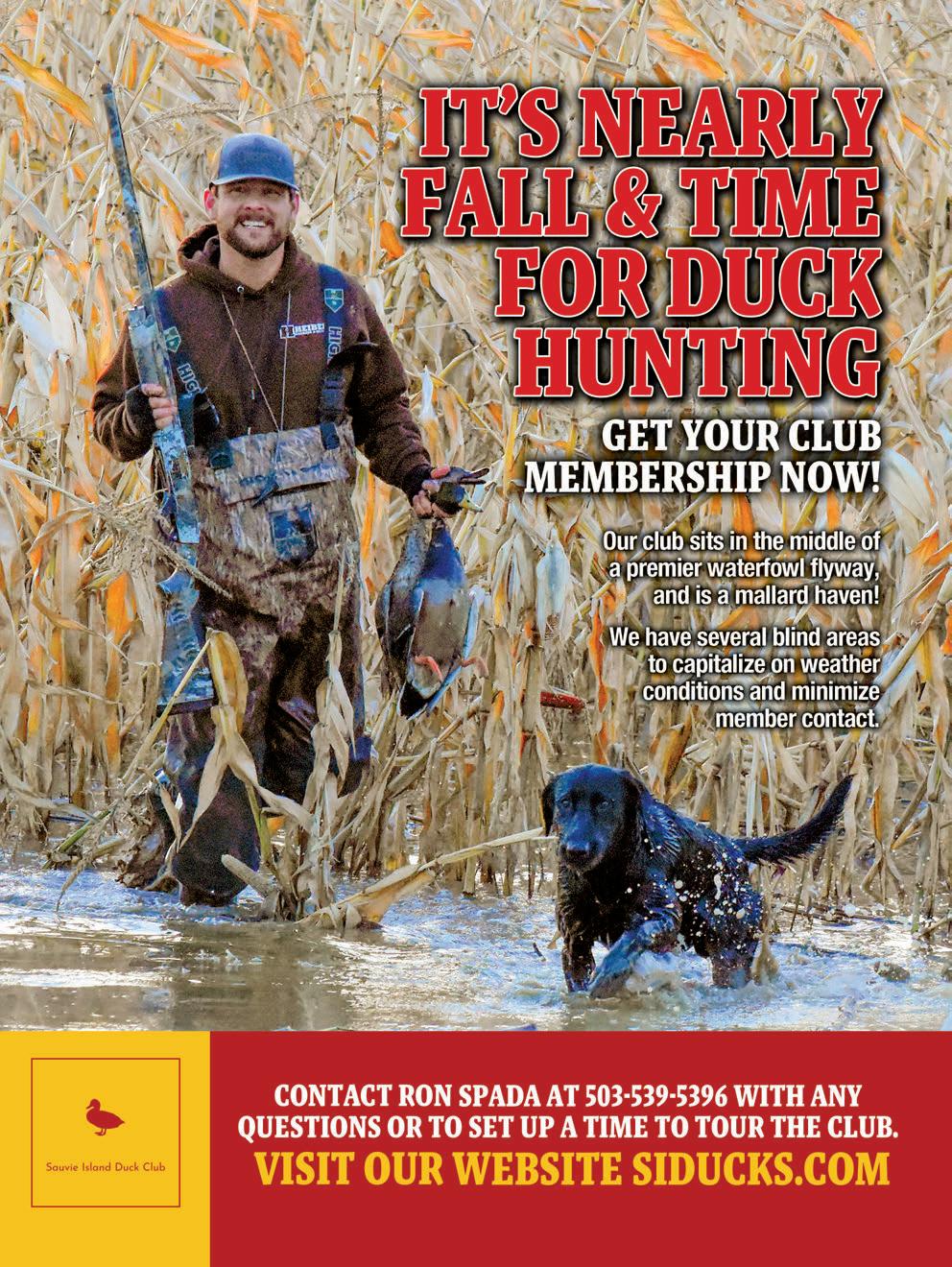
HUNTING HUNTING
Bandtail pigeons seem to be flourishing in Western Oregon and this month’s brief eight-day season is looking promising.
 (TROY RODAKOWSKI)
(TROY RODAKOWSKI)
Southwest Oregon, especially in habitat near and adjacent to the recent burns. Smaller burns that create fresh feed and cover are an excellent aide to bolster bird numbers.
Grouse have been reported to have nested two or more weeks later than normal this year, so the jury is still out on how well their broods survived the summer. Ruffed and blue grouse seasons open on September 1 and run through January 31. Valley and mountain quail seasons start on September 1 in Western Oregon and October 14 over east, and both run through the end of January.
Bandtail pigeons seem to be doing very well throughout the entire region. This past spring I saw more
of them than at any other time in the last 10 years. To hunt these birds requires a special permit and there’s a relatively short season (September 15-23) with a daily limit of two. Try coastal foothills near mineral water and small creeks with large coniferous trees adjacent to good sandbars. In these locations birds will find grit and small granular pebbles for calcium and digestion. But you can also find them feeding on berries and nuts throughout the Coast and Cascade Ranges.
YOU’LL FIND EXCELLENT bird habitat near small farming communities across Oregon, but if you aren’t into knocking on residents’ doors, check
out ODFW’s wildlife areas (myodfw. com/visit-odfw-wildlife-areas). Some provide decent dove and quail hunts.
Another friendly reminder is to make sure you take good care of your furry four-legged hunting partners by ensuring they have good flea and tick medications, footwear for the rugged rock country of Southeast Oregon, vests for cool weather days and clean water while in the field. I also like to carry a first aid kit with ointments and other necessities that my dog might need, such as a snake bite kit. On more than one occasion we have encountered snakes and barbed wire fences that weren’t too friendly.
Good luck, hunt safe and shoot straight this season. NS
126 Northwest Sportsman SEPTEMBER 2023 | nwsportsmanmag.com

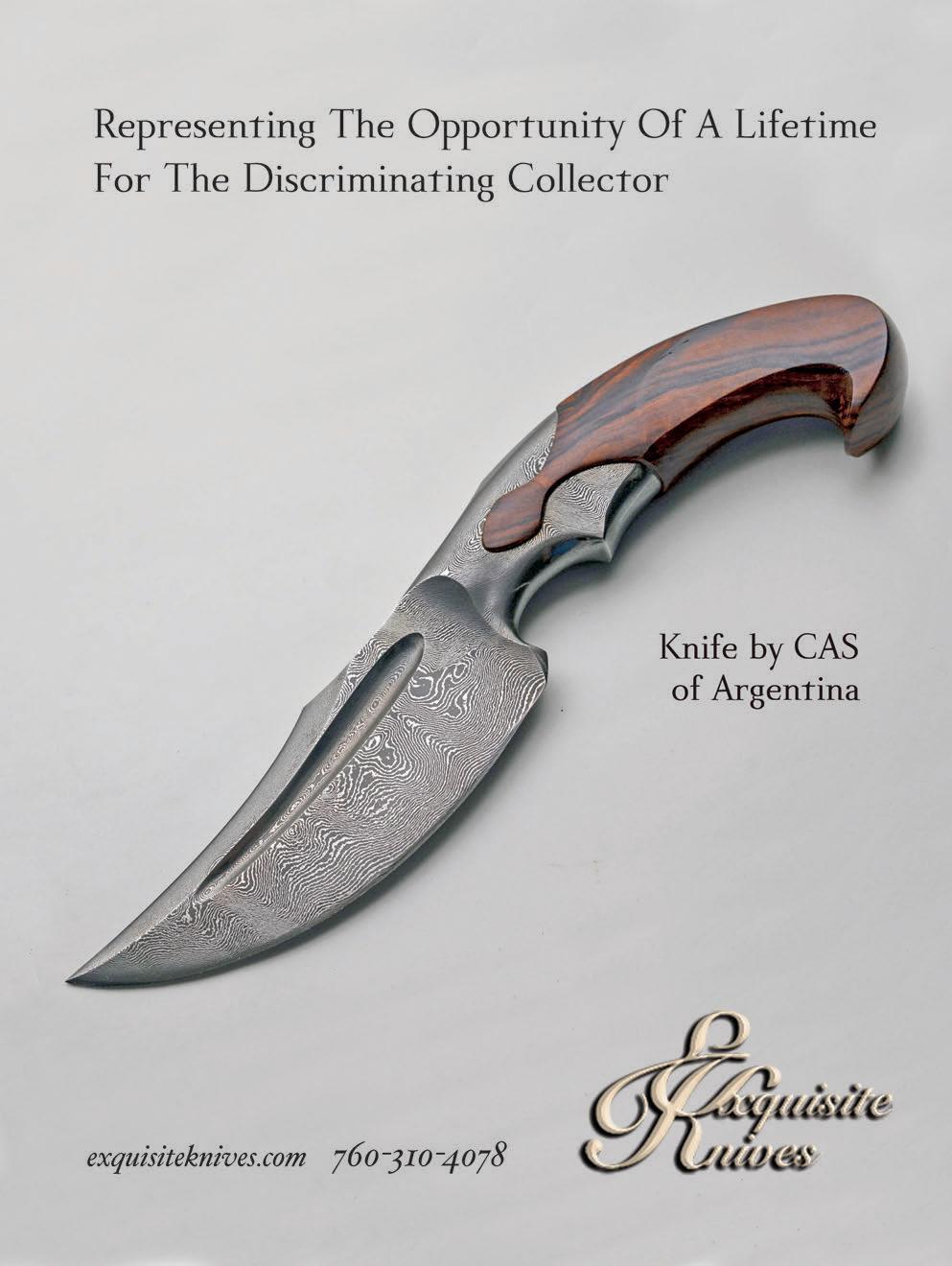
On Skunks, Seeds And E-bikes
lingered and when I called him, he didn’t come – which is not like him. Two minutes later he came barreling in, shaking his head, frothing at the mouth. He’d just taken a mouthful of skunk.
I returned, having found nothing. That’s when I saw Tiff standing over Kona, sleeves rolled up, hair back, bathing up. She didn’t hesitate. She jumped right in, took charge, and helped fix a bad situation.
GUN DOGGIN’ 101
By Scott Haugen
Ijust fell in love with my wife Tiffany, all over again. I’d let our dogs Echo and Kona out to go potty before bed. It was 11 p.m. We live in the country. Echo did her thing and came right in, as usual. Kona
I hollered to Tiff and she rushed to help. I had her hold Kona while I grabbed a shotgun and flashlight and went out looking for the skunk in the field. A few minutes later

An hour later we headed to bed, confident the quick reaction didn’t leave either one of us smelling. As for Kona, Tiff’s quick actions had him smelling much
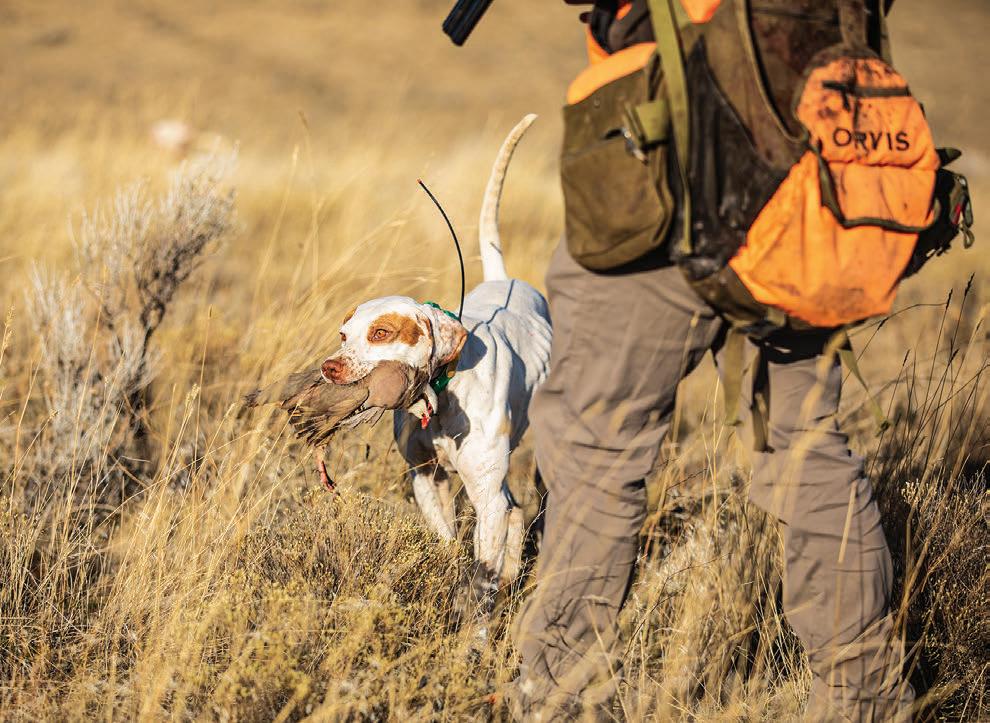
nwsportsmanmag.com | SEPTEMBER 2023 Northwest Sportsman 129 COLUMN
Hunting season is here, but there are on-the-job hazards for your fourlegged partners that you need to be prepared to handle. (SCOTT HAUGEN)
better than the last time he caught a skunk; he even slept in the house on this night.
Three hours later, we were headed to the airport. That’s where Tiff ran into a friend and told her she was headed to Europe to visit one of our sons.
“You might want to do something about that skunk smell,” the friend said.
Tiff and I were used to it and didn’t notice she had offensive skunk odors in her hair. And when I got home I found the skunk. Kona had killed it in the field and brought it to the house, which explained the strong, lingering odor.
TO WASH KONA, Tiff did two things. First, she poured some hydrogen peroxide into a bowl, made a paste with baking soda and rubbed it on Kona. I rinsed him off while Tiff then mixed 1 tablespoon of Dr. Bronner’s Pure-Castile Soap and 2 teaspoons of MinkSheen Pet Shampoo with a bit of warm water. She used a car washing mitt, which we had to later toss in the trash.
Attacking the skunk smell with this combination worked. The last time Kona
This foxtail grass seed burrowed between the dog’s toes, and that’s where the vet tried to grab it with forceps, with no luck. Then the seed festered out the top of the foot, thank goodness. Check your dog regularly –these seeds are no joke. (SCOTT

battled a skunk, it took two weeks before he could sleep in the house, and that’s because we were slow to treat it.
This time the odor faintly came back in Kona’s hair every few days for about three weeks, mainly after being outside in the heat, but it wasn’t bad. I only had to give him a bath two more times, and for that I
used warm water and Dawn dish soap.
I’ve heard of all sorts of remedies to help relieve skunk odor on dogs. Tomato juice hasn’t worked for us, and I’ve not had luck with commercial sprays. One hunting buddy swears by spraying a dog down with scent-blocking agent, like what big game hunters use to contain their scent. I picked

130 Northwest Sportsman SEPTEMBER 2023 | nwsportsmanmag.com COLUMN
HAUGEN)
The QuietKat electric bike has taken the author’s dog training to new levels. It’s also saved him valued time, and kept his dogs from waiting so long when setting blind training drills. (SCOTT HAUGEN)

nwsportsmanmag.com | SEPTEMBER 2023 Northwest Sportsman 131
up two bottles and have one ready at the house, the other in the truck, should there be a next time. The big key to knocking down skunk odors on your dog is having something ready so you can act fast.
AS I WRITE these words, Kona just went through another ordeal. This morning, I pulled a foxtail grass seed from his festered foot. It had been there 28 days, and he was three days away from having surgery to remove it. Two days ago my vet put Kona under and dug around with forceps for 45 minutes, trying to find the seed.
My vet said he was averaging one of these encounters a day, way above average. He said in all his years, it’s been the worst summer he’s ever seen for these terrible seeds.

“If you can’t get the seed out within five days, get to a vet,” he told me.
“Contrary to what many people believe, foxtail grass seeds do not dissolve in the body,” he added. “They keep digging and traveling, until they pop out or are
removed, surgically.”
If they travel into the heart or brain, these seeds can be deadly.
ON A POSITIVE note, I recently got a QuietKat electric bike. I’ve never owned an electric bike, and figured it would be the perfect tool to help me more efficiently cover ground when running trail cameras and to use on upcoming hunts this fall. I also wanted to use it in dog training. But what I didn’t expect was that my dogs would immediately love it.
The moment I hopped on the QuietKat, Echo and Kona wouldn’t leave my side. I rode down our driveway and 200 yards on a gravel road. Then I took the bike into a field, both dogs still running with me. It was like they were puppies with a new toy. They ran over 2 miles, fast, and it was one of their best sprint workouts ever. They slept hard after breakfast that morning.
Since then, I’ve routinely used the bike on morning and evening workouts with the dogs. Instantly, I saw that my jogging,
even riding my mountain bike alongside them, wasn’t pushing them like I should. Because of the QuietKat, both dogs will go into this hunting season in better shape than ever before.
I also used the bike to quickly and efficiently place bird wings in expansive fields. On the electric bike I could do it in two minutes; on foot it would take 15 minutes. This is way more efficient for my dogs, which sit waiting, out of sight.
I used the electric bike to set bumpers for ladder drills, and position bumper piles and a white bucket for sight training drills. The QuietKat has made my training much more efficient and my dogs don’t get bored. I can’t wait to keep building my training program around it, and hunt with it this fall. NS
Editor’s note: Scott Haugen is a full-time writer. See his basic puppy training videos and learn more about his many books at scotthaugen.com. Follow his adventures on Instagram and Facebook.
132 Northwest Sportsman SEPTEMBER 2023 | nwsportsmanmag.com COLUMN

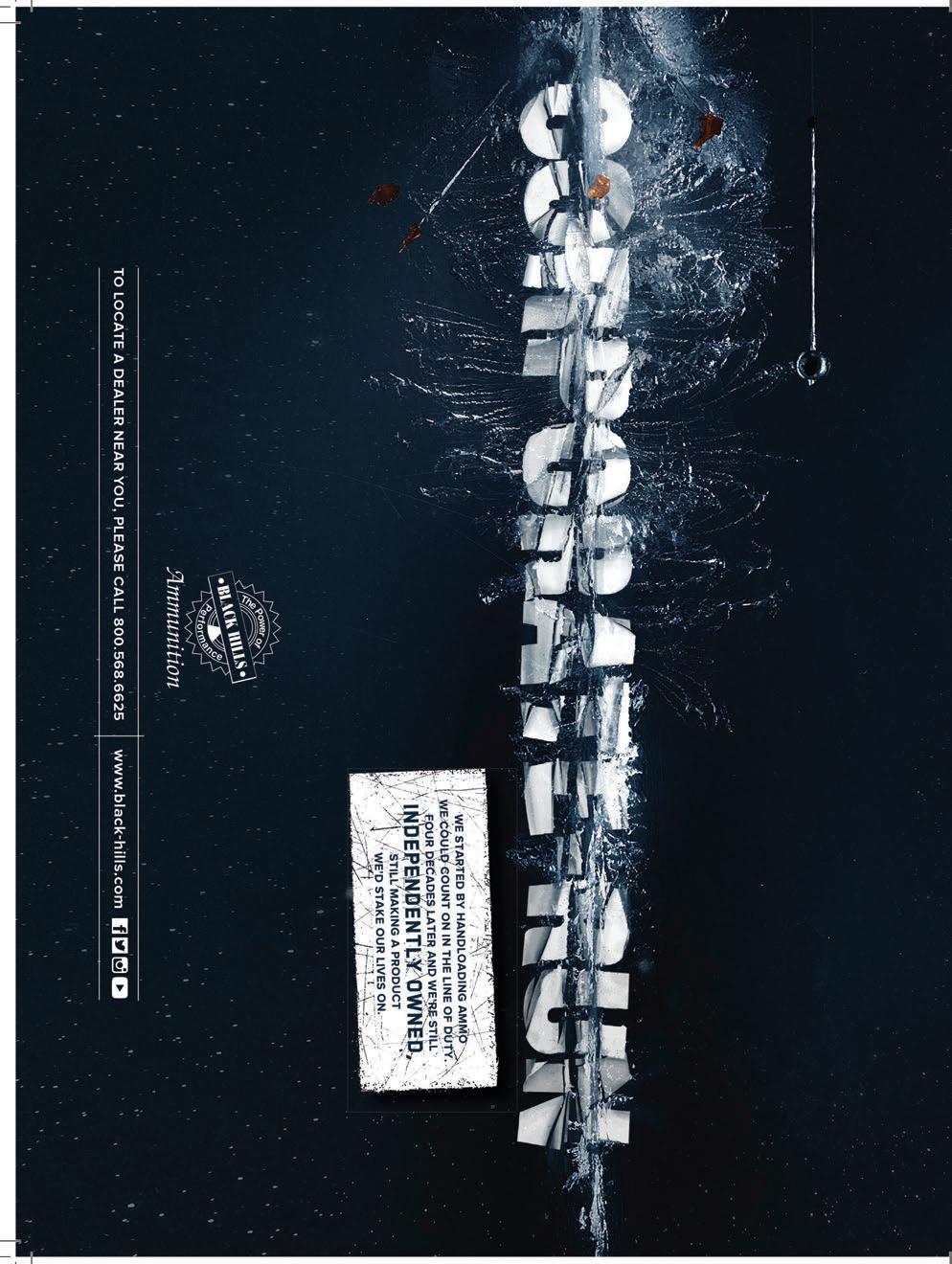
Double Up On Fall Turkey, Grouse
Overlapping upland bird seasons and habitats in Oregon and Washington make for great upland combo hunts.
By David F. Johnson
Suppose you are hunting turkeys this fall season in Eastern Oregon or Washington and a miracle occurs: Everything goes according to plan.

You set up before dawn, close to where turkeys are roosting but not so close they know you are there, and after the turkeys fly down and briefly but loudly discuss which of them is in charge, they feed directly toward your position. At 25 yards away, the bird you want separates himself from the flock, and stands still right where your shotgun sights are aligned. And you don’t miss.
By 7:30 your tagged turkey is cooling off in the back of your truck. Now you have a problem: What should you do for the rest of the day?
As tempting as it may be to go back home or to camp and take a nap, this is a rare situation in life where napping might not be your best option.
Lately, what I’ve started doing is spending much of the rest of my day hunting grouse. At some point I realized that many of the places I hunt fall turkeys include grouse habitat that either overlaps the turkey habitat or is just a short drive away. All you need to do is come prepared
nwsportsmanmag.com | SEPTEMBER 2023 Northwest Sportsman 135 HUNTING
There’s more to fall forest bird hunting than just grouse. A mix of ponderosas, which provide grubs and pine nuts, and open habitat with insects attract fall turkeys and give hunters places to set up. (STEVE JOHNSON)
to switch out your choke tube (or get out your upland shotgun), change out your turkey load for No. 7 1/2 shotshells, and you are set for a twofor-one combo bird hunt.
WHEN COMBO HUNTS ARE LEGAL
At the most basic level, you can hunt turkeys and grouse on the same fall hunting trip because there is considerable, though not total, overlap in grouse and turkey seasons in both Oregon and Washington.
In Washington, the general fall turkey season starts on September 1; statewide grouse season now starts on September 15. So you can’t hunt grouse early in turkey
season, but from midmonth on the seasons overlap. Washington has a variety of hunt units for turkeys, so it’s especially important to check the dates of the area you plan to hunt.
In Oregon, the general statewide turkey season starts September 1 in open units west of the Cascades and select areas of Northeast Oregon, concurrent with grouse season, while the rest of Central and Eastern Oregon’s open units open October 14, making for various overlaps.
Oregon divides its turkey tags into Western and Eastern Oregon hunts. The limit in the latter is one bird, so hunters who travel east of the Cascades to hunt and get their

turkey before their trip is done can particularly benefit from hunting upland birds before going home.
WHERE COMBO HUNTS WORK
Obviously, to hunt grouse and turkey on the same hunt, you have to be hunting in a place where the two species are close together. For most hunters, turkeys are likely the prime target, and though the biggest of the Northwest’s upland birds are widespread in both states, finding a place to hunt turkeys is typically more difficult than finding a place to hunt grouse. That’s primarily because turkeys are more likely to occupy low-elevation habitat than grouse do, and low-elevation properties are likely to be private. If turkeys are your main target and you have permission to hunt private land where there are turkeys, that opportunity likely outweighs considerations about whether there are grouse nearby.
However, grouse might be the most democratic of all game birds in the Northwest, because they are widespread on public land, notably on national forest ground. A good pair of boots is more important than money or access to private land in getting to the best grouse hunting.
Luckily, some of the best turkey hunting on both private and public land in both states is closer to grouse habitat than many hunters think. Examples include the Blue Mountains in Northeast Oregon and Southeast Washington, as well as the Okanogan, Kettle Range and Selkirks in Northeast Washington. Though grouse are harder for a dogless hunter to get close to in the heavy cover typical west of the spine of the Cascades, much of the Coast Range in Oregon holds grouse near areas where you find turkeys, and the same is true on the western flank of the Cascades in both states.
Statistics bear this out. In Washington’s 2022 fall season, the top hunter success rates were found in Population Management Unit 10 (Northeast) at 61 percent and PMU 15 (Southeast) at 53 percent.
136 Northwest Sportsman SEPTEMBER 2023 | nwsportsmanmag.com HUNTING
Author David Johnson killed this turkey last fall in Oregon’s Blue Mountains just after sunrise as it approached an opening to feed on insects. Hunters who get between feeding areas and roosting trees can have a quick hunt. (STEVE JOHNSON)

TIPS ON FALL TURKEYS
In my experience, hunters of fall turkeys face two challenges that make this time of year different from spring. In the spring, turkeys disperse into smaller groups – typically, a dominant tom and perhaps a couple of satellite toms will attempt to corral a small number of hens into a breeding group. These breeding groups tend to avoid joining each other. Gobblers don’t want other gobblers breeding “their” hens, and hens don’t want to fight other hens for “their” gobbler. The overall size of the group is limited by the number of hens the dominant
tom can breed.
That means that groups of turkeys are spread out across the landscape. Where turkeys have established themselves and there is good nesting habitat, there will be a group of turkeys around.
But in the fall, turkeys are not in breeding competition with each other. Large groups of hens and young-ofthe-year poults of both sexes will come together, as will smaller gangs of gobblers. The challenge for hunters is that there can be a lot of space between flocks of birds. You tend to find a bunch of birds, or none at all.
The second challenge for fall turkey hunters is that using calls to bring a large group of fall birds to you is difficult. It’s not natural for a big group of birds to move to a single bird. Because there is no breeding imperative, the larger group will be indifferent to whether a single bird joins them, so even if your calls convince the flock that you are a bird, they won’t come to you as they might in the spring.
On the other hand, fall turkey hunters do have some advantages. First, birds are mainly interested in feeding before winter. In particular, poults have to put on weight fast before it gets cold. Turkeys of both sexes and all ages focus a great deal of attention on places where there are insects to eat. Insects are a rich source of protein, which allows poults to grow fast and adults to beef up for winter. Particularly in the dry areas east of the Cascades, where plants grow dormant and less palatable in the fall after long, dry summers, insects like cold-stunned grasshoppers and crickets in the morning are an easyto-get food for turkeys.
The advantage to hunters is that these insects occupy open fields and hillsides. If you do some scouting and happen to come across a gang of 25 or 30 turkeys feeding in open country, they are not hard to see, and are likely to be in the open for large parts of the day.
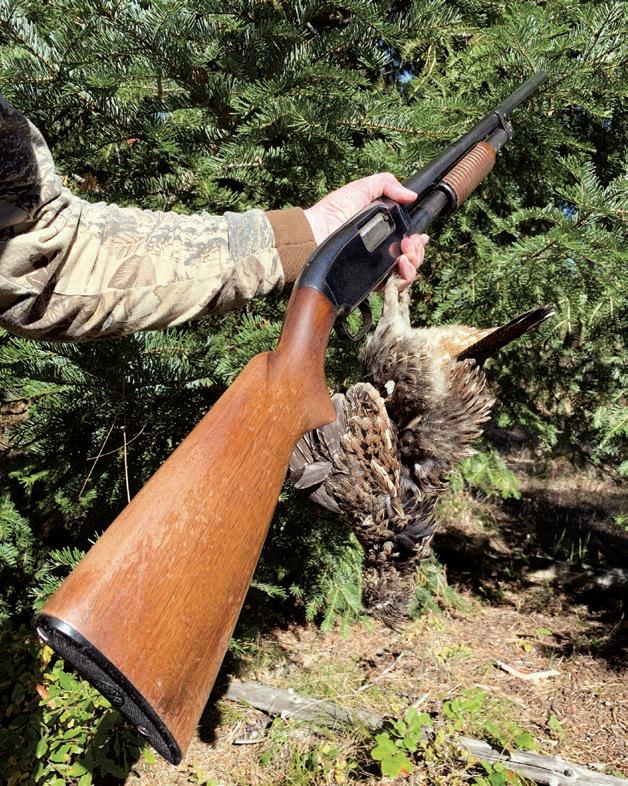
Furthermore, fall turkeys engage in stable movement patterns that can last for weeks. If nothing disturbs them, they will move from roosting trees to the same openings as long as the food holds out. If you figure out their movement pattern, you can find a place to ambush them.
Last fall my brother and I killed turkeys on successive days out of a large bunch of birds that were in this pattern in the Blue Mountains. The flock was roosting on one side of a dirt road in trees near a stock pond. They’d fly down, sort themselves out, get a drink and cross the road, moving through an open stand of ponderosas,
138 Northwest Sportsman SEPTEMBER 2023 | nwsportsmanmag.com HUNTING HUNTING
East of the Cascades, grouse need habitat with some moisture after a long summer and dry early fall. Green underbrush and fir trees (or, even better, aspens) are markers of soil with higher moisture than ponderosa-dominated areas. (STEVE JOHNSON)
CUMBERLAND’S NORTHWEST TRAPPERS SUPPLY




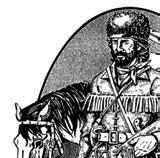


Hide Tan Formula has been used successfully by thousands of hunters and trappers across the U.S. and Canada. No more waiting several months for tanning. Now, you can tan your own hides and furs at home in less than a week, at a fraction of the normal cost. Our Hide Formula tans deer hides either hair-on for a rug or mount, or hair-off for buckskin leather. Tans all fur skins – muskrat, mink, beaver, fox, coyote, raccoon, squirrel, rabbit, etc. It also applies to bear, elk, moose, cowhide, sheep and even snakeskin. Hide Tan Formula is premixed and ready to use and produces a soft, supple Indian-style tan in five to seven days.
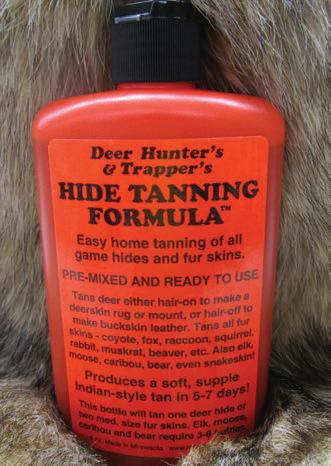
One 8-ounce bottle will tan one deer hide in two medium-sized fur skins. Bear, elk, moose and caribou require three to six bottles. Complete instructions are included. You’ll be amazed how easy it is!
Tanned hides and furs are great to decorate your home or camp and also to sell for extra income. Tanned hides and furs are in demand by black powder enthusiasts, American Indian traders, fly tyers, country trading posts and many crafters. Our products are proudly produced and bottled in the U.S. for over 20 years.
Available at Cumberland’s Northwest Trappers Supply in Owatonna, Minnesota.
Call (507) 451-7607 or email trapper@nwtrappers.com. nwtrappers.com
Cumberland’s Northwest Trappers Supply is your one-stop trapping supply headquarters, featuring one of the largest inventories in the U.S. We are factory direct distributors on all brands of traps and equipment which allows us to offer competitive prices. Give us a try. Our fast, friendly service will keep you coming back.
Over 50 Years Of Service To The Trap & Fur Industry
If you get in the area, visit our store!

nwsportsmanmag.com | SEPTEMBER 2023 Northwest Sportsman 139 Cumberland’s Northwest Trappers Supply, Inc. P.O. Box 408, Owatonna, Minnesota 55060 • (507) 451-7607 trapper@nwtrappers.com • www.nwtrappers.com
Request A Catalog Or Place An Order By Phone, Mail Or On Our Website “Trappers Hide Tanning Formula” in the bright orange bottle. Retail & dealer inquiries are welcome.
HUNTING HUNTING
scratching for pine nuts, and then go on into an open hillside to eat insects. They took the same path every day.
My brother had spotted them a week before the season opened as they crossed the road. Ten days later he set up in the ponderosas well off the road and killed his bird. Even after he shot one, the flock didn’t break its pattern. The next morning, I set up about 30 yards from where my brother took his bird and killed mine.
Scouting is important in any kind of hunting, but is especially important in fall turkey hunting. In the spring, a “run-and-gun” technique of
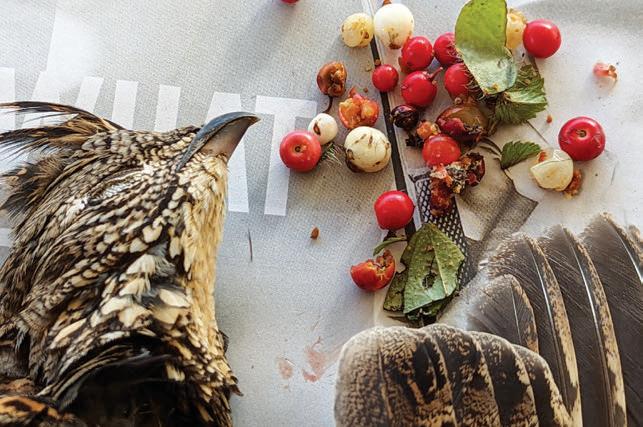
moving and calling to turkeys can be a reasonable plan of action even if you don’t know exactly where the turkeys are, because they’ll answer your calls and tell you where they are. They may not do this in the fall.
In large tracts of Forest Service land that have roads that aren’t closed to vehicles, driving those roads and looking is not very glamorous, but is the fastest way to cover ground. Unless you are lucky, though, you’ll probably end up getting out of your car to scout on foot. I’m happy to do this on closed roads or trails any place there aren’t a lot of hunters – I don’t
GROUSE AND GRITS
Grouse are widespread in areas that many upland birds, such as quail and pheasants, can’t make a living. They’re able to live in forested, higher elevation habitat in part because they eat a wide variety of food – leaves from bushes, almost all berries, flowering tree buds and even occasionally insects.
Grouse in the fall are often found near water or moisture-holding ground, in part because that’s where berries grow. Grouse basically eat anything that is a berry, including huckleberries, bearberries, snowberries, gooseberries, currants, elderberries and wild strawberries. They also eat the more tender leaves of most of these plants.
Grouse also like edge habitat because it produces a variety of food throughout the year. Winter is a lean time for grouse in snowy areas. They are adapted to eat the buds of flowering trees, including aspen, crabapple, alder and dogwood. Brush with lots of berries and some water nearby will hold grouse in the fall, but brush with those characteristics near aspen, alder or abandoned apple or crabapple trees that supply winter food will hold even more grouse. –DFJ
feel as compelled to get away from closed roads as I might if I were deer or elk hunting.
When a big gang of fall turkeys cross or use a dusty road or trail, the tracks are pretty obvious. If you find a turkey crossing with fresh tracks showing the turkeys are crossing both ways, you’re half way to your goal of getting a shot at them. The tracks are telling you that this spot is probably between the roosting trees and the feeding ground of this group of turkeys, and that once in the morning and once again in the early evening they cross here. If you can look around and determine the feeding area and the likely roosting area of the turkeys without alerting them to your presence, you are well on your way to tagging a bird.
In some areas you can slightly increase the odds of successful scouting if you are aware of potential water sources – especially in dry areas east of the Cascades. Turkeys don’t seem to spend much time around water, but they do need some, so in habitat where water is at a premium, areas with natural seeps, creeks, springs or stock ponds are worth checking out.
Turkeys don’t just use open areas because they are lazy. Turkeys have a different relationship to openings than, say, deer have. Deer are instinctively worried that when they are in the open, predators can see them. Turkeys are instinctively comforted by being in places where they can see for long distances. Their eyes are extremely good at picking out motion, and most predators that kill turkeys ambush them. Where turkeys can see a long way, they are protected against ambush predators. They will use not only open feeding areas during daylight, but travel on abandoned roads and open trails more readily than deer will.
The key is to cover some ground scouting to find the birds first. In the fall, it can be harder to find the birds in the first place than it is to kill one once you know where they are. East of the
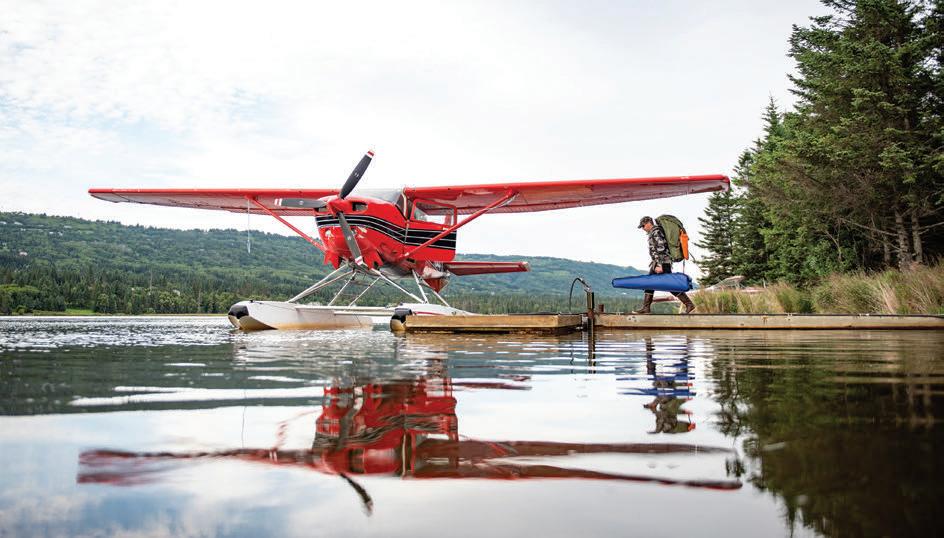
140 Northwest Sportsman SEPTEMBER 2023 | nwsportsmanmag.com
The crop contents of this ruffed grouse, taken in October in the Blue Mountains of Northeast Oregon, are representative of the food these birds are after. Snowberries and bearberries, along with leaves and other berries in season, are typical fair for grouse east of the Cascades in both Oregon and Washington. Look for green berry plants near water, and you’ll be in grouse habitat. (ERIK JOHNSON)



Choose quality Alaskan-made gear when planning your next adventure. GUN SCABBARD waterproof gun bag Homer, Alaska • 800-478-8364 • nomaralaska.com ATTENTION NORTHWEST SPORTSMAN READERS Mention this ad for a FREE carry strap with purchase of the gun scabbard. Shop nomaralaska.com to see all the gear we make for outdoor adventures.
Cascades is big country and a lot of it won’t be used by turkeys. Wear good boots and bring quality binoculars if you are scouting in open pine country.
TIPS ON GROUSE
Many deer and elk hunters stalking in the woods have had the experience of walking by grouse that do not seem very intelligent. They stand by the trail or sit on a limb and just look at you as you walk by. Sadly, they are much trickier when I have a shotgun in my hand than when I’m carrying a .30-06.
For dogless hunters, wandering aimlessly through mountains hoping to run into a grouse is not a highpercentage plan. You’ll want to focus your efforts on habitat that grouse like best.
Like turkeys, grouse don’t seem to need to drink a lot of water, but they are even more likely than turkeys to be associated with it in the fall,
especially in dry years. That’s because grouse really like to eat and take cover in brush that produces berries. Grouse also like the shelter that relatively heavy brush provides.
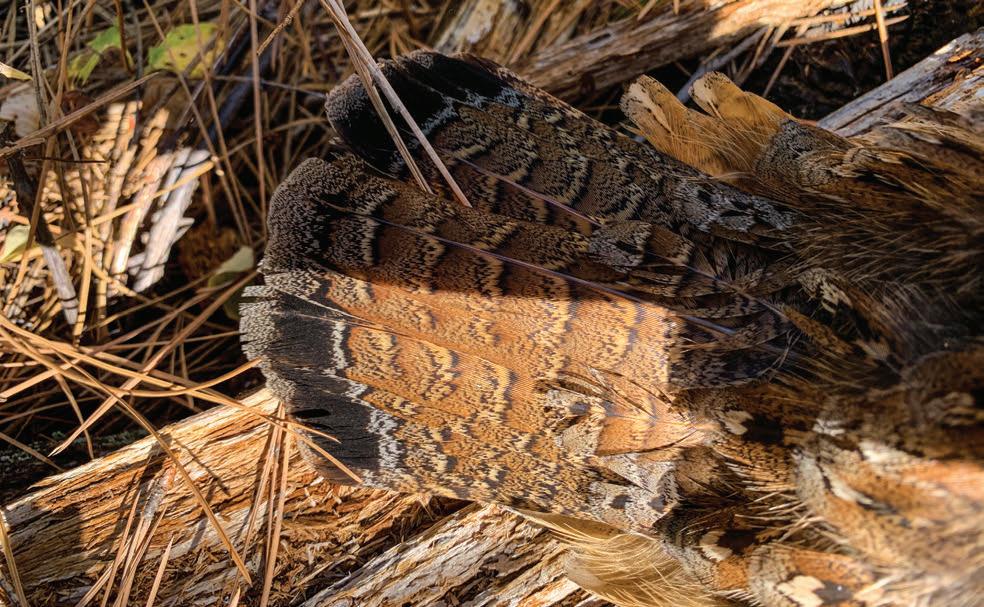
The water doesn’t have to be on the surface, but places where soil moisture supports berry-producing plants are good places to look. In habitats like the Blue Mountains, signs of higher soil moisture may include fir trees (as opposed to pine) and aspens. Very generally, ravines that are shaded and north-facing slopes are likely to hold moisture better.
If this sounds like you might end up in thick areas, you’re correct. Work slowly through them, stopping frequently. After each pause, be ready to shoot at your next step, as you are essentially your own pointing dog. Grouse will freeze when you are nearby, but when you pause near them, they get nervous and will often flush as soon as you resume
movement. Try to pause in places where, if a bird does flush, you’d have at least some opening to shoot at him. Grouse are weirdly good at flushing explosively about 10 seconds after you start thinking there are no grouse within a mile of you and that a grilled hamburger would be a good thing to have for supper tonight. Stay focused.
Hunters who have spent some time in the spring in the same area have an advantage. Male grouse drum in the spring to attract mates and establish their territory. They tend to set up in the best grouse habitat they can find. Grouse are also homebodies. A grouse in October is quite possibly within a couple hundred yards of where it was drumming last spring. Anywhere you’ve seen grouse before, whether while you were spring turkey hunting, big game hunting earlier in the fall, trout fishing in the summer, or turkey scouting yesterday is a good area to start your search. NS
142 Northwest Sportsman SEPTEMBER 2023 | nwsportsmanmag.com
HUNTING HUNTING
There are two predominate “color phases” with Northwest ruffed grouse, gray and red. Color phases show up most clearly in the tail. This female, from the Blue Mountains, is a red-phase bird. (DAVID JOHNSON)


nwsportsmanmag.com | SEPTEMBER 2023 Northwest Sportsman 143
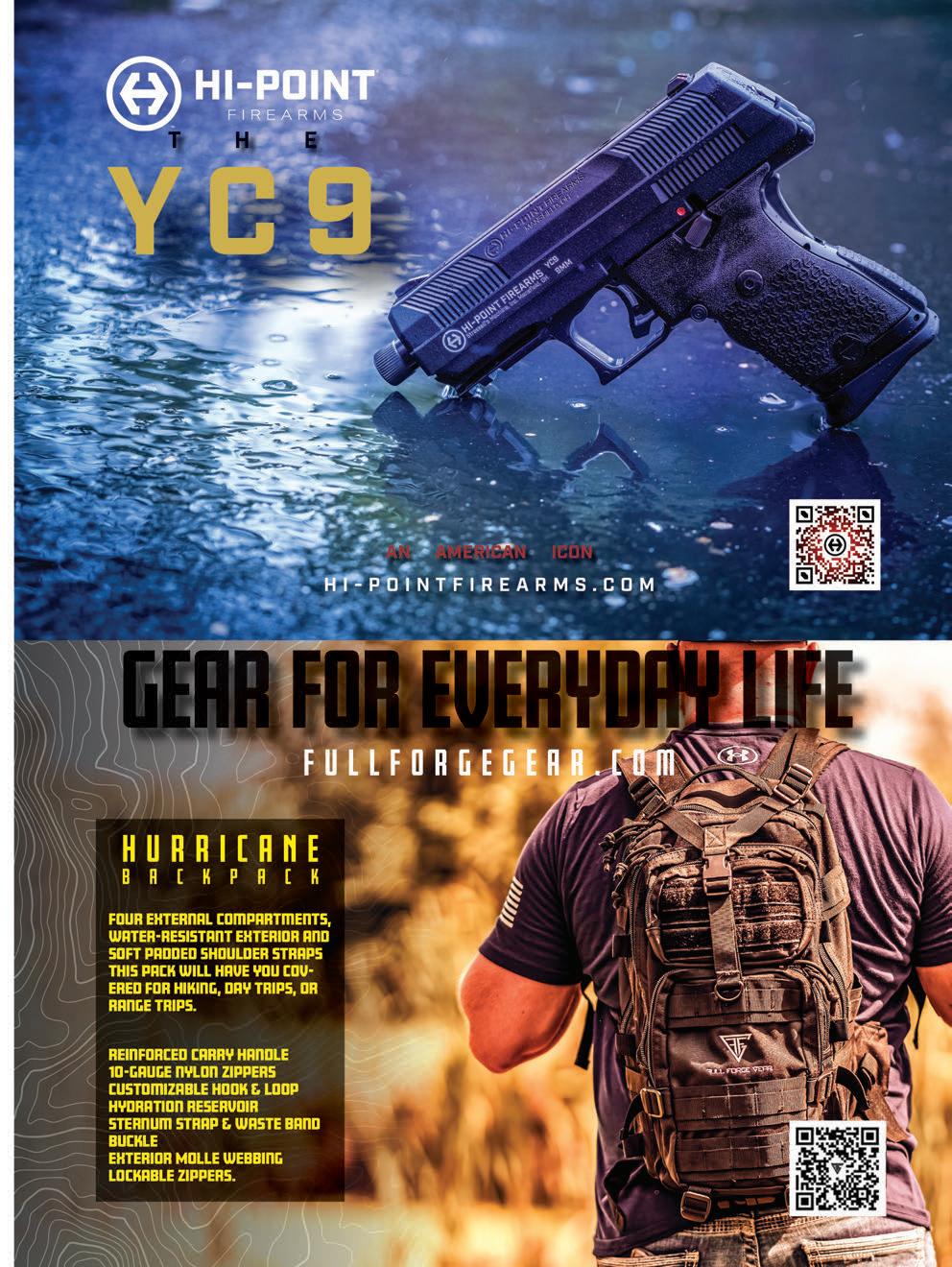
Grouse Season Is Upon Us
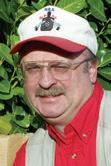
ON TARGET
By Dave Workman
If you’re an Evergreen State grouse hunter, the best odds of putting thunder chickens in the cooler beginning this month and into the fall and early winter will be found in the Eastside’s northern tier.
According to the Washington Department of Fish & Wildlife, “The best forest grouse hunting is found in the northeastern and north-central part of the state. Okanogan County led the way in grouse harvests over the past five years, with hunters taking more than 14,600 grouse a year. Stevens County was second at 13,300, followed by Ferry County at 8,300, Pend Oreille County at 5,400, and Western Washington’s Grays Harbor County at nearly 5,300.”

I’d call that useful information and I’ll be heading north for sure sometime this fall, maybe for the Friday, September 15 opener to make it a three-day weekend. I’ve shot grouse in Okanogan and Stevens Counties before and loved it.
I’ve also killed some big grouse in Chelan County north of Leavenworth, and in neighboring Kittitas County on Teanaway Ridge, on the ridges around Liberty and on South Cle Elum Ridge. But the Okanogan beckons, and I can’t say “no” to the country around the Little Pend Oreille Lakes east of Colville either.
Once again this year, the Fish & Wildlife Commission has set the opener back from Labor Day weekend – many believe this is more in the interest of preventing conflicts between hunters and other recreationists, rather than just to help improve the hen population – and they’ve added the first 15 days of January as a consolation, which
nwsportsmanmag.com | SEPTEMBER 2023 Northwest Sportsman 145
COLUMN
Author Dave Workman has plugged his share of grouse over the years, including this fat specimen. He used a 20-gauge Franchi over-and-under and No. 6s in Washington’s Central Cascades. (DAVE WORKMAN)
may be an opportunity only on paper, since I cannot recall ever having seen grouse in the woods that time of year.
FAVORITE LOAD(S)
In preparation for this month’s column, I cheated a little by going to the HuntingWashington forum and asking point blank for other members to talk about their preferred hunting loads. Several folks were very helpful.
One fellow offered strategy as well as simple shot size information: “Some variables go into (my) decision. Choke, gauge, type of gun, and type of dog I am hunting behind. I like 7½ for quail and dove, No. 6 for grouse and chukar. I will stack loads based on where I am hunting; 7½ for the first shot and something larger for the second shot.” (Emphasis added.)
This is very useful information for a guy like me because I hunt with a double-barrel, either a side-by-side or an
over-and-under. Of course, folks using pump guns or semiautos can always load with the No. 6 to be the second shot into the chamber.
As an aside, one of those side-by-side smoothbores is a vintage Fox 12-gauge I inherited when a dear friend of mine passed some years ago. Once way back in the last century, we were hunting heavy brush and timber southeast of Ashford, near Mt. Rainier, when a big blue grouse exploded from cover and he blasted it – literally over my head. The brush was so thick he didn’t see me (I was slightly downhill) and the conked bird landed almost at my feet. When he passed away, he must have figured I deserved that shotgun.
Another hunter revealed, “Usually use 7½ through a modified choke. Chukar, I have run 7½ full choke because they get up and go so fast. I want to drop them before they fly across to the other side of the canyon.”
I like this guy’s reasoning!
After mentioning to the group about my experiences shooting bismuth (it worked really well!), a fellow wingshooter commented, “I’m a huge fan of copperplated bismuth! I run No. 5 copper-plated bismuth mainly because I was able to get a case of it during Covid and it was one of the only available options. I will never run steel again!”
He was followed by a gent who reminded me of my long-lost youth: “Always been a No. 6 myself. I think it was always called rabbit/squirrel/quail load. The old Winchester box. Or maybe it was rabbit/squirrel/pheasant load.”
I recall those old boxes, and I remember hitting the local gun shop every August to purchase a box for my old 16-gauge singleshot H&R shotgun, and later, 12-gauge shells after purchasing a very slightly used S/S Beretta at the old Chet Paulson gun shop on Fawcett Avenue in Tacoma.

146 Northwest Sportsman SEPTEMBER 2023 | nwsportsmanmag.com COLUMN
Workman may haul out his cherished Fox 12-gauge double this month for another crack at thunder chickens. (DAVE WORKMAN)


nwsportsmanmag.com | SEPTEMBER 2023 Northwest Sportsman 147
Yet another forum member noted he had “always been a big fan of No. 6 for grouse and pheasant in the 12-gauge and 20-gauge. I have too many issues with No. 6 and No. 7½ on grouse with the .410, so I only shoot No. 4 for the .410. When I hunted quail, I used No. 7½ religiously for them.”

Interesting observations, since I have also hunted grouse with my little .410 Stoeger double, using 3-inch No. 6 or 7½ loads. That S/S smoothbore is more challenging than a 28-gauge, and it has conked grouse on more than one occasion. It was purchased on something of an impulse. I had always wanted a .410 double as a kid, so when the opportunity came up to buy one, I grabbed it.
Other participants in the discussion revealed preferences for 2¾-inch No. 4s for pheasants, Huns and grouse, while quail and doves merit 2¾-inch No. 7s, all fired through a full choke. Fair enough, as I’ve killed a fair number of fool hens using guns with a full choke. I’ve got a Mossberg 500 pump gun in 12-gauge with a 20-inch vent rib barrel in which I normally have a full choke installed, though I keep the modified choke handy in the event I want

to swap out for changing conditions.
Long story short, the preference among upland hunters appears to be No. 6 or 7½ for grouse, with some folks opting for No. 5.
For me, it depends on the bird. If I’m hunting the lowlands for ruffed/ forest grouse, I might opt for 7½, but my preference is for No. 6, which is also my first choice for hunting the bigger blue (sooty or dusky, if you prefer) grouse found in the higher elevations where I prefer to hunt the early season.
RIFLES, PISTOLS ALSO LEGAL
In Washington, as in most other Western states, it is legal to shoot grouse with a pistol, and the .22-caliber rifle is also a favorite of many grouse gunners.
While the purist wingshooters who own good hunting dogs tend to sneer at “ground swatting,” I’ve found that grouse plugged with a .22-caliber 40- or 36-grain solid or hollowpoint bullet tend to be just as dead, and they taste just as good.
There is also no concern at dinnertime about biting into a piece of shot at the table.
Back in July, I started practicing with my .22 semiauto, which always goes
along on my grouse forays. I also pack it along during deer and elk season in the event I encounter a fat hooter in the trail. There really is no finer meal in camp than fresh-killed grouse with some fried potatoes and/or maybe some rice, or even baked beans. (This is where a cast iron skillet warmed slowly on the camp stove really earns its keep!)
The pistol is not my primary choice for grouse, of course. I enjoy tramping around with either my 12- or 20-gauge smoothbore, especially on a mild September morning. But when the opportunity arises, the pistol comes out.
Concentrate on areas with good cover. Ruffed grouse like vine maple, alder and conifers, and they can be found in the lower elevations along creek bottoms, and in areas of mixed timber and clearcuts. I’ve found them mornings and evenings hanging around old gravel roads, picking up pea gravel.
In the higher elevations, look for blues in the conifers, along old gravel roads, around berry fields and sometimes where there are culverts running under national forest roads, and keep this in mind: If they fly, usually it’s not very far. They may roost
148 Northwest Sportsman SEPTEMBER 2023 | nwsportsmanmag.com COLUMN
Ruffie and blue busters all – from left, a 3-inch No. 7½ for the .410 bore, a 2¾-inch No. 6 in 20-gauge and a 2¾-inch No. 5 in 12-gauge. (DAVE WORKMAN)
Either lead (left) or bismuth (right) are good choices for high country hooters and Workman has hunted, and scored, with both types of shotshells. (DAVE WORKMAN)


nwsportsmanmag.com | SEPTEMBER 2023 Northwest Sportsman 149
on a tree limb, so keep an eye peeled.
I have personally encountered sizeable groups of blue grouse in old logging areas near culverts where there is water present, sometimes with as many as five or six birds in the bunch.
Be sure to take photos of your success in the field and send them to editor Andy Walgamott here at Northwest Sportsman (awalgamott@media-inc.com). Include such details as location, date, type of firearm (if it’s not in the photo), shot size and even the brand of ammunition. Always smile for the camera, hold the birds up about shoulder level and on very sunny days when you’re wearing a cap, use a fill flash.

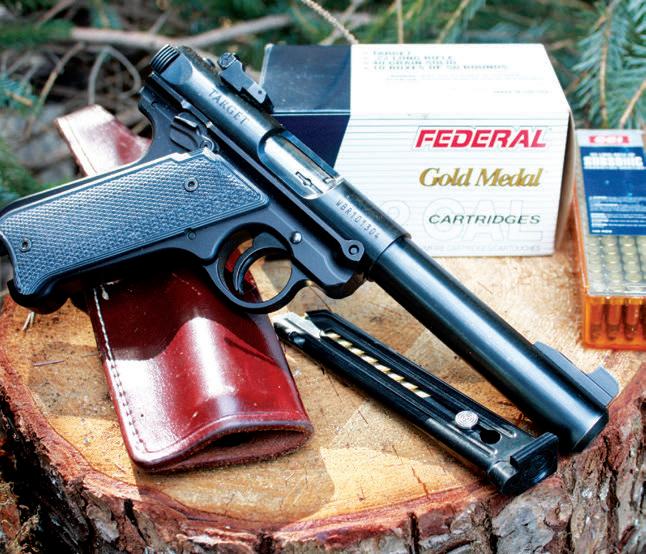
Good luck, stay safe and shoot straight! NS
Correction: In last month’s column, the misprint gremlins were at work when author Dave Workman mentioned his load for the .30-06 Springfield, which should have read: “Hodgdon’s H-100 V”, not “H-110 V.” H-110 is a different propellant altogether. Workman apologizes for the error.
Complete mailing address of headquarters or general business office of publisher: 941 Powell Ave SW, Suite 120, Renton, WA 98057. 9. Full names and complete addresses of publisher, editor, and managing editor: Publisher: James Baker, 941 Powell Ave SW, Suite 120, Renton, WA 98057. Editor: Andy Walgamott, 941 Powell Ave SW, Suite 120, Renton, WA 98057. Managing editor: None. 10. Owner: James Baker, 941 Powell Ave SW, Suite 120, Renton, WA 98057. 11. Known bondholders, mortgagees, and other security holders or holding 1 percent or more of total amount of bonds, mortgages, or other securities. If none, check box: none. 12. Tax status: Has not changed during preceding 12 months. 13. Publication title: Northtwest Sportsman. 14. Issue date for circulation data below: August 2021. 15. Extent and nature of circulation: a.Total number of copies: 58765. b. Paid circulation (by mail and outside the mail).
(1) Mailed ouside-county paid subscriptions stated on PS Form 3541 (Include paid distribution above nominal rate, advertiser’s proof copies, and exchange copies): 2301. (2) Mailed in-county paid subscriptions stated on PS Form 3541 (Include paid distribution above nominal rate, advertiser’s proof copies, and exchange copies): 0. (3) Paid distribution outside the mails including sales through dealers and carriers, street vendors, counter sales, and other paid distribution outside USPS: 31868. (4) Paid distribution by other classes of mail through the USPS (e.g. firstclass mail): 2563. c. Total paid distribution: 36732. d. Free or nominal rate distribution (by mail and outside the mail). (1) Free or nominal rate outside-county copies included on PS Form 3360: 2345. (2) Free or nominal rate in-county copies included on PS Form 3541: 0. (3) Free or nominal rate copies mailed at other classes through the USPS (e.g. first-class mail): 670. (4) Free or nominal rate distribution outside the mail (carriers or other means): 2104. e. Total free or nominal rate distribution: 5119. f. Total distribution: 41851. g. Copies not distributed: 16914. h. Total: 58765. i. Percent paid: 87.77% 17. Publication of statement of ownership: If the publication is a general publication, publication of this statement is required. Will be printed in the September issue of this publication. 18. Signature and title of editor, publisher, business manager, or owner: John Rusnak, General Manager. Date: Aug. 21, 2023. I verify all the information furnished on this form is true and complete. I understand that anyone who furnishes false or misleading information on this form or who omits material or information requested on the form may be subject to criminal sanctions (including fines and imprisonment) and/or sanctions (including civil penalties).
150 Northwest Sportsman SEPTEMBER 2023 | nwsportsmanmag.com
COLUMN
Statement of Ownership, Management, and Circulation (All periodicals publications except requester publications) 1. Publication Title: Northwest Sportsman. 2. Publication Number: 025-251. 3. Filing Date: August 21, 2023. 4. Issue Frequency: Monthly. 5. Number of issues published annually: 12. 6. Annual Subscription Price: 39.95. 7. Complete mailing address of known office of publication: 941 Powell Ave SW, Suite 120, Renton, WA 98057. Contact Person: John Rusnak. Telephone: 206-382-9220.
Don’t forget to take along a .22-caliber pistol, as they are legal for grouse. The author has been spending some quality range time with this Ruger MKIV in recent weeks, and he’s ready to bonk a big one. (DAVE WORKMAN)
8.
CUMBERLAND’S NORTHWEST TRAPPERS SUPPLY
Hide Tan Formula has been used successfully by thousands of hunters and trappers across the U.S. and Canada. No more waiting several months for tanning. Now, you can tan your own hides and furs at home in less than a week, at a fraction of the normal cost. Our Hide Formula tans deer hides either hair-on for a rug or mount, or hair-off for buckskin leather. Tans all fur skins – muskrat, mink, beaver, fox, coyote, raccoon, squirrel, rabbit, etc. It also applies to bear, elk, moose, cowhide, sheep and even snakeskin. Hide Tan Formula is premixed and ready to use and produces a soft, supple Indian-style tan in five to seven days.

One 8-ounce bottle will tan one deer hide in two medium-sized fur skins. Bear, elk, moose and caribou require three to six bottles. Complete instructions are included. You’ll be amazed how easy it is!
Tanned hides and furs are great to decorate your home or camp and also to sell for extra income. Tanned hides and furs are in demand by black powder enthusiasts, American Indian traders, fly tyers, country trading posts and many crafters. Our products are proudly produced and bottled in the U.S. for over 20 years.
Available at Cumberland’s Northwest Trappers Supply in Owatonna, Minnesota.
Call (507) 451-7607 or email trapper@nwtrappers.com. nwtrappers.com

NRA CERTIFIED INSTRUCTOR CHRISTOPHER CUNIO

CLASSES OFFERED
GUN SAFETY SEMINAR NRA seminar introduces new gun owners to gun safety fundamentals
RUN YOUR GUN One on one firearms coaching with Christopher RANGE SAFETY OFFICER NRA Range Safety Officer (RSO) Certification

NRA EDDIE EAGLE GUNSAFE® PROGRAM
NEW GUN OWNER The NRA Basics of Pistol Shooting course


PREPARE TO CONCEAL NRA Concealed Carry Weapon (CCW) Certification
FIREARMS IN THE HOME NRA Personal Protection In the Home Certification
FIREARMS OUTSIDE THE HOME NRA Personal Protection Outside the Home Certification
LONG GUN NRA Basic Rifle for basic and skill based learning with a long gun
BASIC SHOTGUN Basic shotgun for basic and skill-based learning with a shotgun
nwsportsmanmag.com | SEPTEMBER 2023 Northwest Sportsman 151
BOOK ONLINE AT WWW.C2FFST.COM
+ + + + + + + + + +
SCAN FOR MORE INFO
Barren Of Bears, But Not Blues
Black bears were on Randy King’s mind as he hunted high in an Idaho national forest, but it was blue grouse – a pair of duskies – that ended up on his menu, and no, he didn’t even have to use his .270 or throw rocks. (RANDY KING)
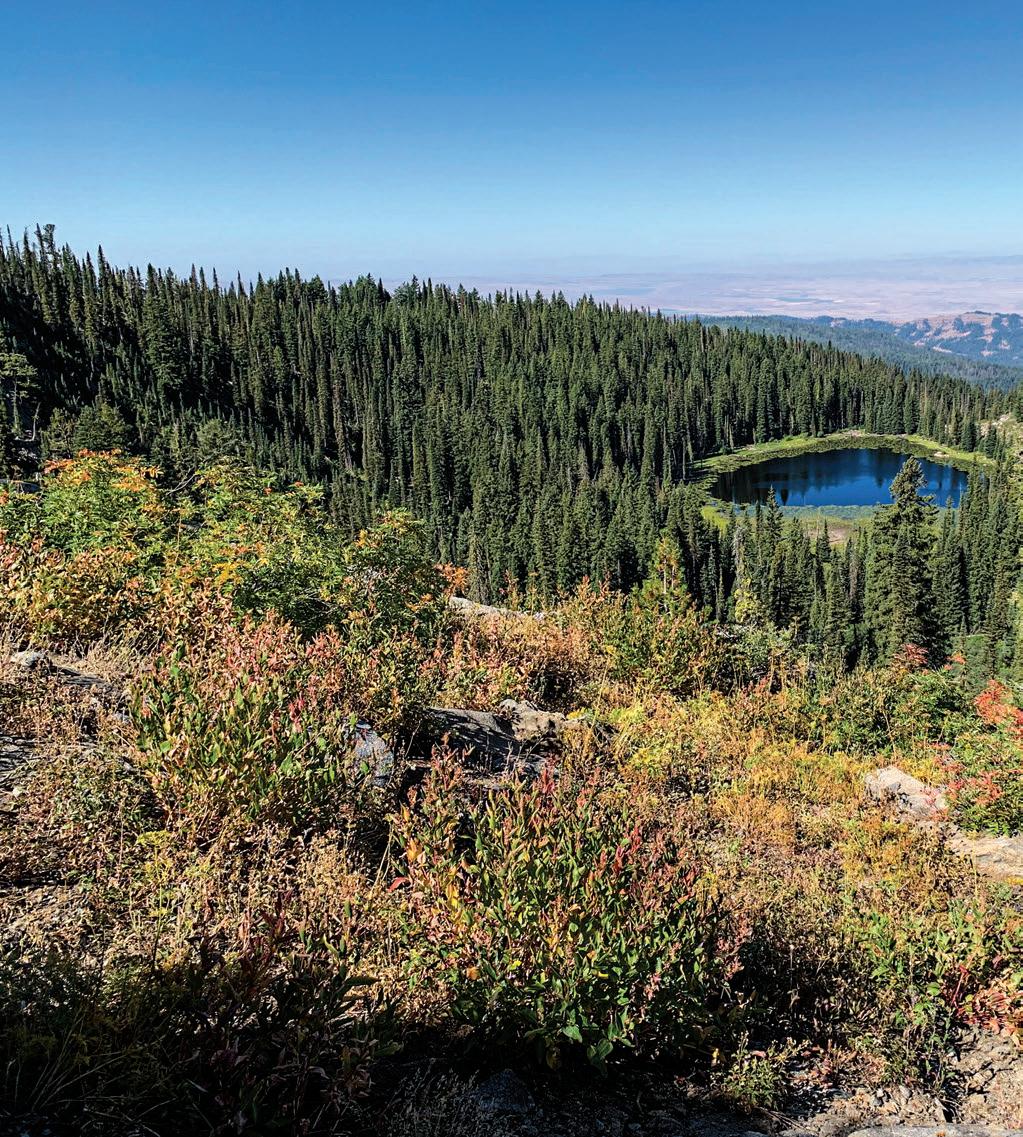
152 Northwest Sportsman SEPTEMBER 2023 | nwsportsmanmag.com
CHEF IN THE WILD
By Randy King
It was early September when I came sliding down the duff-covered side of a mountain with two blue grouse in my pack. My legs were trembling and I was glad to be back at my truck. I’d just had an unusually productive “grouse” hunt for bear season.

You see, my plan had been to hike to the top of a peak that I had been glassing bears on all spring and then located one on opening day of the fall season. It seemed reasonable and doable at the time, so I grabbed my gear and started to put one foot in front of another on a trailless section of Idaho’s Sawtooth National Forest.
I proceeded to spend about 12 hours over two days behind the spotting scope at my glassing location. I found elk, a mountain lion, a couple big ol’ mule deer bucks and exactly zero bears. Even though I was having a good time sleeping like a homeless person in the forest, I packed up on Sunday and started the trek out.
About a third of the way back, I caught a glimpse of movement out of the corner of my eye. It looked like a chicken sprinting away from me. Blue grouse! The weekend might be saved yet!
I DROPPED MY pack and began to shuffle through it for a particular item: my pumppowered pellet handgun. I’d spent too many times in the woods and seen grouse while only armed with my .270. Not willing to make that much noise to harvest a bird while larger-sized game was in the vicinity, I had to just watch them fly or walk off without any better option than throwing a stray rock at them and hoping for the best. No more; now I was ready with my Crosman .177. Go time!
I soon found myself taking aim at a grouse on a branch about 30 feet up a tree and looking directly down at me. I would be a liar if I said I made a clean headshot like I was aiming for. The important part is that the grouse fell out of the tree and I secured it via a creative

nwsportsmanmag.com | SEPTEMBER 2023 Northwest Sportsman 153 COLUMN
WHEN A WING ISN’T A WING, NOR A BUFFALO, BUT IS STILL TASTY
Grouse: verb, informal; to complain angrily: as in “She’s always grousing about how she’s been treated by the management.”
Back when turkeys were just beginning to think about gobbling this spring, a lawsuit was filed in Illinois. Aimen Halim of Chicago sued Buffalo Wild Wings for “false and deceptive marketing and advertising” of its “boneless” chicken wings.
Shocker – boneless wings are not in fact wing meat at all. They are made of breast meat. This is because no matter how big you grow a chicken, it will only ever have two wings, giving the wing meat – a former byproduct that was all but given away many years ago – a higher price per pound than breast meat.
Boneless wings are, effectively, chicken nuggets marketed as “wings.” Two sides have emerged in the boneless wings debate: Those who think boneless wings are simply nuggets and should be called as much, and those who are wrong.
Buffalo Wild Wings has filed for the
case to be dismissed, while at the same time mocking Halim’s claim on Twitter: “It’s true. Our boneless wings are all white
meat chicken. Our hamburgers contain no ham. Our buffalo wings are 0% buffalo,” the company wrote. They even published a more inflammatory tweet, stating, “we don’t give a S---” with a pic of a barbecue-saucecovered nugget prominently featured.
Does Aimen have a history of suing companies for ridiculous things? For sure. Does that mean he is wrong? Not at all. Boneless wings are not wings, so this season when you are hunting grouse and making the recipe below, please – I beg you – call these nuggets and not wings.
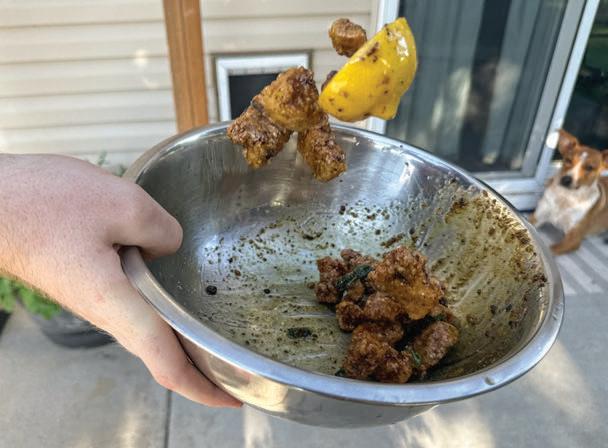

Buffalo Wild Wings did not respond to my request for comment.
As hunters, we can rest assured that we will rarely have enough wing meat from wild birds for this be an issue in our lives. But as civilized bastions of grace and decorum, we should have the good sense to not call our fried breast meat “wings.”
LEMON PEPPER BONELESS NUGGETS
(Really, these are not wings! Recipe credit to Noah King – my culinary-inclined spawn.)
1 tablespoon olive oil
¼ cup corn starch
1 tablespoon lemon pepper seasoning
1 teaspoon garlic powder
1 teaspoon onion powder
154 Northwest Sportsman SEPTEMBER 2023 | nwsportsmanmag.com COLUMN
Lemon pepper boneless breast meat nuggets. (RANDY KING)
Coat the cooked nuggets with the butter sauce how you want, but for a true Chef in the Wild flair, toss them in a bowl. (RANDY KING)
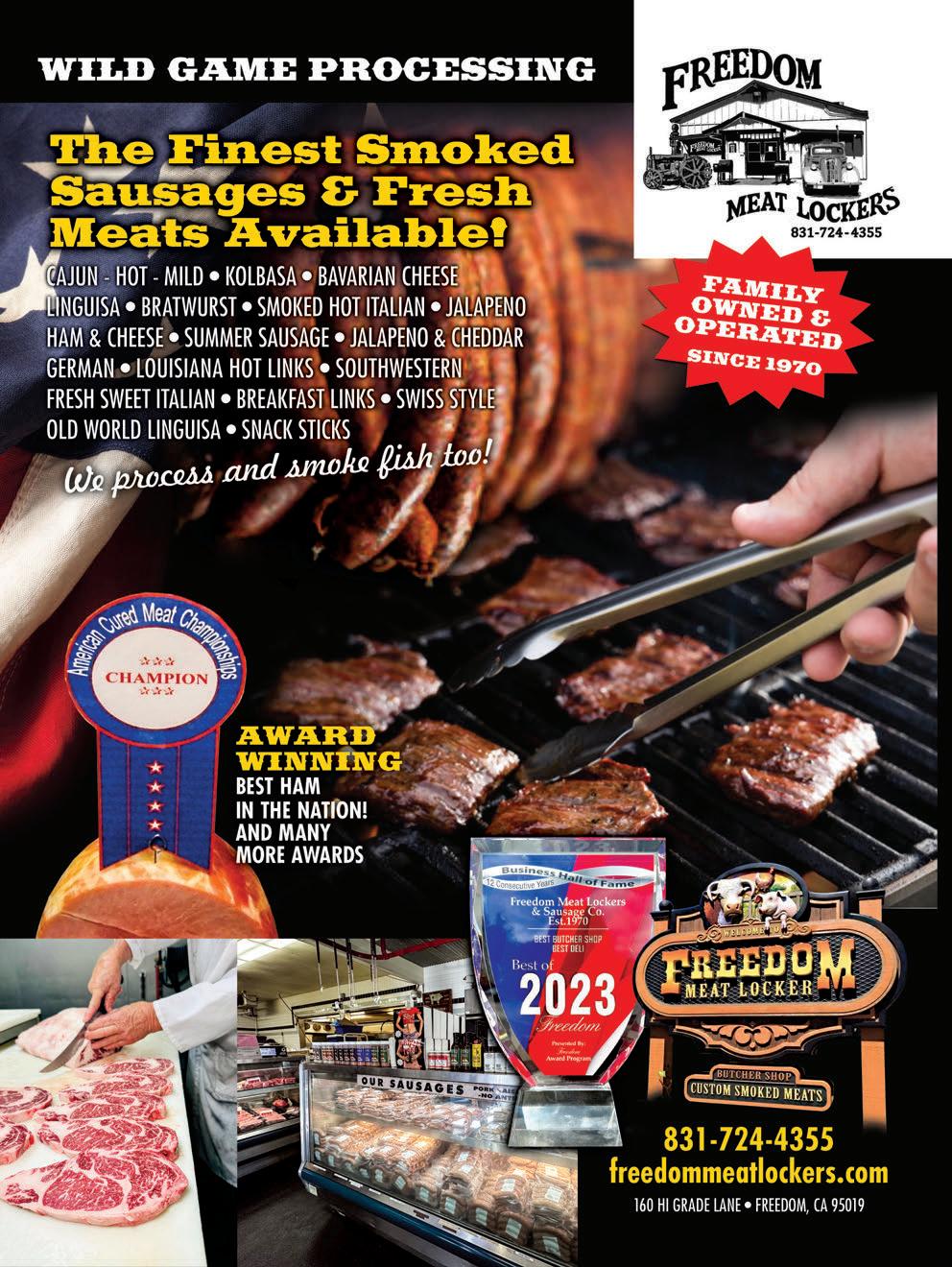
1 teaspoon paprika
1 teaspoon fresh cracked black pepper
1 teaspoon kosher salt
2 grouse breasts, boneless, cut into half-inch cubes
BUTTER SAUCE
1½ sticks butter, melted
1 tablespoon honey
Zest from one lemon
Juice from one lemon
½ lemon, grilled
1 tablespoon mint leaves
1 teaspoon lemon pepper seasoning
Heat oil in 10-inch frying pan until 350 degrees. Hold hot.
While oil is heating, combine the corn starch, lemon pepper seasoning, garlic powder, salt, pepper, onion powder and paprika in a mixing bowl. When combined, toss in the grouse breast meat and coat each nugget thoroughly with the batter. Do not allow them to sit in the dry mix for very long. The moisture will cause them to stick to one another. If you are not cooking them right away, make sure to remove them from the bowl and place them on a plate to ensure that they are not touching one another.
Carefully place the grouse nuggets in the hot oil and fry until GB&D – golden brown and delicious – or about two and a half minutes. Remove the nuggets to a papertowel-lined plate. If you are making more than two grouse breasts at a time, do not overload the fry oil. This will cause the temperature to drop and make your fryer into a goopy mess. Cook in small batches (this recipe would work great with turkey or other “white” meat) so that you get crispy nuggets.
While the meat is cooking, in a small saucepan add the butter, honey, lemon pepper seasoning, zest, juice and mint to create the butter sauce. Cook until all the ingredients combine and are aromatic.
Then, in a large mixing bowl, add the nuggets and sauce, coat the nuggets well and serve immediately. –RK
combination of swear words, tree limbs and hand gestures.
The second grouse died instantly with a pellet through its spine.
Before I knew it, I’d had one of my most successful grouse hunts in years. I can count on one hand the number of times I have limited out on a grouse hunt.
It just does not happen for me. But here I was, armed with a quiet little pellet gun and coming off the mountain victorious. I pack that little pellet gun most places now. It has earned its weight.
Back at home, I tossed the birds into the garage fridge for a few days and then fried them up. NS
A NOTE ON AGING GROUSE
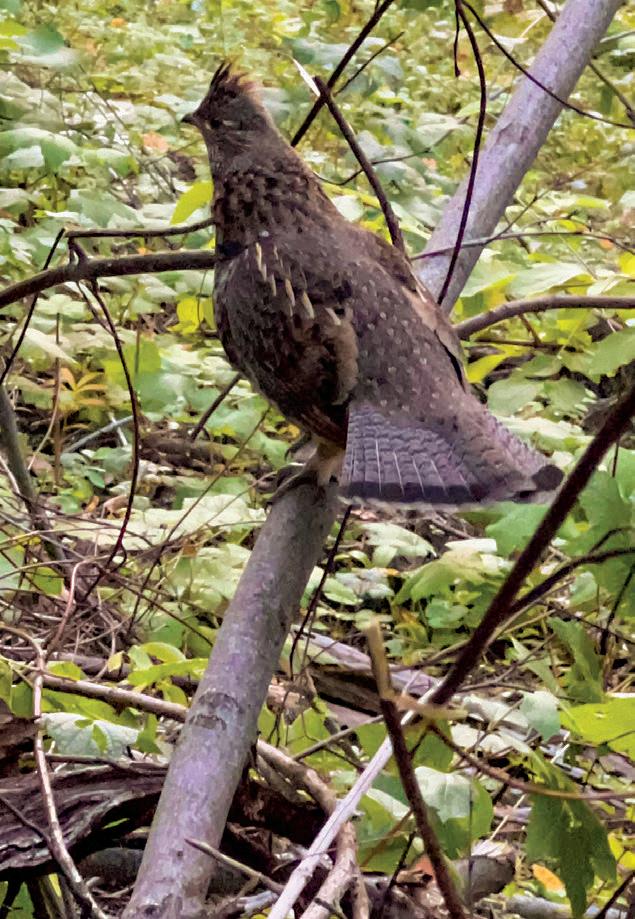
If possible, I like to age my grouse about four days in a refrigerator. When aging a critter – like hanging your deer in a cold garage or meat locker – you are allowing the muscles to relax before processing. You are even allowing for a little controlled microbial rot. This is OK – industrial meat processors do this all the time. Aged meat is not a bad thing. Just be careful when doing it with game birds.
Why? Often game birds are shot with a shotgun, an imprecise weapon at best. Some pellets get driven through the stomach cavity and into the meat. The microbes that can spread out of the stomach are not the ones you want in your meat. So, if you have headshot a grouse, feel free to age it. But you should consume it right away if you are worried that you blasted the poor critter right in the “big meat.” –RK
156 Northwest Sportsman SEPTEMBER 2023 | nwsportsmanmag.com
COLUMN
Headshot grouse can be aged in a fridge or cool spot for several days, as you would a deer. (KNIFE PHOTO CONTEST)
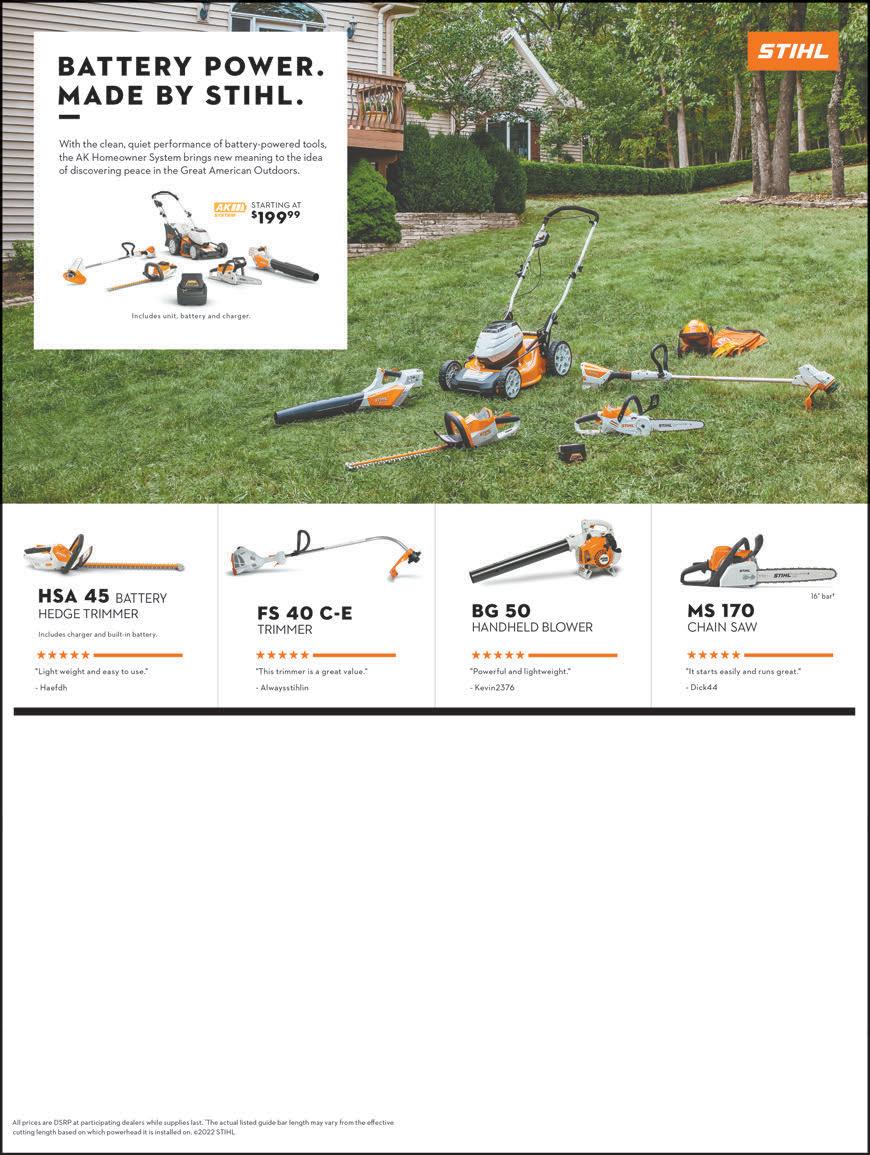
nwsportsmanmag.com | SEPTEMBER 2023 Northwest Sportsman 157 OREGON MEDFORD CRATER CHAINSAW 1321 North Riverside (541) 772-7538 www.craterchainsaw.net
THEY WRITE COUNTRY SONGS ABOUT MORNINGS LIKE THIS.
CONNECTICUT
Connor’s and O’Brien Marina Pawcatuck, CT connorsandobrien.com
Defender Industries Inc. Waterford, CT defender.com
O’Hara’s Landing Salisbury, CT oharaslanding.com
MASSACHUSETTS
Action Marine & Watersports Inc. Holyoke, MA actionmarineholyoke.com
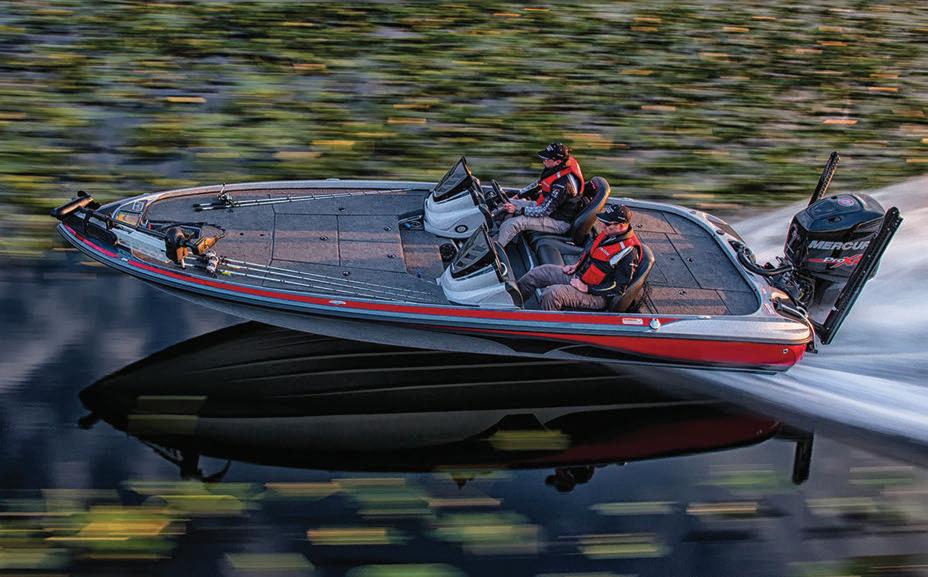
Bill’s Outboard Motor Service Hingham, MA billsoutboard.com
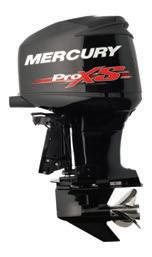
Captain Bub’s Marine Inc. Lakeville, MA captainbubsmarine.com
Doug Russell Marine Worcester, MA WorcesterBoating.com
Essex Marina LLC. Essex, MA essexmarinallc.com
McLellan Brothers Inc. Everett, MA mclellanbrosinc.com

Merrimac Marine Supply Methuen, MA merrimacmarine.com
Nauset Marine-Orleans Orleans, MA nausetmarine.com
Obsession Boats East Falmouth, MA capecodboatcenter.com
Portside Marine Danvers, MA portsidemarine.us
Riverfront Marine Sports Inc. Salisbury, MA riverfrontmarine.com
South Attleboro Marine North Attleboro, MA www.sammarine.com
Wareham Boat Yard W. Wareham, MA wareham-boatyard-marina.com
NEW HAMPSHIRE
Dover Marine Dover, NH dovermarine.com
Winnisquam Marine Belmont, NH winnisquammarine.com
RHODE ISLAND

Billington Cove Marina Inc. Wakefield, RI bcoveyc.com
Jamestown Distributors Bristol, RI jamestowndistributors.com
158 Northwest Sportsman SEPTEMBER 2023 | nwsportsmanmag.com
It’s a glorious sunrise, viewed in fast forward thanks to the power of your 250 ProXS. Because you need to get there while the fish are still eating breakfast. Learn more at mercurymarine.com or visit your local dealer, today.
BUT AT 70 MPH YOU CAN’T HEAR THEM. Master Marine Boat Center, Inc. 503 Jacks Lane Mt Vernon, WA 98273 (360) 336-2176 www.mastermarine.com Everett Bayside Marine 1111 Craftsman Way Everett, WA 98201 (425) 252-3088 www.baysidemarine.com































































































 –Andy Walgamott
–Andy Walgamott
























































 By Jason Brooks
By Jason Brooks






















































































































































































































































 (TROY RODAKOWSKI)
(TROY RODAKOWSKI)

























































